- Literary Terms
- Definition & Examples
- When & How to Use Horror

I. What is Horror?
In literature, horror (pronounced hawr-er) is a genre of fiction whose purpose is to create feelings of fear, dread, repulsion, and terror in the audience—in other words, it develops an atmosphere of horror . The term’s definition emphasizes the reaction caused by horror, stemming from the Old French orror , meaning “to shudder or to bristle.”
Horror literature has roots in religion, folklore, and history; focusing on topics, fears, and curiosities that have continuously bothered humans in both the 12 th and 21 st centuries alike. Horror feeds on audience’s deepest terrors by putting life’s most frightening and perplexing things—death, evil, supernatural powers or creatures, the afterlife, witchcraft—at the center of attention.
II. Example of Horror
Horror should make the reader feel afraid through imagery and language.
As the teenage boy stepped into the old mansion, his friends cackling behind him, he thought he could hear things that, he forced himself to believe, were in his head—rattling bones, scurrying rats, hushed whispers…and the slow drip, drip, drip, coming from a spot he told himself wasn’t really there; the red, oozing stain in the ceiling boards above. He only had to spend one hour in the house and he would prove to his friends that he wasn’t afraid. Just one hour. He took one last glance out the door before shutting out the light of the full moon, enclosing himself in complete darkness, with only the sound of his racing, terrified thoughts.
First, example above uses words and phrases that create a creepy, unsettling air— rattling bones, rats, whispers, oozing, and so on. Second, there is an emphasis on the fact that the main character will be continuing his task alone, which is never comforting. Lastly, the setting—an old and likely haunted mansion, darkness, the full moon—helps to accomplish the feeling of foreboding in the situation.
III. Types of Horror
A. gothic horror.
Gothic horror, also known as gothic fiction or gothic fantasy, is a dark style of fiction that combines horror and Romanticism. Its style combines the artistic pleasures of Romantic literature with the frightening elements of horror, making it terrifying in a seductive and pleasing way. Gothic horrors stories are written both with and without supernatural elements, but are always mysterious in nature. Examples include novels like Dracula, Frankenstein, and Dr. Jekyll and Mr. Hyde .
b. Supernatural Horror
A supernatural horror is work of fiction that relies heavily on supernatural or paranormal elements to drive the story, featuring things like ghosts, monsters, demons, aliens, witchcraft, zombies, and so on. The main source of terror in supernatural horrors is the human reaction to being faced with the unknown, usually in the midst of a serious conflict—i.e. a haunting, a possession, an invasion, a curse or omen, etc.
c. Non-supernatural Horror
A non-supernatural horror is a work of fiction that does not include supernatural elements, The terror of non-supernatural horror comes from the idea that what is happening in the story could plausibly occur in real life—usually involving the possibility of death—making it the ideal style for frightening crime or mystery stories.
IV. Importance of Horror
In what is often considered the most important essay on the horror genre ever written, “Supernatural Horror in Literature,” horror fiction author H.P Lovecraft begins by stating, “the oldest and strongest emotion of mankind is fear, and the oldest and strongest kind of fear is fear of the unknown.” Accordingly, horror is important because it unearths an audience’s deepest nightmares and anxieties and truly pushes the limits of human emotion and fear. Appreciably, horror writers often employ topics and ideas that the everyday person would be apprehensive of addressing.
V. Examples of Horror in Literature
Short stories are an ideal and widely used form for horror literature, and Edgar Alan Poe is one of literature’s greatest Gothic horror story writers. His short stories are quintessential pieces of the genre and have been inspiring horror authors for decades. Below is a selection from his famous work, “The Tell Tale Heart”:
There came a light tap at the library door—and, pale as the tenant of a tomb, a menial entered upon tiptoe. His looks were wild with terror, and he spoke to me in a voice tremulous, husky, and very low. What said he?—some broken sentences I heard. He told of a wild cry disturbing the silence of the night—of the gathering together of the household—of a search in the direction of the sound; and then his tones grew thrillingly distinct as he whispered me of a violated grave—of a disfigured body enshrouded, yet still breathing—still palpitating—still alive!
Poe expertly chooses his words to develop an air of terror, shock, and mystery. To learn more about the victim—the disfigured but still breathing body—the reader will have to continue, though they fear to find out who or what is responsible for this gory scene.
Not all horror has to be directly bloody or violent with its language. For example, William Faulkner’s short story “A Rose for Emily” uses subtle cues and an air of mystery throughout the plotline, without truly revealing Emily’s dark side until the end of the tale—
The man himself lay in the bed. For a long while we just stood there, looking down at the profound and fleshless grin. The body had apparently once lain in the attitude of an embrace, but now the long sleep that outlasts love, that conquers even the grimace of love, had cuckolded him. What was left of him, rotted beneath what was left of the nightshirt, had become inextricable from the bed in which he lay; and upon him and upon the pillow beside him lay that even coating of the patient and biding dust.
In this passage, Faulkner tells the audience what happened to a man that disappeared from Emily’s town (and the story) years before. He has been found—or rather, his skeleton, which is subtly revealed through the language: a “fleshless grin.” With this short passage, the reader learns that there has been a murder, who the murderer is, and that Emily is more disturbed than anyone ever could have imagined.
VI. Examples of Horror in Pop Culture
Present day author Stephen King is a giant in contemporary horror fiction. For 40 years his works have been dominating the horror market in literature and have had a huge presence in film and television—in fact, hundreds of his works have been adapted for the screen. Below is a clip from the icon horror novel and movie of the same name, The Shining:

This clip exhibits a scene from the film that has been a symbol of the horror genre for decades, including the infamous and often repreated phrase, “Here’s Johnny!”
Many pieces of horror literature have become cult classic horror films, for example, William Peter Blatty’s supernatural horror novel The Exorcist and the subsequent film, for which he also wrote the screenplay. Below is a clip of a well-known scene from the film, in which the priests perform an exorcism on Regan, a young girl whose body it has been possessed by a demon:

The horrifying nature of this scene is obvious—a possessed child with a grotesque appearance, the presence of a supernatural spirit or demon, the use of religious power or magic to solve the situation, and so on. Though its visual effects may now be outdated, The Exorcist remains one of the most notoriously terrifying and disturbing horror movies to date.
VII. Related Terms
A thriller is a genre of whose primary feature is that it induces strong feelings of excitement, anxiety, tension, suspense, fear, and other similar emotions in its readers or viewers—in other words, media that thrills the audience. Essentially all horrors are thrillers because of the nature of their content; however, not all thrillers are horrors.
VIII. Conclusion
In conclusion, horror is a genre of literature designed for readers who want to be frightened and have their imaginations expanded through fear of the unknown and unexpected. It can be combined with other genres and styles to develop creative and frightening tales that leave audiences on the edge of their seats.
List of Terms
- Alliteration
- Amplification
- Anachronism
- Anthropomorphism
- Antonomasia
- APA Citation
- Aposiopesis
- Autobiography
- Bildungsroman
- Characterization
- Circumlocution
- Cliffhanger
- Comic Relief
- Connotation
- Deus ex machina
- Deuteragonist
- Doppelganger
- Double Entendre
- Dramatic irony
- Equivocation
- Extended Metaphor
- Figures of Speech
- Flash-forward
- Foreshadowing
- Intertextuality
- Juxtaposition
- Literary Device
- Malapropism
- Onomatopoeia
- Parallelism
- Pathetic Fallacy
- Personification
- Point of View
- Polysyndeton
- Protagonist
- Red Herring
- Rhetorical Device
- Rhetorical Question
- Science Fiction
- Self-Fulfilling Prophecy
- Synesthesia
- Turning Point
- Understatement
- Urban Legend
- Verisimilitude
- Essay Guide
- Cite This Website
Definition of Horror
Horror is one of the fiction genres that includes paranormal beyond scientific knowledge. Although horror means strong feelings of fear, fright, shock, or terror, it falls into the literary realm as a type of narrative . It evokes strong feelings of shock, terror, revulsion, fear, or outrage when readers go through such a narrative. It means horror fiction that intends to create fear in the minds of the readers. Some readers want such fiction that could satisfy their desire for terror and horror.
Types of Horror Fiction
There are several types of horror fiction. For example, some fictive narratives are termed comedic horror while some are dark fantasies . Some are gothic in nature while others are paranormal as well as futuristic, psychos, and post-apocalyptic. In fact, there are as many types of subgenres of horror fiction as many types of fear or terror.
Examples of Horror in Literature
Dracula by Bram Stoker
I did not sleep well, though my bed was comfortable enough, for I had all sorts of queer dreams . There was a dog howling all night long under my window, which may have had something to do with it; or it may have been the paprika, for I had to drink up all the water in my carafe, and was still thirsty. Towards morning I slept and was wakened by the continuous knocking at my door, so I guess I must have been sleeping soundly then.
This passage occurs in the novel , Dracula , written by Bram Stoker. The narrator narrates his ordeal of how he is dreaming and how the howl of a dog terrifies him. The narrator is of the view that despite having drunk to his full, he feels thirsty. This shows that he is constantly undergoing fear and terror which are the first requisite of a good horror story . Therefore, Dracula has been termed the best horror fiction of its time.
Frankenstein by Mary Shelley
A few incidents now and then directed me, and I possessed a map of the country; but I often wandered wide from my path. The agony of my feelings allowed me no respite; no incident occurred from which my rage and misery could not extract its food; but a circumstance that happened when I arrived on the confines of Switzerland, when the sun had recovered its warmth and the earth again began to look green, confirmed in an especial manner the bitterness and horror of my feelings.
Although Frankenstein is not a horror story, still the issues with Frankenstine involving the Monster that he has created create horror and terror in the hearts of the readers. For example, in this narrative, the Monster tells how he feels when he visits different places in search of his creator, Victor Frankenstein, from whom he is seeking revenge for creating him in this world where he has undergone only misery and sufferings. This creates horror and terror in the minds of the readers.
Dr. Jekyll and Mr. Hyde by Robert Louis Stevenson
The old gentleman took a step back, with the air of one very much surprised and a trifle hurt; and at that Mr. Hyde broke out of all bounds and clubbed him to the earth. And next moment, with ape-like fury, he was trampling his victim under foot and hailing down a storm of blows, under which the bones were audibly shattered and the body jumped upon the roadway. At the horror of these sights and sounds, the maid fainted.%
This passage shows an incident where Mr. Jekyll, after having turned into Mr. Hyde, comes out of his house and confronts an old man to whom he clubs to death. Following this, he tramples upon his victim and runs away. This entire scene, when read in loneliness, makes the readers have their hairs stand on their ends. It is because it creates fear and terror in the minds of the readers about the features as well as actions of Mr. Hyde.
Beowulf translated by Seamus Heaney
In he came then, the thane’s commander, the arch-warrior, to address Hrothgar: his courage was proven, his glory was secure. Grendel’s head was hauled by the hair, dragged across the floor where the people were drinking, a horror for both queen and company to behold. They stared in awe. It was an astonishing sight
These lines occur in Beowulf , a classical Anglo-Saxon epic . The lines tell how Hrothgar, the brave Dane, fights against Grendel and after beheading him, brings his head before the king, Hrothgar. As he is shown dragging the head in these lines, it seems quite a horrible scene. Therefore, this side of the epic shows it as a horror narrative, the reason that it has been placed in this genre .
i am Legend by Richard Matheson
Both the tank and the hothouse were undamaged today. He went to the house for a hammer and nails. As he pushed open the front door, he looked at the distorted reflection of himself in the cracked mirror he’d fastened to the door a month ago. In a few days, jagged pieces of the silver-backed glass would start to fall off. Let ‘em fall, he thought. It was the last damned mirror he’d put there; it wasn’t worth it. He’d put garlic there instead. Garlic always works.
This passage occurs in the novel, I Am Legend. Richard Matheson presents Robert Nevill who feels that vampires are almost everywhere. But when he sees his own reflection in the mirror, he is filled with horror. The mention of Garlic that also occurs in Dracula seems an antidote against the vampires. That is why this novel is placed under this genre.
Functions of Horror
Although horror in horror fiction is a source of entertainment, it sometimes releases the pent-up emotions of the readers after which they feel relieved. Some readers merely go through horror fiction to experience horror, though, such readers generally feel fear and terror after reading the story. Overall, its function is just entertainment and nothing else.
Related posts:
- Deuteragonist
- Equivocation
- Science Fiction
- Turning Point
- Supporting Sentence
- Urban Legend
- Antonomasia
- The horror! The horror!
- Comic Relief
- Black Humor
- Narrative Poem
- Dramatic Monologue
- Existentialism
- In Medias Res
- Short Story
- Romanticism
- Feminine Rhyme
- Metaphysical
- Auditory Imagery
- Sensory Language
- Implied Metaphor
- Rhetorical Device
- Sound Devices
- Exact Rhyme
- Examples of Symbolism in Poetry
Post navigation


Horror as a Literary Genre
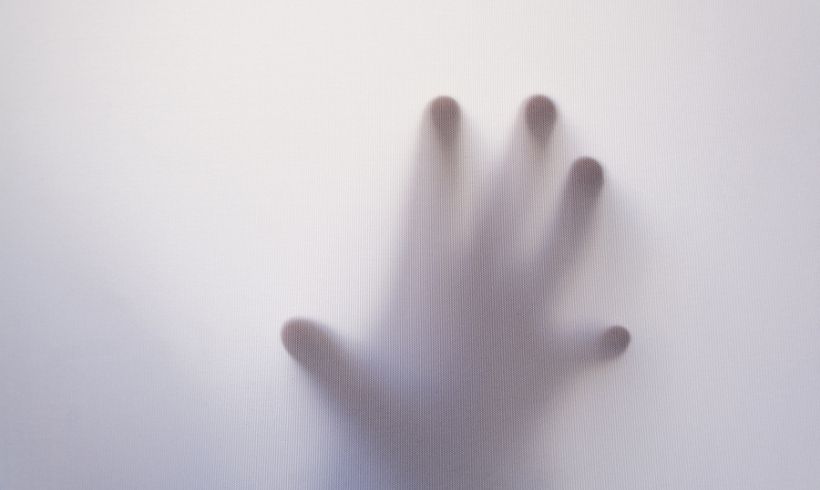
The dictionary defines horror as a genre of fiction that has the purpose of making us feel fear, repulsion, and terror.
In short, an environment of horror is created for the consumer of the content. In fact, the word horror comes from the French word orror , which refers to bristling or shuddering at something.
People read horror stories or novels because they enjoy fear. So say, psychologists and experts.
According to H.P. Lovecraft, “ the oldest and strongest emotion of mankind is fear, and the oldest and strongest kind of fear is the fear of the unknown. “
In this genre, atmosphere and emotions are as crucial to the narrative as characters and plot.
Below, we’ll take a look at the most important aspects of horror , including its origin, characteristics, and the subgenres that exist from its influence. In addition, you will find our top classic horror books.
At the end we invite you to visit:
| Free Books: 100+ Horror Books for Free! [PDF]
| Best Books: The Best 25 Horror Books [Paid]
| Horror Authors: 15 Authors of Horror Books You Must Read
The origin of the horror genre
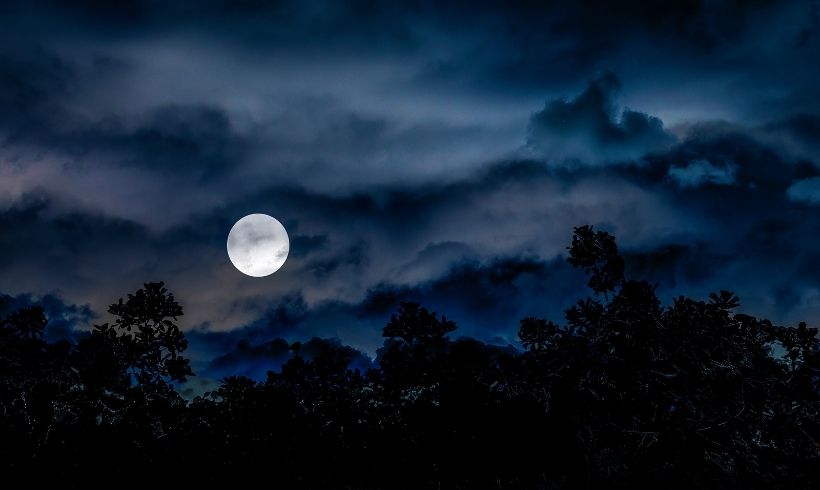
Horror in literature has existed since the ancient civilizations of Greece and Rome. Back then, authors explored themes such as death, demons, the afterlife, and spirits.
Euripides is the perfect example of this. In his play Hippolytus , the author addresses the lack of empathy and jealousy as attitudes that can kill us.
Inquisition and heresy
However, modern horror literature has its roots in the Inquisition . Once the Vatican decided to return to the orthodoxy of the faith in 1235, the obsession with heretics and accusations of witchcraft increased.
This would contribute significantly to the imagination of the authors of the time. In 1307, Dante published The Divine Comedy , a book that greatly influenced writers of later generations, at least until John Milton’s Paradise Lost was published (1667).
Books such as The Witches’ Hammer (1486) created a strong belief in witchcraft that would grip Europe for at least two hundred more years.
From 1580 on, dramaturgy was also imbued with a new kind of terror.
Plays such as Hamlet (1600), Macbeth (1605), and The Spanish Tragedy (1585) brought death to the English stage , and would also contribute to the artistic need for writers to produce horror-based fiction.
The gothic novel: The starting point
Horace Walpole would be the author who would inaugurate the sub-genre of the Gothic novel in 1765.
The work, published as The Castle of Otranto, was the first horror story written with coherence and a “legitimate” literary form, according to experts.
Later, Anne Radcliffe would publish The Mysteries of Udolpho , the second most influential novel in the horror genre.
The influence of this narrative can be seen in authors such as Sir Walter Scott and Lord Byron , among others. Charles Brockden Brown and Matthew Lewis also made great contributions to the development of the genre.
While there are many important representatives of horror literature, especially the Gothic novel, Edgar Allan Poe is undoubtedly the master of the subgenre.
The American author not only dedicated himself to writing in this new style but also made important contributions to the development of horror narratives in general.
Characteristics of the horror genre
To understand what the essence of this type of story is and why it differs from other types of fiction, it’s time to take a look at the characteristics of the genre.
This way, if you are also a developing writer, you can take note of some key points.
The narrative focused on negative reactions
In books of this genre, the author seeks to lead the reader to reactions of fear, uncertainty, anguish, deep tension, and anxiety.
The horror narrative prioritizes the description of desolate and mysterious environments , as well as the development of the characters’ psychology based on their fears and contradictions.
Different types of characters
In horror stories, you won’t only find monsters, witches, and zombies. Characters can be conventional , people like you and me who may or may not be the main characters of the plot.
On some occasions, authors resort to mysterious and sinister-minded characters , while other writers lean more towards fantastic creatures.
Elements of surprise and lots of suspense
We already know that horror literature is scary, but making fear truly surprising and overwhelming is a complex thing.
One of the most important characteristics of horror novels or stories is that readers feel invited to be part of the story based on their beliefs and thoughts . Therefore, the experience is more “immersive”.
Suspense is also crucial to this. Horror and psychological horror works, for example, show scenarios in which we always expect a specific event to occur, and something completely different and unexpected happens.
In fact, even if we know where a character is headed and what might happen to them, there is still waiting and anxiety.
Sub-genres of horror
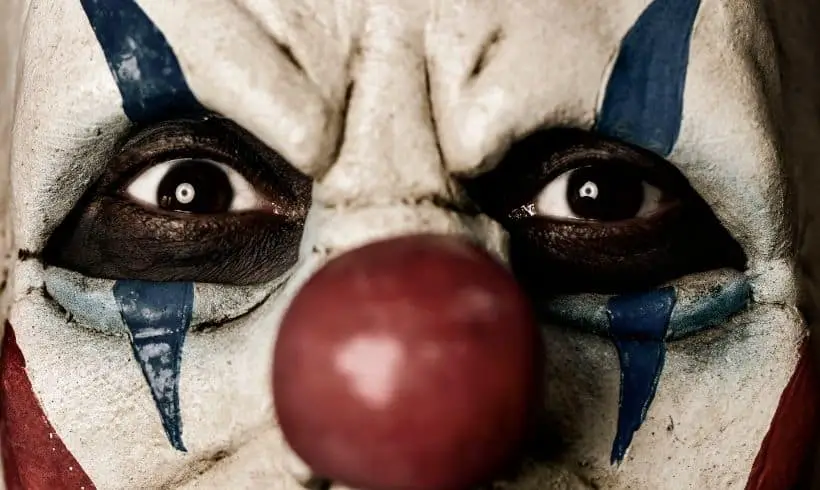
Due to the universal character of horror, different subgenres have developed that possess the characteristics mentioned above, but also include their own particularities.
Gothic horror
Its main representative is the gothic novel, and basically focuses on the experience of death , but fuses it with other elements or parts of the plot, such as romance or family love.
Some notable works are The Raven (Edgar Allan Poe), Frankenstein (Mary Shelley), and Bram Stoker’s Dracula .
Paranormal or supernatural horror
This subgenre is based on elements such as ghosts, demons, extraterrestrials, monsters, witchcraft, zombies, etc. In addition, it may touch on topics that have not been explained by science.
The main source of fear in these stories is the conflict between humans and the supernatural. For example, exorcisms, possessions, invasions, omens, curses, etc.
This subgenre has to do with any practice or ritual that is not considered a science or religion.
Here you will find a lot of magic , astrology, extrasensory perceptions, divinations, spiritualism, and alchemy, among many other practices.
Survival horror
In this type of story, both the narrator and the reader lose control of the difficulties that arise in the plot.
The main characters are victims of persecution , so they try at all costs to survive.
This subgenre invites the protagonists to become heroes, not in the traditional way, but through overcoming their own fears .
Science fiction horror
Science fiction-based horror stories blend the best of two worlds .
The line between the two genders is much thinner than it seems, but both converge with ease due to the enigmas that science hides.
Frankenstein or the Modern Prometheus was the first successful reference of the subgenre.
Psychological horror
This terror is focused on the fear of its characters, their vulnerabilities, superstitions, and guilt, that is, on the dark side of their psyche.
The narrative in this subgenre focuses on creating subtle and suggestive effects rather than simply frightening . In this type of writing the author’s emotionality seeks to be affected by mystery and suspense.
The best classic horror books
Below, you will find five horror books that transcended time due to the strength of their stories and the way in which they manage to challenge the reader through their vulnerabilities.
Frankenstein or The Modern Prometheus by Mary Shelley (1823)
This story introduces Victor Frankenstein, an intelligent young man, and science fanatic who becomes obsessed with becoming the first scientist to bring a corpse to life. However, the experiment goes wrong and a monster is born by accident.
The Strange Case of Dr. Jekyll and Mr. Hyde by Robert Louis Stevenson (1886)
This mysterious tale tells the story of Dr. Jekyll, who develops a serum that separates his good side from his sinister alter ego.
It is just this dark side, turned into a monster, that takes control of his mind at night as an unpredictable and voracious killer.
The Rats in the Walls by H.P. Lovecraft (1924)
The book tells the story of Delaporte, a man who moves to a dilapidated property in Massachusetts after the death of his son in the war.
Like other stories by the author, the book depicts the struggle between man and nature and specifically addresses the issue of cannibalism.
View on Amazon
Psycho by Robert Bloch (1959)
The story depicts Bates, a motel caretaker who is troubled by the death of his mother.
As a result of his loss, the man suffers from a personality disorder and dresses as a woman to commit a series of bloodthirsty murders.
It by Stephen King (1986)
It is one of the most important and successful works of the master of horror. The story presents the town of Maine, which is the victim of malevolent energy that hides behind clown makeup.
A group of children, terrified by the creature, decide to fight it.
If you have not yet read books of the horror genre, we recommend these and many more that you can find on our website.
Other articles that may interest you
What is Psychological Horror?
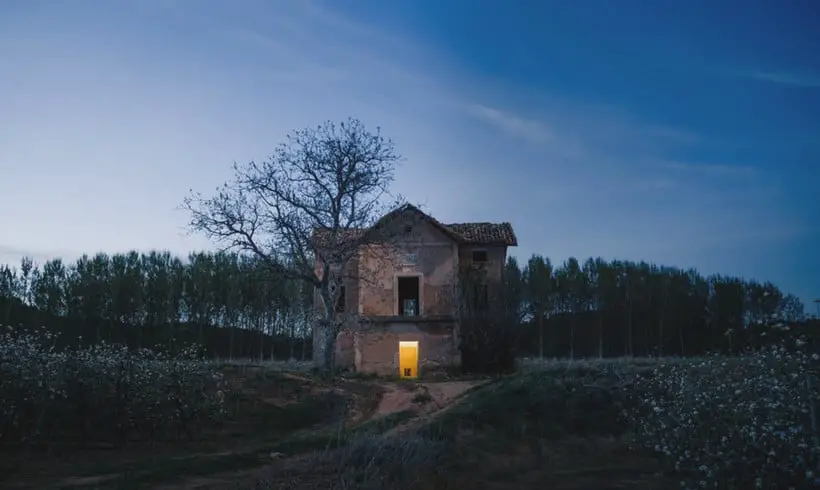
On this occasion, we will delve into this type of literary fiction, we will tell you what psychological horror is,…
What was the First Horror Book or Tale?
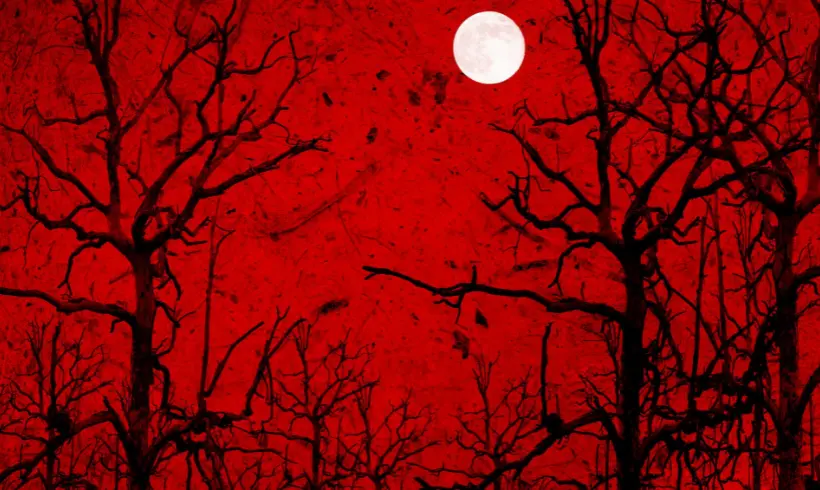
If you have read a horror story or novel, you will know that this fiction genre is designed to scare…
What is the Most Read Horror Book?
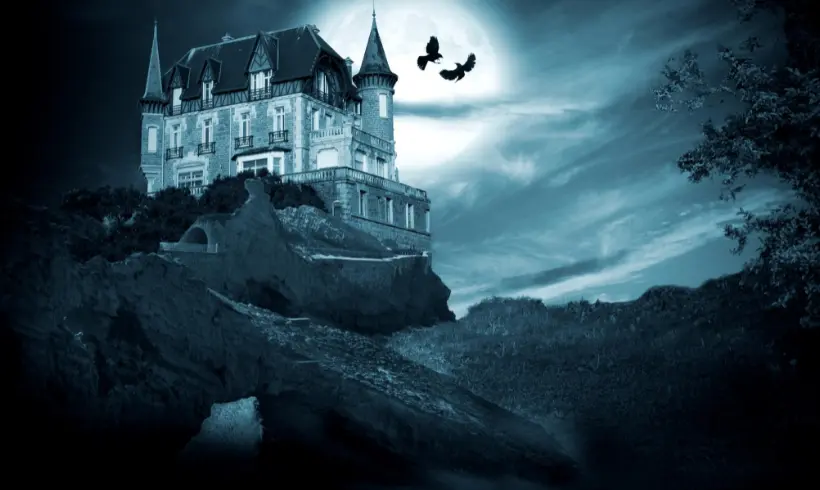
Are you curious to know which is the most read horror book in the world? Well, in this article we…
What is the Scariest Book in the World?

Surely you are wondering what is the most terrifying horror book in the world and that is why you are…
TOP 9 Horror Books Made into Movies
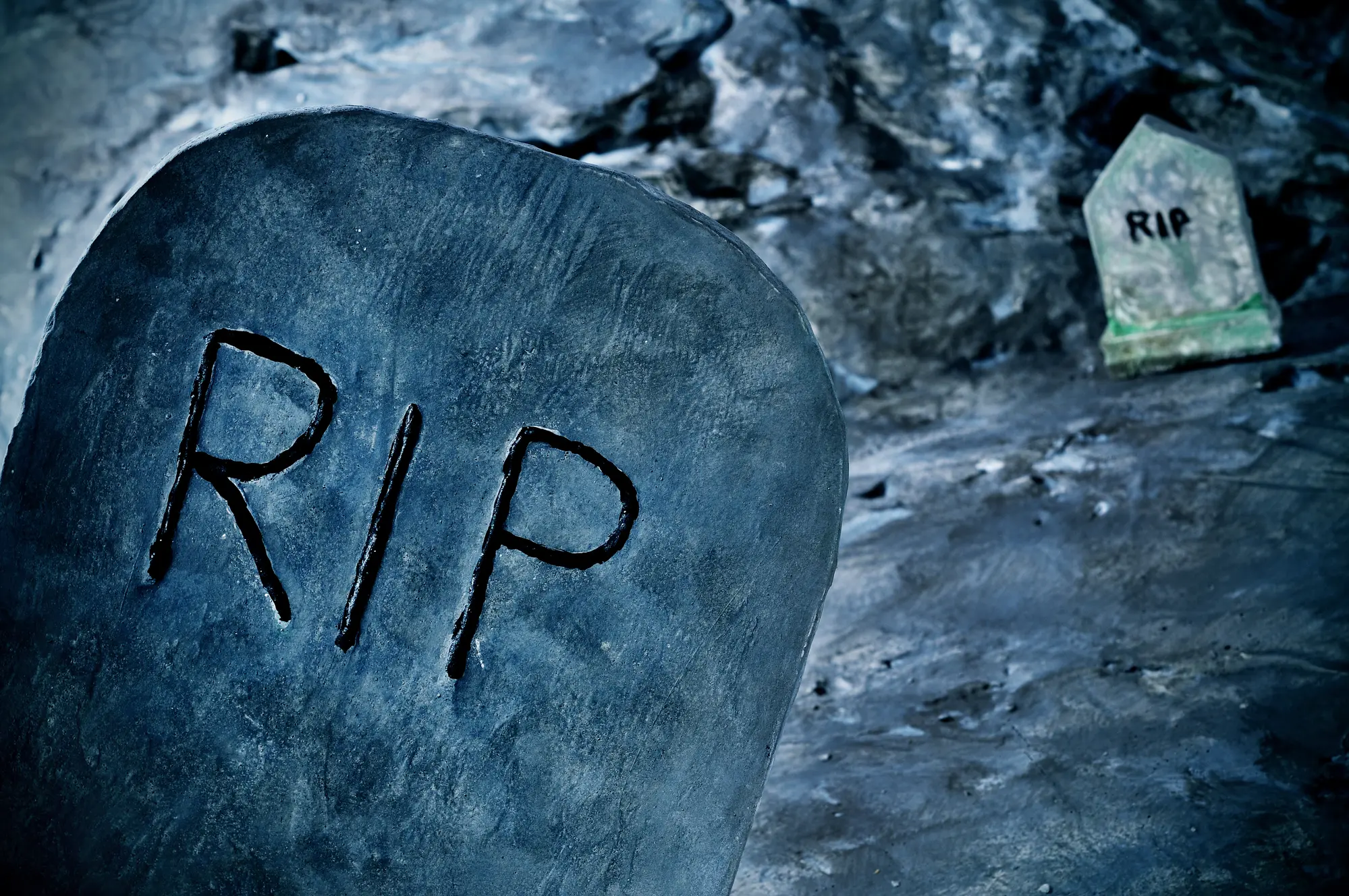
Looking for horror books made into movies? There are many adaptations, but here we will tell you about the most…
5 Horror Book Sagas That Will Make You Cringe

When we talk about horror book sagas, there is a wide range of options. As with fantasy, adventure, or sci-fi,…
Most Famous Horror Books That Won’t Let You Sleep

No matter how we consume horror stories, the truth is that it is an overwhelmingly popular genre. Its success is…
Horror Books
| Children's Horror Books
| Cosmic Horror Books
| Ghost Horror Books
| Gothic Horror Books
| Horror and Romance Books
| Horror and Science Fiction Books
| Horror Books for Halloween
| Horror Books for Teenagers
| Horror Books with Haunted Houses
| Horror Books Written by Women
| Horror Short Stories
| Paranormal Horror Books
| Psychological Horror Books
| Suspense Books
HELP US SPREAD THE HABIT OF READING!

InfoBooks is a website to download free books legally.
LINKS OF INTEREST:

- Movies & TV
- Big on the Internet
- About Us & Contact
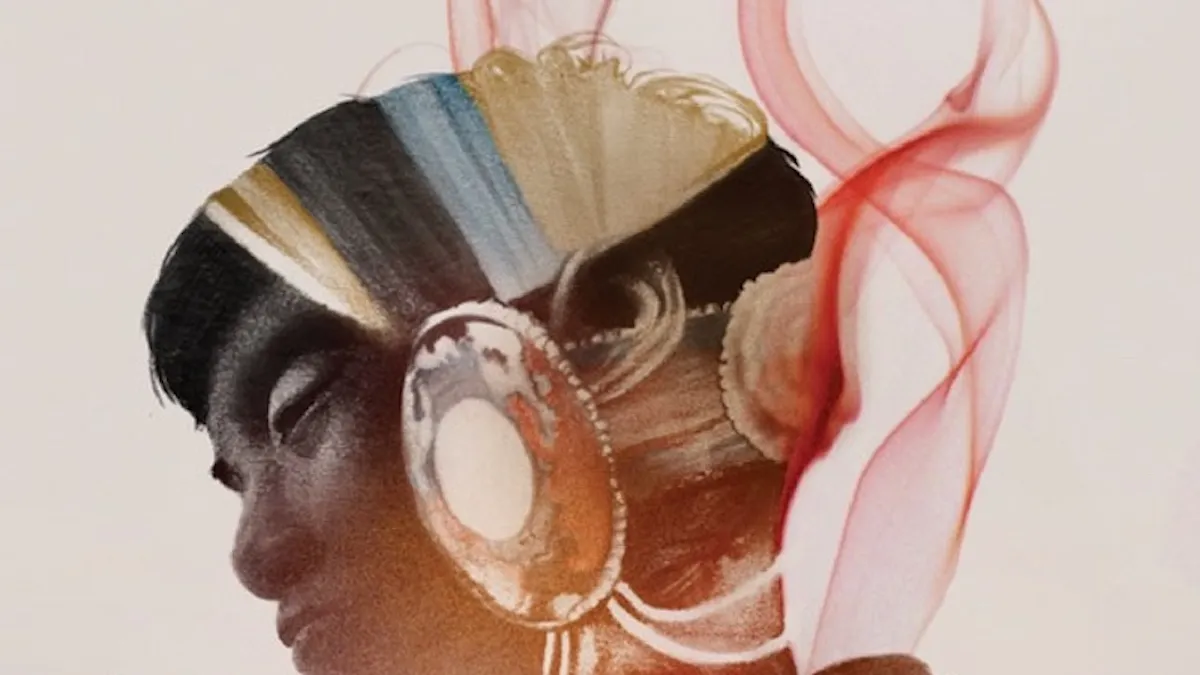
The 10 Best Literary Horror Books To Read in Your Creepy Castle Library
A wingback chair, a goblet of wine, a candelabra casting unnerving shadows on the stone walls around you … what more do you need to while away the hours on a chilly autumn evening ? Oh, yeah—an amazing literary horror novel.
What is literary horror, exactly? The genre has a broad definition, which I’ve seen include everything from wet-your-pants thrillers to gentle, contemplative ghost stories . Not everyone agrees on a single definition, and that’s okay. For the purpose of this list, I’m defining literary horror as fiction that’s primarily and recognizably a horror story, but also has complex psychological elements , lyrical prose, or social commentary. Could that describe a lot of horror fiction? Yep! “Literary” is a slippery and ever-changing term, and it’s not easy to whittle a list like this down to 10.
Nevertheless, here’s my attempt: the 10 best literary horror books. Some of these are downright scary, others lean more into macabre beauty; most embrace a little of both.
Song for the Unraveling of the World by Brian Evenson
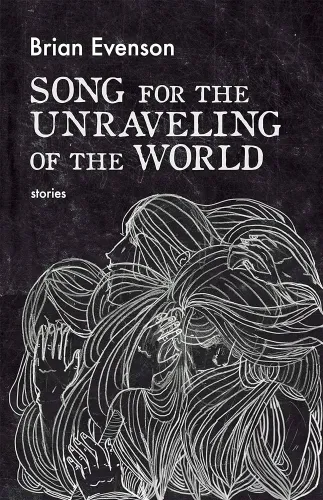
If you throw a dart at Brian Evenson’s work, you’re guaranteed to hit something good, so feel free to start your Brian Evenson journey with any of his books. His short story collection Song for the Unraveling of the World just happens to be my personal favorite, filled with bite-sized atmospheric spookies. These stories run the gamut from alien abductions to hallucinatory dream sequences to murderous film directors. They’re a trip.
The Haunting of Hill House by Shirley Jackson
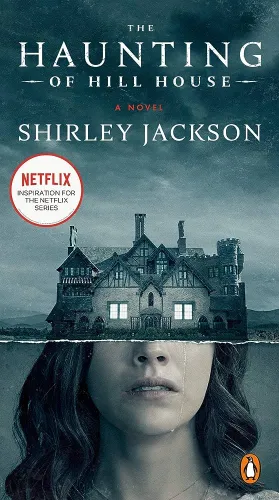
Don’t you dare close out this year’s spooky season without having read at least one book by the queen of literary horror, Shirley Jackson. The Haunting of Hill House , which served as inspiration for the Netflix series of the same name, tells the story of four eccentric characters who descend on a supposedly haunted house and try to figure out whether the haunting is real. This novel is a gradually unfolding story of psychological horror.
The Changeling by Victor LaValle
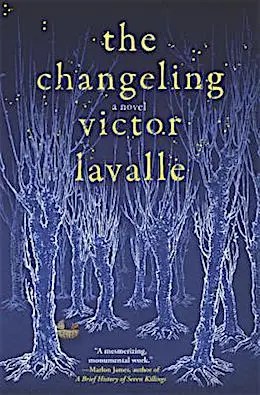
Victor Lavalle’s The Changeling is also on our list of best folk horror books , but make sure to grab it if you love a meaty literary read. When Apollo Kagwa’s wife goes missing, he begins to explore a strange, almost parallel-universe version of New York City as he searches for her. The horror elements in this book are great, but you’ll also love the surreal, meandering journey through Apollo’s life as a husband and father. The Changeling was also recently adapted into a series starring LaKeith Stanfield on Apple TV+.
Her Body and Other Parties by Carmen Maria Machado
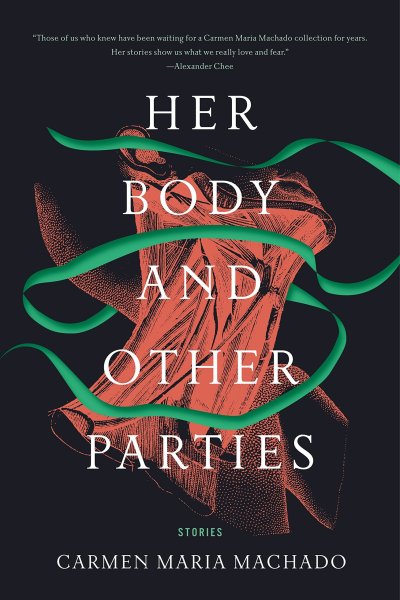
Carmen Maria Machado made a splash in 2017 with her debut story collection, Her Body and Other Parties . This beautifully written collection includes a retelling of “The Green Ribbon,” a folktale in which a girl wears a mysterious green ribbon around her neck; a Law & Order SVU episode featuring murdered girls with bells for eyes; and more.
Revenge: Eleven Dark Tales by Yoko Ogawa
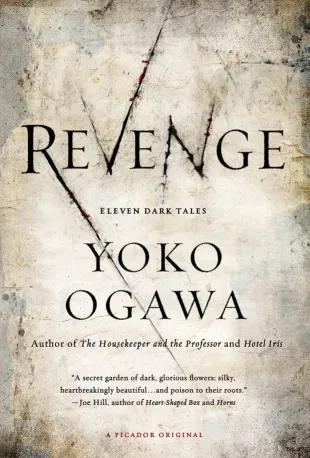
First published in Japan in 1998, Yoko Ogawa’s Revenge consists of interconnected stories about murder, torture, and other taboo subjects. However, the horror elements in the collection take a back seat to its character studies, with each story prying open a character’s psyche to see what’s roiling inside. Read this one if you’re not looking for a visceral scare, but want to get a taste of the darker side of fiction.
Mapping the Interior by Stephen Graham Jones
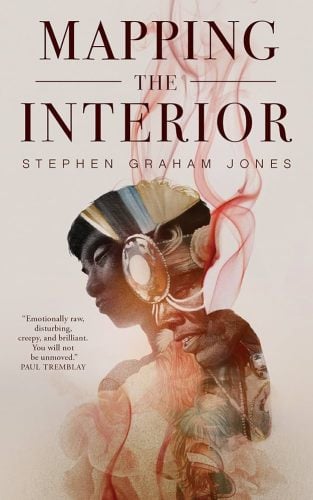
Stephen Graham Jones’ Mapping the Interior is a surreal journey through a house that’s bigger on the inside. When a 15-year-old boy sees a figure who looks like his dead father walking through a doorway, he sets out to map the impossible topography of his home—and ends up putting his family in grave danger.
Ghost Wall by Sarah Moss
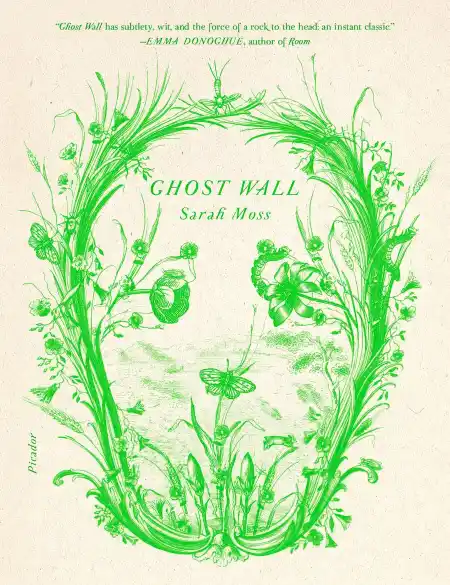
In Ghost Wall , young Silvie’s family joins a group of archaeology students living like neolithic Britons, foraging and hunting in handspun linen tunics. Sounds picturesque, right? Little do the students know that Silvie’s domineering father harbors a deadly obsession with the past. This novella is a tense story set against the peculiar landscape of modern rural England, perfect for fans of The Wicker Man .
The works of Edgar Allan Poe
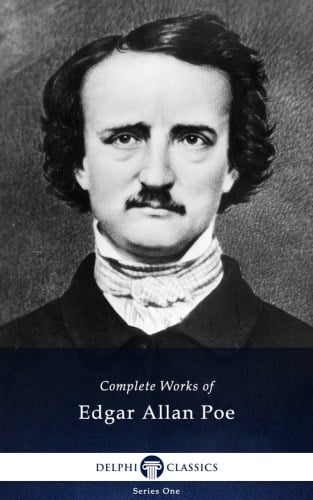
No one does horror like the master of the southern gothic tale, Edgar Allan Poe. There are too many great stories and poems to list here— The Fall of the House of Usher, The Raven, The Tell-Tale Heart, The Cask of Amontillado , The Masque of the Red Death —so do yourself a favor and get an edition of his collected works. Or selected works. Or essential works. Basically, if you see a thick book with his face on the cover, you’re probably good to go.
Frankenstein by Mary Shelley
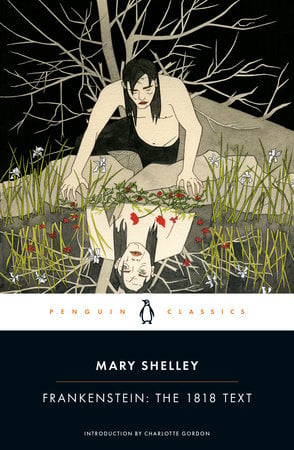
Generally considered the first true work of science fiction, Frankenstein is seared into our cultural memory, but Mary Shelley’s 1818 novel is much deeper and richer than all the caricatures that came after it would have you believe. When Dr. Victor Frankenstein successfully reanimates dead tissue in the form of an eight-foot-tall human, he unleashes a hideous monster on the world—and sparks philosophical questions about consciousness, prejudice, and human rights.
Dracula by Bram Stoker
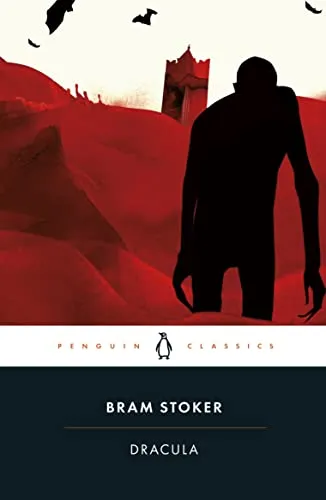
Bram Stoker’s Dracula is the quintessential gothic horror novel, and the book that has inspired countless other vampire stories. English solicitor Jonathan Harker visits a reclusive Transylvanian count to settle a real estate matter. It sounds like it’d be a fun business trip, but you know what happens next: the count in question is none other than the feared centuries-old vampire Dracula. Harker and a motley cast of beloved characters, including the vampire hunter Abraham Van Helsing and the vermin-eating Renfield, have to face Dracula’s formidable powers (and appetite). If you haven’t read Dracula yet, now’s the time—it’s got drama, adventure, humor, and all the vampiric horror you could want.
(featured image: Tordotcom)
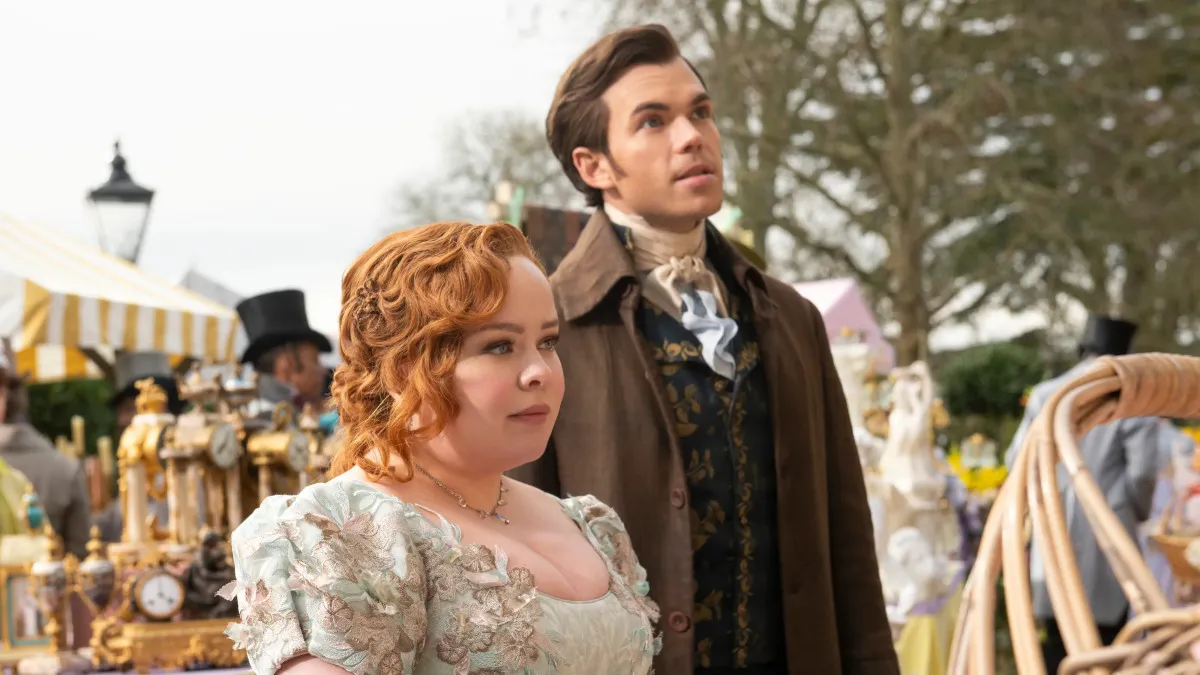
Columns > Published on February 22nd, 2018
Horror: Defining the Genre, Sub-genres, Styles, and More
Two of my favorite topics in all the world are genre and horror. I'm simply fascinated by the ways that we, as creators and consumers, decide to delineate and define genre. What "counts" as what? Who decides? When is it black and white vs. shades of gray? Horror, in particular, is a fascinating conversation to have, not just because I like it so much, but because of all the genres, horror probably has the most stigma and shame swirling in its depths (though erotica is in the running). What this leads to is a lot of skewing and denial, muddying otherwise clear waters until it becomes much more difficult to see the blocks that horror is made up of.
Genre talks, meet horror talks. This is my jam. Let's talk about the horror genre in all if its dark, controversial glory. And what the hell, let's do it in an infographic. (Click to enlarge.)

About the author
Annie Neugebauer likes to make things as challenging as possible for herself by writing horror, poetry, literary, and speculative fiction—often blended together in ways ye olde publishing gods have strictly forbidden. She’s a two-time Bram Stoker Award-nominated author with work appearing and forthcoming in more than a hundred publications, including magazines such as Cemetery Danc e, Apex , and Black Static , as well as anthologies such as Year’s Best Hardcore Horror Volumes 3 & 4 and #1 Amazon bestsellers Killing It Softly and Fire . She’s an active member of the Horror Writers Association, and in addition to LitReactor, a columnist for Writer Unboxed. She’s represented by Alec Shane of Writers House. She needs to make new friends because her current ones are tired of hearing about House of Leaves . You can visit her at AnnieNeugebauer.com for news, poems, organizational tools for writers, and more.
Similar Columns
Explore other columns from across the blog.
Book Brawl: Geek Love vs. Water for Elephants
In Book Brawl, two books that are somehow related will get in the ring and fight it out for the coveted honor of being declared literary champion. Two books enter. One book leaves. ...
The 10 Best Sci-Fi Books That Should Be Box Office Blockbusters
It seems as if Hollywood is entirely bereft of fresh material. Next year, three different live-action Snow White films will be released in the States. Disney is still terrorizing audiences wi...
Books Without Borders: Life after Liquidation
Though many true book enthusiasts, particularly in the Northwest where locally owned retailers are more common than paperback novels with Fabio on the cover, would never have set foot in a me...
From Silk Purses to Sows’ Ears
Photo via Freeimages.com Moviegoers whose taste in cinema consists entirely of keeping up with the Joneses, or if they’re confident in their ignorance, being the Joneses ...
Cliche, the Literary Default
Original Photo by Gerhard Lipold As writers, we’re constantly told to...
A Recap Of... The Wicked Universe
Out of Oz marks Gregory Maguire’s fourth and final book in the series beginning with his brilliant, beloved Wicked. Maguire’s Wicked un...

1 million authors trust the professionals on Reedsy. Come meet them.
Enter your email or get started with a social account:
- Craft and Criticism
- Fiction and Poetry
- News and Culture
- Lit Hub Radio
- Reading Lists

- Literary Criticism
- Craft and Advice
- In Conversation
- On Translation
- Short Story
- From the Novel
- Bookstores and Libraries
- Film and TV
- Art and Photography
- Freeman’s
- The Virtual Book Channel
- Behind the Mic
- Beyond the Page
- The Cosmic Library
- The Critic and Her Publics
- Emergence Magazine
- Fiction/Non/Fiction
- First Draft: A Dialogue on Writing
- The History of Literature
- I’m a Writer But
- Lit Century
- Tor Presents: Voyage Into Genre
- Windham-Campbell Prizes Podcast
- Write-minded
- The Best of the Decade
- Best Reviewed Books
- BookMarks Daily Giveaway
- The Daily Thrill
- CrimeReads Daily Giveaway
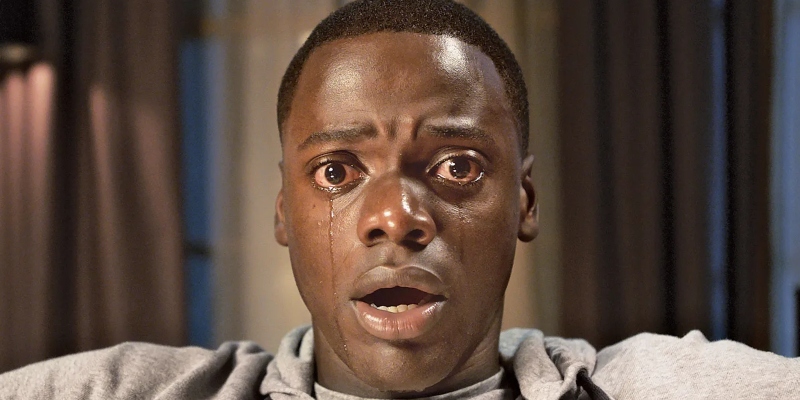
How Horror, As a Genre, Works
John truby in conversation with brad listi on otherppl.
In the latest “Craftwork” episode, a deep-dive conversation about the horror genre with author and story expert John Truby. His latest book, The Anatomy of Genres: How Story Forms Explain the Way the World Works , is available from Picador.
Subscribe and download the episode , wherever you get your podcasts!
From the episode:
Brad Listi: What we’re touching on is something that you repeatedly say throughout this book and in this chapter in particular—that for horror stories to become transcendent, they tend to become internal and deeply human and very character concerned. It’s not just about the the horrible monster or the special effects or hitting those tropes. It’s when you create a real dimensional hero or heroine who’s dealing with real, relatable human challenges.
John Truby: Right. And this is the key to transcending, right there, is what you do with the main character. The first half of every chapter, I go through the 15 to 20 plot beats in sequence that you have to be able to hit in order to tell that story properly. The second half of each chapter, I go through the thematic elements. And what is theme? Theme is really how the main character goes through character change or fails to go through character change over the course of the story. In going through and being forced to go through these plot beats, what is the character change that they are pressured into making?
That’s why the key to transcending horror is don’t just have the character be a victim. The main character in horror is typically the lowest character you can have, which is a victim. You don’t want to do that. You want to give them some agency. This is a person who is dealing with severe mental problems. And then the question is, how do they handle it? Now, yes, it is negative. And this is one of the few forms where the character does not go through character change. Not that the writer forgot to do it. It’s a cautionary tale. They were unable to make that change.
But this is why stories like Get Out , one of the best, most transcendent horror stories in many years, was so great—because they gave the character some agency. It didn’t end in total defeat. And in horror, the typical ending isn’t just one defeat. It’s a second defeat that is an eternal recurrence. In other words, we know as the audience, this is going to happen forever. This is never going to get solved. The problem is, that’s a very depressing ending. That is a very depressing form in terms of what is the ability of a human being to get better and to grow in some way?
This is one reason why transcendent horror is either combined with myth, which is the religion story, or it is combined with science fiction, which then takes our attention from the individual in the story to human beings as an entire race of beings, and can we solve the problem of what it means to be human in time? It’s very challenging to transcend the horror form.
John Truby is the founder and director of Truby’s Writers Studio . Over the past 30 years, he has taught more than 50 thousand students worldwide, including novelists, screenwriters, and TV writers. Together, these writers have generated more than 15 billion dollars at the box office. Truby has an ongoing program where he works with students who are actively creating shows, movies, and novel series. He regularly applies his genre techniques in story consulting work with major studios including Disney, Sony Pictures, Fox, HBO, the BBC, Canal Plus, Globo, and AMC. He lives in Los Angeles with his wife, Leslie, and their two cats, Tink and Peanut. For story software and courses, please visit Truby.com .
- Share on Facebook (Opens in new window)
- Click to share on Twitter (Opens in new window)
- Click to share on Google+ (Opens in new window)
- Click to share on LinkedIn (Opens in new window)
- Click to share on Reddit (Opens in new window)
- Click to share on Tumblr (Opens in new window)
- Click to share on Pinterest (Opens in new window)
- Click to share on Pocket (Opens in new window)

Otherppl with Brad Listi
Previous article, next article, support lit hub..

Join our community of readers.
to the Lithub Daily
Popular posts.
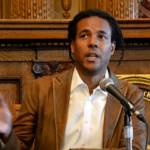
Follow us on Twitter

Publishing On and Off the Page: A Reading List of Books About Book People
- RSS - Posts
Literary Hub
Created by Grove Atlantic and Electric Literature
Sign Up For Our Newsletters
How to Pitch Lit Hub
Advertisers: Contact Us
Privacy Policy
Support Lit Hub - Become A Member
Become a Lit Hub Supporting Member : Because Books Matter
For the past decade, Literary Hub has brought you the best of the book world for free—no paywall. But our future relies on you. In return for a donation, you’ll get an ad-free reading experience , exclusive editors’ picks, book giveaways, and our coveted Joan Didion Lit Hub tote bag . Most importantly, you’ll keep independent book coverage alive and thriving on the internet.

Become a member for as low as $5/month

What is Horror?: About

How to Write Horror
What is Horror Fiction?
Horror is a genre of literature, film, and television that is meant to scare, startle, shock, and even repulse audiences. The key focus of a horror novel, horror film, or horror TV show is to elicit a sense of dread in the reader through frightening images, themes, and situations. In the horror genre, story and characters are just as important as mood and atmosphere. A horror story often shocks and provokes with its exploration of the unknown.
The horror genre in literature dates back to Ancient Greece and Ancient Rome, where horror stories explored themes related to death, demons, evil spirits, and the afterlife. Examples include the ancient Greek tragedy Hippolytus by Euripides, a gruesome story about how jealousy and a lack of empathy can lead to tragedy; and Parallel Lives by Plutarch, a series of biographies highlighting the many moral failures of man.
The gothic novel, a genre of horror that focuses specifically on death, originated in the eighteenth century and is exemplified by the author Edgar Allan Poe. Horror literature in the nineteenth century and twentieth centuries often focused on tales involving occult ideas, like Mary Shelly’s Frankenstein (1818) or Bram Stoker’s Dracula (1897).
Modern horror novels have expanded the genre to include new elements and contemporary themes, like serial killers and slasher stories—Stephen King’s The Shining (1977) is a perfect example—as well as genre mashups that combine horror with historical fantasy, and modern interpretations of fantastical creatures, like ghosts, vampires, werewolves, and witches. Continue reading from MasterClass
Learn More About Horror History
A Brief History of Gothic Horror (NYPL)
The Horror Genre Is Older Than You Think: A New History (FlavorWire)
Your Guide to the Horror Sub-Genres (Book Riot)
The Gothic Novel (Encyclopedia Britannica)
Spine-Chillers and Suspense: A Timeline of Gothic Fiction (BBC)
Resources for Writing Horror
The Horror Genre: On Writing Horror and Avoiding Clichés (Writer's Digest)
10 Tips For Writing Horror From The Masters Of The Genre (Bustle)
How To Write Scary Novels Infused With Fun and Humor (Writer's Digest)
6 Secrets to Creating and Sustaining Suspense (Writer's Digest)
How to Write a Horror Story in 7 Steps (MasterClass)
About Reading Horror
Click If You Dare: 100 Favorite Horror Stories (NPR)
10 Works of Literary Horror You Should Read (Literary Hub)
The 50 Best Horror Novels of All Time (Paste Magazine)
So You Want to Read Literary Horror: Here’s Where to Start (Penguin Random House)
30 of the Scariest Horror Books Ever Written (Good Housekeeping)
13 Essential Horror Novels From the Last Five Years (Mental Floss)
Horror: The 100 Best Books (GoodReads)
50 Of The Best Horror Novels (Book Riot)
20 of the Scariest Books You'll Ever Read (AARP)
This Year's Top Horror Authors Recommend Seriously Scary Books (Goodreads)

Find the Perfect Book for Fall

- Last Updated: May 13, 2024 2:49 PM
- URL: https://westportlibrary.libguides.com/Whatishorror
- NONFICTION BOOKS
- BEST NONFICTION 2023
- BEST NONFICTION 2024
- Historical Biographies
- The Best Memoirs and Autobiographies
- Philosophical Biographies
- World War 2
- World History
- American History
- British History
- Chinese History
- Russian History
- Ancient History (up to 500)
- Medieval History (500-1400)
- Military History
- Art History
- Travel Books
- Ancient Philosophy
- Contemporary Philosophy
- Ethics & Moral Philosophy
- Great Philosophers
- Social & Political Philosophy
- Classical Studies
- New Science Books
- Maths & Statistics
- Popular Science
- Physics Books
- Climate Change Books
- How to Write
- English Grammar & Usage
- Books for Learning Languages
- Linguistics
- Political Ideologies
- Foreign Policy & International Relations
- American Politics
- British Politics
- Religious History Books
- Mental Health
- Neuroscience
- Child Psychology
- Film & Cinema
- Opera & Classical Music
- Behavioural Economics
- Development Economics
- Economic History
- Financial Crisis
- World Economies
- Investing Books
- Artificial Intelligence/AI Books
- Data Science Books
- Sex & Sexuality
- Death & Dying
- Food & Cooking
- Sports, Games & Hobbies
- FICTION BOOKS
- BEST NOVELS 2024
- BEST FICTION 2023
- New Literary Fiction
- World Literature
- Literary Criticism
- Literary Figures
- Classic English Literature
- American Literature
- Comics & Graphic Novels
- Fairy Tales & Mythology
- Historical Fiction
- Crime Novels
- Science Fiction
- Short Stories
- South Africa
- United States
- Arctic & Antarctica
- Afghanistan
- Myanmar (Formerly Burma)
- Netherlands
- Kids Recommend Books for Kids
- High School Teachers Recommendations
- Prizewinning Kids' Books
- Popular Series Books for Kids
- BEST BOOKS FOR KIDS (ALL AGES)
- Ages Baby-2
- Books for Teens and Young Adults
- THE BEST SCIENCE BOOKS FOR KIDS
- BEST KIDS' BOOKS OF 2023
- BEST BOOKS FOR TEENS OF 2023
- Best Audiobooks for Kids
- Environment
- Best Books for Teens of 2023
- Best Kids' Books of 2023
- Political Novels
- New History Books
- New Historical Fiction
- New Biography
- New Memoirs
- New World Literature
- New Economics Books
- New Climate Books
- New Math Books
- New Philosophy Books
- New Psychology Books
- New Physics Books
- THE BEST AUDIOBOOKS
- Actors Read Great Books
- Books Narrated by Their Authors
- Best Audiobook Thrillers
- Best History Audiobooks
- Nobel Literature Prize
- Booker Prize (fiction)
- Baillie Gifford Prize (nonfiction)
- Financial Times (nonfiction)
- Wolfson Prize (history)
- Royal Society (science)
- Pushkin House Prize (Russia)
- Walter Scott Prize (historical fiction)
- Arthur C Clarke Prize (sci fi)
- The Hugos (sci fi & fantasy)
- Audie Awards (audiobooks)
Make Your Own List
The Best Fiction Books » Horror
Literary horror books, recommended by sue rainsford.

out in paperback
Redder Days by Sue Rainsford
The most unnerving and disturbing novels are often those books that leave room for interpretation and uncertainty. Here, the acclaimed Irish novelist Sue Rainsford selects five frightening works of literary horror, by authors who are masters of the unsettling implication—because nothing is quite so scary as what you dream up to fill the voids.
Interview by Cal Flyn , Deputy Editor

Father of Lies by Brian Evenson
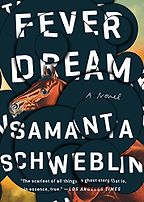
Fever Dream: A Novel by Samanta Schweblin
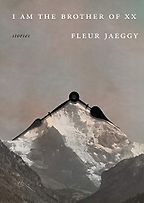
I Am the Brother of XX by Fleur Jaeggy, translated by Gini Alhadeff
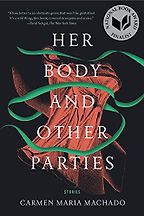
Her Body and Other Parties: Stories by Carmen Maria Machado
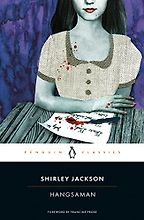
Hangsaman by Shirley Jackson
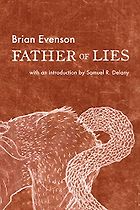
1 Father of Lies by Brian Evenson
2 fever dream: a novel by samanta schweblin, 3 i am the brother of xx by fleur jaeggy, translated by gini alhadeff, 4 her body and other parties: stories by carmen maria machado, 5 hangsaman by shirley jackson.
Y our fiction embraces the menacing, the frightening, and the uncanny. Might you talk a bit about the strangelands of literary fiction—a subgenre of books we might dub ‘literary horror’?
And I’m interested in work that operates in this way, because it leaves huge room for things like ambivalence and ambiguity. With a sensation like the uncanny, there’s no single resolved truth at the end of a piece of fiction. But there might be multiple possible truths, or concurrent truths. A very porous open-endedness.
“Can any piece of fiction live up to the quality of what you dreamed up to fill the voids?”
I’m drawn to fiction that behaves like this as both a reader and a writer: fiction that makes you question your reality by destabilising or undercutting what you thought you knew. Rather than, say, a novel or short story that tells you where it sits in the world and what you should think about it—and perhaps yourself by extension.
That’s a really interesting way of thinking about it. And I find these kinds of books are great reading experiences, because they are challenging and disconcerting but also quite compulsive. They really tune you up, emotionally. Can we turn to your first literary horror book recommendation? This is Father of Lies by Brian Evenson. It’s set within a religious community.
I first heard Brian Evenson speak on the Tin House podcast Between the Covers . I was really drawn to the book, because in the interview it was presented as being based on, or adjacent to, the Mormon faith.
There’s a biographical element here: Evenson wrote a book of short stories called Altmann’s Tongue , which came out in 1994, when he was teaching at Brigham Young University in Utah—which is sponsored by the Church of Latter Day Saints—and one of the students complained about the contents of this short story collection. Altmann’s Tongue is quite sexual and graphic, and very violent. Brian Evenson was let know that he had to stop writing in this way if he wanted to continue teaching, and I think it was heavily suggested he would be excommunicated. In any case, he went into voluntary excommunication.
Then he wrote this book, Father of Lies , which touches on institutional abuse and personal evil—and the personal evils that are upheld by institutions. Samuel Delaney has an amazing introduction in the Coffee House Press edition of the book, in which he describes it as “patriarchal horror fiction”—so, this idea of horror growing out of gendered power, or the horror that occurs when men are given power simply because they’re men. As you know, here in Ireland, we have a very particular history with institutional abuse where religion is concerned. So I was interested in the idea of this writer delving so deeply and unapologetically into scenarios in which children, women, are being abused in this horrific way. As is often the way, while the events depicted are often unbearable for many of us to even consider, there’s a release that comes when something that has been systematically concealed is given representative space. I wouldn’t go so far as to say ‘catharsis’, but maybe something more ontological that can reverberate emotionally.
Get the weekly Five Books newsletter
Evenson is such a gentle, eloquent speaker. Not that we should all be embodying our work. God forbid. But I was so struck by how unapologetically horrific some of the content is, and how spare the language is as well. There’s a lyric quality too, which made it stand out to me.
Again, there’s this sense of intellectual pursuit underpinning it, and a kind of refutation—a pushing back through fiction. I’ve read quite a bit by Evenson, but Father of Lies stands out to me because it also has a blurring of the horrific. It risks pornography, in some ways, to get to the heart of what’s happening. Fernanda Melchor has talked about that in relation to Hurricane Season . That book takes on huge, systemic misogyny and femicide, and she took the risk of being gratuitous and pornographic in her depictions of sexual violence in order to get across the heart. This is something else I’m drawn to as a writer: how do you work with material that’s so volatile it challenges your expectations of the form, and you can’t always tell you when you’ve gone too far. There’s so much at risk, and so much to be gained.
There’s an aspect of formal experimentalism. But I’ve seen this book described as a “page turner”—it’s an unusual combination, but perhaps that hybridity is what defines literary horror.
In interviews, he’s spoken about Joycean modernism versus Kafka-esque modernism; with Joyce the experimentation is very verbose, it’s right there on the page and wants to show itself. Whereas with Kafka it’s about bareness, sparseness, and what gets left out, what you’re not seeing.
So, yes, reading it for the first time it does strike you as a page turner in many ways. It’s almost like a slow car crash—you can’t look away. The ending feels so inevitable, and you’re complicit by looking, by partaking in this gaze. But then on the second pass you see various traits that accumulate into an experimental flavour, like arriving late and leaving early in every scene, a narrative composed of offstage moments as well as what we actually see.
Did you read Olga Ravn’s The Employees ? It was shortlisted for the International Booker Prize last year , and I felt the same about that. It takes the form of a log of interviews with workers on a spaceship after some ominous, unspecified event. It seems the pages have fallen out at some point and been stuffed back in, out of order. There’s a lot of missing information. But it’s that incompleteness that makes the book so ominous and electrifying.
Let’s talk about the next book on your literary horror list: Samanta Schweblin’s Fever Dream . Schweblin is an Argentinian writer. This was translated into English by Megan McDowell in 2017. Why do you recommend it?
What I love about this book is the register. At the start, it is the register that makes it inherently uncanny, unhinging, destabilising. You realise slowly that it’s a conversation between two people—a dying woman and a boy who are talking in a hospital. So from the woman’s slow deathbed, if you like. While she’s coming in and out of consciousness and negotiating various levels of reality and hallucination, but he’s trying to get her to tell him a story that his mother told her. He’s pressing her to speak, and she doesn’t always want to speak. You also realise that there’s been a very troubling event that has led to the woman being on her deathbed.
With another writer, this could be so convoluted, and Samanta Schweblin has talked about how it took several drafts to get it right. Again, it’s a short book. The meat and the bones of the novel all takes place within this conversation. The dynamic is a little off: he’s not sufficiently respectful, or his voice seems older than his body. That’s when you realise that he’s had experiences that a young boy shouldn’t have had, and it’s given him a kind of sinister gravitas.
It starts with the conversation. Inside that, you have the story. In the story, the protagonist and her daughter leave Buenos Aires to go to their rural holiday home. And in this rural landscape, you have very palpable concerns around GM crops and fertilisers being used in the soybean fields, and they’re poisoning the landscape and water. Then you have this folkloric element: this healer, who lives on the outskirts of the town. She’s a matter-of-fact presence, even though her powers are supernatural. There are no questions around the veracity of her power: any children who drink the poisoned water and have to go to this woman to be healed. That’s how the two strands—realist and supernatural—overlap.
“As I writer, I read it and think: how did she do that?”
She heals them through this process called transmigration, which is something Samanta Schweblin invented, but everything else is very much from the real world, from Argentina. Even this kind of folkloric healer is very much present in the rural landscape in real life.
Again, Fernanda Melchor has talked about this, in relation to Mexico. There are so many people there who are off the grid, where medical health systems are concerned. So these healers are like GPs, in that they’re an accessible source of care.
A great recommendation, thank you. Next up we have the first of a couple of short story collections: I Am the Brother of XX by the Swiss-Italian writer Fleur Jaeggy, translated by Gini Alhadeff.
My dad gave me this book for Christmas a couple of years ago. I’d never heard of her. There’s a couple of reasons for why she’s a little more obscure. She can be very evasive in interviews, where her biography is concerned. She writes exclusively in Italian, so we don’t have access to all of her books in translation . She has an amazing book of essays, a tiny book called Three Possible Lives , and the fiction is also quite brief—I think sometimes that can be harder to pitch. But it falls into this category of literary horror for me because of this sense of destabilisation and uncertainty that she produces very deftly and quickly. I love how her books operate with no moral code; it’s like a universe stripped of morality. And this effect is achieved just by relaying how people engage with each other, or with themselves.
One of my favourite stories from I Am the Brother of XX is ‘The Aviary’. It’s about a husband and wife who are going through the husband’s deceased mother’s house—as you do, when someone has passed away—and you get the sense that the mother was very hard on the daughter-in-law, who in turn had a very problematic, incestuous relationship with her own mother. In terms of meat for a story, this in itself feels like enough. But then—in the already loaded, charged space of his deceased mother’s house—the husband gets her to reenact the incest that her own mother subjected her to.
At the start of the story, it seems that the horrific element is this mother-in-law, who was emotionally brutal towards the daughter-in-law. But then you realise: no, it was the mother-in-law who was holding the son in check. The horror is the vacuum her death has left behind: a clearing the son can now fill with his own brand of emotional violence. Then you get the title of the story, ‘The Aviary’. She’s trapped in this structure.
Support Five Books
Five Books interviews are expensive to produce. If you're enjoying this interview, please support us by donating a small amount .
Then there’s a story called ‘Portrait of an Unknown Woman’. Again, very short, just a couple of pages. In it, the speaker is looking at a portrait of a woman in white gloves clutching a crucifix. All of their psychology becomes condensed into this gesture of the clutched cross. There’s an amazing line: ‘She grips to excess, and maybe the cross itself will drive her to squeeze it till it bleeds like a pomegranate fruit.’ Then the person leaves the museum, but is still carrying this image with them, and you get a sense of how they have been altered by this encounter.
Again, there’s this idea of ‘arrive late, leave early’. These are intense bursts, these short stories. There’s no right or wrong. Only ambivalence. You’re left to the discomfort that produces. You have to sit with it and let it linger. Oh, they’re so good.
I was struck by what you said about the image staying with the narrator. As with the missing information we spoke about earlier, I wonder if a lot of the power of horror is in these hanging images—the unspoken implication.
Where images are concerned, the experience of them changes with the experience you accrue around them. In an MFA course, you might be taught this idea of ‘repeat, repeat, evolve’. A hamfisted version might go something like this: at the start of a horror movie, there’s a pair of scissors on the kitchen counter; in the middle of the movie, those scissors are used to cut the stems on a bouquet of roses; at the end of the movie, they are used to stab someone in the neck. That experience for the viewer is very different to if someone just pulled the scissors out of the cupboard at the last minute. They’ve already become subconsciously invested through subtly instilled acts of recognition.
So there’s a lot you can load onto an image—especially something like a crucifix, which comes to us already rife with religious connotations, things that people literally clutch and cling to for comfort. It’s easy to underestimate your reader, and to kill something with description. Hilary Mantel always says to trust your reader. Which is something I do way too much of in early drafts, in that I’m far too vague. But I do think there’s a lot to be said for suggesting something, letting it sit, and picking up the threads as you go rather than divulging everything in one pre-digested lump.
Some people would say that makes a piece of fiction frustrating. Others would say that makes it challenging. Other people would say it makes it inquisitive. There are all these different expectations of fiction where the unspoken is concerned.
There’s that truism in writing: show, don’t tell. Less so in nonfiction, I think, where clarity and concision is often necessary—although there’s art in finding a balance between the showing and the telling. But in fiction, and particularly in poetry, that sense of putting it together yourself as a reader is very important.
It gives you space. While I was doing my MFA at Bennington, I was reading some hugely astute and erudite memoirs . I thought, my god, they are so resolved. What is the point of me reading these, if there’s no point at which you can slip in and wonder at? It’s impressive because it’s so polished, but I like a bit of that porous quality, where you leaving room for other interpretations, even if it’s only fleeting.
I admire those novelists that say, ‘once a book has left my desk, my opinion is only as valid as the next person’s, it’s all a matter of interpretation.’ But I’m not sure I could let go quite so fully.
Let’s move on your next literary horror book recommendation: Her Body and Other Parties by Carmen Maria Machado. This is a book I love. For those who haven’t read it, could you talk us through the book and what marks Machado’s writing out?
One of these stories, ‘The Husband Stitch’, really launched her into public consciousness. Suddenly everyone was talking about her. What I love about that story, and what solidified her role in this contemporary Gothic vein, is that its very melodious, very seductive. It opens with a set of instructions for how you should imagine each character’s voice. The story subverts tropes and gender norms from fairytales and myths. But it does that in a way that is just so sensual, and that sensuality becomes increasingly troubling the longer you’re in the story.
Again, you’re complicit in what happens to this woman from the outset because you just cannot look away. Essentially, the story follows a woman who wears a green ribbon around her neck. She lives her life, and marries, has a very fulfilling sexual life with her husband. Likewise she has a fulfilling maternal experience, and gives birth to a son. But the whole time her husband is saying: what’s with the ribbon around your neck? Eventually, she says, okay, fine, take it off. And he takes it off, and her head comes off.
“I like a bit of that porous quality, where you leaving room for other interpretations”
I love the texture of the prose, and how it’s structured as a story. But I also love that the title comes from this real, disturbing medical trend where, in repairing the tears that so frequently occur during a vaginal birth, the doctor would sew up the vagina with an extra, unnecessary stitch so it would be tighter than before. The idea that penetrative sex would now be more pleasurable for the husband. I remember reading the story and the context around it, and thinking My god, the brutality of that: the systemic misogyny, and how that impulse was facilitated by the body of medicine. All of that is captured in this image of one small stitch in a woman’s genitals: an act of what should have been one of care and repair becoming an act of betrayal. And, although a woman can of course be simultaneously maternal and carnal, the husband stitch forcefully transitions the female body from this vulnerable, maternal moment back into its supposedly primary carnal function.
Of course, the protagonist’s voice is not fully conscious of the violence that’s happening to her. She’s not really parsing it. I think that gives a good overview.
There are a number of other stories in this book, and a novella at the end, Especially Heinous: 272 Views of Law & Order SVU, which is formed from a series of fictional episode synopses from the hit show.
I remember when I lived in New York by myself for a summer when I was 21, and I saw Law & Order Special Victims Unit for the first time, and I thought: oh my god, there’s an entire series of this? And yes, there’s season upon season upon season of these heinous sex crimes, all handled in these 20- to 30-minute episodes.
Machado has explained that she was drawn to that form for a couple of reasons. One is that there’s something deceptively therapeutic about the idea that you have these white knights, so dedicated to sex crime. Because, as we know, sex crimes are often not handled with same diligence, or finesse, or care, that homicide or other serious crimes might be. Then there’s this sense of justice: people are prosecuted, you see that, and it’s over. As a viewer, you have this cathartic loop. So I was interested in her drawing on that as a form, but drawing it out to its logical conclusions.
Agreed. This book won the Shirley Jackson Award, which recognises “outstanding achievement in the literature of psychological suspense, horror, and the dark fantastic.” And that also brings us rather neatly to our final book, which is Shirley Jackson’s Hangsaman . I was pleased to see this book on your list, but also intrigued because The Haunting of Hill House is her most obvious literary horror book.
I’m interested in it from a research point of view. I’m curious about the role it served for Jackson herself, because it comes after ‘The Lottery’ , but before The Haunting of Hill House and We Have Always Lived in the Castle .
We’ve been touching on the role of the porous and sometimes shaggy novel. What I like about this book, from the perspective of horror, is that it starts off with a sinister act of what seems quite clearly to be sexual assault in the garden of her family home with a family friend, and then she goes to university—an all-women’s college in northeast America, which conjures up Bennington College, where Shirley Jackson lived for a spell while her husband Stanley Hyman was teaching there. The experiences that unfold are horrific, because of the psychological precarity of Natalie that’s been alluded to at the outset. They are horrific because of who she is; the events which inflect her world view.
I think it was Sartre who spoke about existentialism in terms of not being properly born, or not having fully come into the world (and Beckett heard him say this, and identified strongly). Similarly, because Natalie has not been fully nurtured by her parents, she is someone who cannot cope with external reality, or the friction of external reality against her interior reality. Her inner life consists of this untended friction and the slow breakage it causes. I love all the symbolism around the tarot the book incorporates—the lady of the hangman. Natalie’s last name is Waite, which I think is a reference to Arthur E Waite, who wrote a guide to the tarot in the early 19th century, a popular layman’s book. And—not to rush to the end—but it culminates in all these strange experiences, in which you’re not sure what’s real and isn’t real. The end totally shifts register. You have to consider the book as a whole to grapple with the ending, which is one of the reasons the book was hugely critiqued at the time.
Critics just did not know what was happening. Her biographer, Ruth Franklin , has offered that the uncertainty of Natalie’s perception bled into uncertainty around her character, which made it difficult for the reader to access. But I think she does a typically sensational job with atmosphere, and what it was like to be a woman at that time—the 1940s, coming into the 1950s, when there was a huge flux in gender roles following the upheaval of the second world war. It was a time when we saw a surge in multiple personality disorders in women because of the conflicting societal roles that were then coming to the fore, the deep schisms that appeared within women who could not fathom who they were now supposed to be. I think she captures that deep, deep anxiety and uncertainty that’s inherently gendered so well. Also, it’s a campus novel. That really appeals to me as well. The strange shift that can happen when people are confined to a condensed geographic location. I love Shirley Jackson’s later novels too, but I have huge affection for Hangsaman .
We ran an interview on Shirley Jackson’s best books quite recently, and I asked our interviewee whether she thought Jackson was an unusually disturbed person, or if it was just that her stories were disturbing. I wonder if I might ask that of you too—of yourself. If you are interested in writing of menace, or even in reading of it, does that speak to something in our personalities?
I think it does mean something, but I don’t know if it means one is more disturbed than another. I think some of us are more interested in a genre like horror because of what’s already inflected our world view. I mean, I’m always surprised by what other people find horrific, or scary, or unhinged in my writing. With Follow Me to Ground , there was quite a gendered response—women would say, ‘I loved your book, I loved that Ada was so uncompromising’; men would say, ‘great book, very scary.’ We have this female character who is pursuing her desires in a violent way: women read it as liberating, men as threatening. To be very reductive. So I think some people see things as horrific that others see as matter of fact.
Carmen Maria Machado said it better: that being a woman is inherently uncanny because your experiences are questioned as a matter of course. So I do think it’s just about one’s orientation, and the world one has seen and experienced. That sets you up to have a higher or lower tolerance, or to see things through a certain prism.
But I do think different writers are drawn to different aspects of human psychology when they are deciding what to write about. Some of us are drawn to the realm of pathology and trauma, because of what it tells us about human experience. Not necessarily because one has a great love for violence or the obscene, but because of how humans interact in those situations, what’s being brought within our field of cognition. Again, what are you being made to question? What might you come away knowing that you didn’t know before?
May 16, 2022
Five Books aims to keep its book recommendations and interviews up to date. If you are the interviewee and would like to update your choice of books (or even just what you say about them) please email us at [email protected]
Sue Rainsford
Sue Rainsford is an Irish novelist and arts writer living in Dublin, and the author of two novels; Follow Me To Ground and Redder Days. Sue's work has been nominated for the New York Radio Festival Awards, the Republic of Consciousness Award and The Desmond Elliott Prize, and she is a recipient of the VAI/DCC Art Writing Award, the Arts Council Literature Bursary Award, the Kate O'Brien Award and a MacDowell Fellowship. She has been awarded residencies by the Irish Museum of Modern Art and Maynooth University, and commissions include BBC Radio 4 and RTÉ Radio 1. Sue is currently Writer in Residence at UCD's School of English, Drama & Film.
We ask experts to recommend the five best books in their subject and explain their selection in an interview.
This site has an archive of more than one thousand seven hundred interviews, or eight thousand book recommendations. We publish at least two new interviews per week.
Five Books participates in the Amazon Associate program and earns money from qualifying purchases.
© Five Books 2024

Join Discovery, the new community for book lovers
Trust book recommendations from real people, not robots 🤓
Blog – Posted on Monday, Feb 04
100 best (and scariest) horror books of all time.

The definition of scary changes from person to person. For some, it might be ghosts and haunted houses. For others, serial killers. For still others, the most frightening things are the ones that go bump in the night, unseen.
Despite the width of this spectrum, what unites all lovers of horror is the thrill that horror novels inspire within us: that universal sensation of your heart thumping out of your chest, as cold sweat breaks on your forehead when you turn the page.
To create this list, we went to the darkest, most ghostly corners of the literary world. Without further ado, here are the 100 best horror novels of all time — it's safe to say that we hope they'll keep you up at night. Happy reading!
If you're feeling overwhelmed by the number of great horror books out there, you can also take our 30-second quiz below to narrow it down quickly and get a personalized horror book recommendation 😉
Which horror book should you read next?
Discover the perfect horror book for you. Takes 30 seconds!
1. Frankenstein by Mary Shelley (1818)
Is there a name more synonymous with horror? The story of Dr. Frankenstein and the anguished, tragic monster he unwittingly creates has become a cultural icon, both macabre and quintessential. When Mary Shelley set out to write Frankenstein over two centuries ago, she said that she wanted to create a book that would “speak to the mysterious fears of our nature and awaken thrilling horror — one to make the reader dread to look round, to curdle the blood, and quicken the beatings of the heart.” We can safely say that she succeeded.
2. The Narrative of Arthur Gordon Pym of Nantucket by Edgar Allan Poe (1838)
The Narrative of Arthur Gordon Pym is a mixture of Moby Dick-esque maritime detail (it later inspired Herman Melville) and H.P. Lovecraft-style cosmic horror . The titular Pym stows away on the Grampus, a whaling ship headed for southern waters. But after mutiny breaks out on the upper deck, Pym is left stranded by one of his friends, only to face a series of gruesome situations once he’s retrieved.
3. The Fall of the House of Usher and Other Tales by Edgar Allan Poe (1839)
Could you really call a list of the best horror books complete without a nod (or two) to the genius of Edgar Allan Poe? Sibling dynamics are given new meaning in The Fall of the House of Usher , a work of gothic fiction that centers on a spooky household. Roderick is a sick man with acute sensitivity to everything, who lives in constant fear he is about to die. His sister, Madeline, suffers from catalepsy (a sickness involving seizures). An unnamed narrator visits them both and gets more than he bargained for.
4. Gothic Tales by Elizabeth Gaskell (1851-1861)
Just as the tin says! Gothic Tales is a collection of (surprise!) gothic tales — more specifically, fairy tales intertwined with short stories. Written by 19th-century author Elizabeth Gaskell, these stories deliver everything: disappearances, Salem witch hunts, mysterious children wandering lost in the moors, and local legends that may or may not return to haunt the townspeople. And with every story, Gaskell shows her uncanny talent of blending reality and the supernatural with spine-tingling dexterity.
Looking for something new to read?
Trust real people, not robots, to give you book recommendations.
Or sign up with an email address
5. Carmilla by J. Sheridan Le Fanu (1872)
Before Dracula , there was Carmilla . This tale of a female vampire who attracts a lonely young girl served as the foundation for the “lesbian vampirism” trope (and, no doubt, inspired Bram Stoker to some extent as well). So fans of the emerging cult classic Jennifer’s Body , you’ve found your literary horror match.
6. Dracula by Bram Stoker (1897)
Meet the most famous vampire of all time. Dracula was born out of Bram Stoker’s imagination over a century ago — yet he still lives on today in our collective consciousness. Dracula is his story, one in which he roams from Transylvania to England to spread the curse of the undead amongst innocents. More than a simple tale about vampirism, Dracula is an era-defining masterwork about sexuality, technology, superstition, and an ancient horror that’s too terrible for words.
7. The Turn of the Screw by Henry James (1898)
The Turn of the Screw is the original children of the damned! When a governess is hired to take care of Miles and Flora, the niece and nephew of a wealthy Englishman, she has no idea what she’s in for. As she discovers the tragic fate of her predecessor, she starts seeing things that can only be explained in one of two ways: either she’s mad… or the specter of the late governess wants her job back!
8. The Call of Cthulhu and Other Weird Stories by H. P. Lovecraft (1928)
Perhaps the most influential of American horror writers, H.P. Lovecraft was responsible for creating an entire mythology of elder gods, sinister sea-dwellers , mysterious cults, and men of science who are driven to the edge of their sanity. The Call of Cthulhu remains one of the most accessible entry points into Lovecraft’s works — some of which, if we’re being honest, are a bit hard for the uninitiated to follow.
9. Collected Ghost Stories by M. R. James (1931)
M.R. James essentially originated the “antiquarian ghost story.” Indeed, his writing was revolutionary for its time, discarding old Gothic clichés and using more realistic settings — which as we know by now, only makes a scary story scarier. His Collected Ghost Stories includes a whopping 30 tales, most of which involve a mild-mannered academic stumbling upon an artifact that calls forth some malevolent, otherworldly presence. Yes, the ghosts are fascinating; but what’s really admirable here is James’ signature subtlety of style.
10. At the Mountains of Madness by H. P. Lovecraft (1936)
This post-Cthulhu novella by Lovecraft is so long and twisty that even Lovecraft himself couldn’t get it published at first. At the Mountains of Madness relates the horrifying details of an Antarctic expedition gone wrong, in which the remains of a prehistoric species seemingly came to life and slayed humans. As the narrative spirals further, both the characters and the reader come to realize that instead of a life-changing discovery, the explorers may have brought about a death-wracking monster.
11. Rebecca by Daphne du Maurier (1938)
“Last night, I dreamt I went to Manderley again.” Perhaps the most famous first line of any novel in the 20th century, this intoxicating blend of romance and suspense was seemingly made for Alfred Hitchcock, who went on to direct Rebecca 's silver screen adaptation. After a whirlwind romance, a shy American marries a wealthy Englishman and returns to his estate in Cornwall. She soon realizes that she’s now living under the (literal or figurative) shadow of her husband’s first wife: the seemingly perfect and recently deceased Rebecca de Winter.
12. I Am Legend by Richard Matheson
One man’s hero is another man’s villain. If there’s only one lesson we learn from Matheson’s survival classic, let it be that. Doctor Robert Neville is the last man left alive. In the daylight, he hits the streets, stocking up on supplies and vanquishing the vampiric creature that lurk in the shadows. But when night falls, he squirrels himself away in his fortress of a home and works desperately on a cure for an epidemic that has ended the human race.
13. The Bad Seed by William March (1954)
Now synonymous with any misbehaving child, the original “bad seed” was Rhoda Penmark, the sociopathic eight-year-old. Her mother Christine suspects her of hurting and possibly killing a classmate, an elderly neighbor, and even her own dog — and as Christine discovers the truth about her own mother’s dark past, she realizes that Rhoda has to be stopped at all costs, before The Bad Seed sprouts any further.
14. The Haunting of Hill House by Shirley Jackson (1959)
You know how some people say that the setting is almost like another character in the story? Well, in the case of this spooky classic, that’s the literal truth. When a parapsychologist invites a group of volunteers to stay at an old mansion with a bloody mystery, he hopes to uncover evidence of the supernatural. As the tension ratchets up, each of the guests is confronted by inexplicable phenomena. Listed by Stephen King as one of the best horror books of the 20th century, The Haunting of Hill House is a must-read for any fan of the genre.
15. Psycho by Robert Bloch (1959)
If you’re into horror, you’re no stranger to Psycho . But let’s recap one of the best horror plots of all time anyway: inspired by the real-life story of psychotic murderer Ed Gein, Norman Bates and his Mother own the Bates motel, with the unlit neon sign out front. When a woman checks into the motel one night, Norman can’t help but spy on her. Displeased, Mother plans to rectify her son’s behaviour by eliminating the woman, and anything that might purge Norman of his dark thoughts.
16. We Have Always Lived in the Castle by Shirley Jackson (1962)
We learn three things in the first paragraph of Jackson’s final novel: Mary Katherine Blackwood lives with her sister Constance; she loves the death-cap mushroom; and everyone else in her family is dead. From the supreme master of shivers-down-your-spine horror comes a tale of Gothic surroundings and even more sinister, yet inscrutable, inner lives. You’ll be guessing the wicked truth about Mary and Constance right up to the very end.
17. The Case Against Satan by Ray Russell (1962)
Bearing strong superficial resemblance to a certain classic, Russell’s novel also features a pair of priests tasked with examining a young girl who may be possessed by the devil. Between The Case Against Satan , The Exorcist and Rosemary’s Baby, contemporary readers can sense a Catholic-tinged fear of the devil pervading through American horror of the 60s. If you like the other two, why not give this one a chance?
18. Something Wicked This Way Comes by Ray Bradbury (1962)
At the beginning of Something Wicked This Way Comes , twelve-year-olds Will and Jim can’t wait to visit “Cooger & Dark's Pandemonium Shadow Show.” But during their visit, they witness something odd: ol’ Cooger riding backwards on the carousel, which turns him into a boy of their own age. As Will and Jim tail the Benjamin Button-ized Cooger, searching for answers, they find that the mysteries of the carnival are even darker than they anticipated — and that that darkness may not be limited to the carnival alone.
19. Rosemary's Baby by Ira Levin (1967)
If, for some reason, you’re doubting whether Rosemary’s Baby is one of the best horror books of all time, let us remind that it was the bestselling horror novel of the 1960s, launching a boom in the commercial success of horror fiction in general. As with many stories in the genre, Rosemary’s Baby starts out pretty innocently, and then things take a turn for the worst: Rosemary and Guy have just moved into a beautiful Manhattan apartment, and life is good. That is, until their dream home starts to turn into a living nightmare, and they begin to feel that the devil lives only a few doors down.
20. Hell House by Richard Matheson (1971)
In Hell House , the I am Legend scribe reaches terrifying new heights by expertly combining his flair for suspense with an intuitive eye for horror. The story opens on a dying millionaire who pays $100,000 each to a physicist and two mediums for them to retrieve “proof” of life after death. The group’s plan: travel to Maine and spend the week in the Belasco House, the most haunted house in the world. Whether any of them make it out alive — without going mad — is another question altogether.
If you don’t trust us, believe Stephen King, who once said: “ Hell House is the scariest haunted house novel ever written. It looms over the rest the way the mountains loom over the foothills.”
21. The Exorcist by William Peter Blatty (1971)
No author creates sensation quite like William Peter Blatty and no story has satisfied a nation’s capacity for horror quite like The Exorcist . A literary landmark of the 21st-century , The Exorcist is the deeply troubling tale of one child’s demonic possession and two priests’ attempts to save her from a fate worse than death. Part family drama and all horror, it delivers on all fronts.
22. Carrie by Stephen King (1974)
Allegedly fished out of the trash by his wife, it’s hard to believe that this classic was only the first novel published by Stephen King. As one of the most put-upon teenage girls in literature, the title character struggles with school bullies, a puritanical mother, and unusual (to say the least) physical changes. Even before it went on to become a famous film, Carrie gave early fans a glimpse of King’s greatest gifts: his ability to write sympathetic, fully fleshed characters while also delivering on the big shocks. (Want more King? Check out this list of every Stephen King novel , ranked from most popular to least popular.)
23. Interview with the Vampire by Anne Rice (1976)
Speaking of debuts that made a splash: with her first published novel, Anne Rice redefined Southern Gothic for a new generation. The titular interview takes place in modern day, as the vampire Louis recounts his story to a cub reporter. Once a plantation owner in pre-Civil War Louisiana, his life as a creature of the night is marked by his various encounters with Lestat, the vampire responsible for his undeath. Interview with the Vampire went on to be an incredible success, spawning a series of popular novels and a film adaptation starring Tom Cruise and Brad Pitt.
24. The Shining by Stephen King (1977)
What do you get when you take a frustrated writer, a creepy old hotel, and a blizzard that locks everyone inside? An absolute cornerstone of horror, that’s what! If you’ve never read The Shining , brace yourself for a marathon of mounting tension and terrifying twists, with a family fighting for their lives, even as they’re not exactly sure who or what they’re fighting.
25. The Bloody Chamber by Angela Carter (1979)
Angela Carter is one of the preeminent magical realist writers of the twentieth century, female or male. The Bloody Chamber , a collection of darkly reimagined fairy tales and folktales, takes a distinctly feminist slant with its portrayal of female characters: many of the heroines in these stories save themselves, rather than waiting for a hero on a white horse. Of course, they have to go through some pretty scary stuff first. Horror lovers who also enjoy a bit of Holly Black or Marissa Meyer, this is unquestionably the collection for you.
26. Ghost Story by Peter Straub (1979)
A group of old men in a quiet town call themselves The Chowder Society. Every so often, they gather to share ghost stories with each other. It’s all just fun and game… until it isn’t. In the wake of a horrific accident, the men are forced to confront one of their stories — and the consequences of the worst thing that they’ve ever done in this brilliant homage to “Night of the Living Dead.”
27. Whispers by Dean Koontz (1980)
Whispers stars Thomas, a screenwriter living in Los Angeles. One day, she is attacked by Bruno Frye, the proprietor of a vineyard she recently visited. She forces him to leave at gunpoint and immediately calls the police — who then call Bruno’s home, where he answers, not more than seconds after the attack. Later on, she is once again attacked by Bruno but manages to get injure him as he escapes. When she called the cops again, she learns that her assailant was found dead hundreds of miles away. But if you think that will put an end to her assaults, then you’re in for a big surprise.
28. The Mask by Dean Koontz (1981)
Not to be confused with the Jim Carrey comedy, The Mask is a shudder-inducing novel from Koontz follows Carol and Paul, a hopeful couple who welcomes a young, amnesiac foster girl into their home. But though “Jane” (who can’t remember her real name) seems angelic at first, her increasingly strange behavior and the mystery of her true identity begins to worry her potential adoptive parents… who may have a closer connection to her than they realize.
29. The Woman in Black by Susan Hill (1983)
Now a major motion picture starring Daniel Radcliffe ( as well as a long-running stage play in London), The Woman in Black is often described as “if Jane Austen wrote horror.” This take on a classic ghost story follows solicitor Arthur Kipps as he travels to the English moors to settle the affairs of Mrs. Alice Drablow of Eel Marsh House. What he finds really finds is a mansion haunted by the elusive “Woman in Black”. Readers who love a slow build-up and the sensation of being watching will be thrilled.
30. The Wasp Factory by Iain Banks (1984)
Frank Cauldhame is sick in the head, even by the standards of the horror genre. Though only sixteen, he lives in isolation and has developed a number of sociopathic tendencies, including torturing wasps in a machine he calls “the wasp factory.” As the reader gets to know more about Frank’s twisted past, they begin to understand why he’s like this — and another twist toward the end of The Wasp Factory makes Frank’s everyday activities seem practically banal.
I look at these pieces and I don't think the man who wrote them is alive in me anymore.... We are all our own graveyards I believe; we squat amongst the tombs of the people we were. If we're healthy, every day is a celebration, a Day of the Dead, in which we give thanks for the lives that we lived; and if we are neurotic we brood and mourn and wish that the past was still present. Reading these stories over, I feel a little of both. Some of the simple energies that made these words flow through my pen--that made the phrases felicitous and the ideas sing--have gone. I lost their maker a long time ago.
These enthusiastic tales are not ashamed of visceral horror, of blood splashing freely across the page: \'The Midnight Meat Train,\' a grisly subway tale that surprises you with one twist after another; \'The Yattering and Jack,\' about a hilarious demon who possesses a Christmas turkey; \'In the Hills, the Cities,\' an unusual example of an original horror premise; \'Dread,\' a harrowing non-supernatural tale about being forced to realize your worst nightmare; \'Jacqueline Ess: Her Will and Testament,\' about a woman who kills men with her mind. Some of the tales are more successful than others, but all are distinguished by strikingly beautiful images of evil and destruction. No horror library is complete without them. --Fiona Webster
31. Books of Blood by Clive Barker (1984)
As Britain’s leading purveyor of shocking horror, Clive Barker has made a bit splash as both an author and a film director. While cinephiles may recognise his works Candyman and Hellraiser , he first appeared on the horror radar with his short story collection, Books of Blood . Compulsively blood-curdling, these contemporary stories see regular people sucked into grotesque, disturbing, and often comic scenarios. A brilliant gateway for Barker newbs.
Ghosts and The Locked Room are the next two brilliant installments in Paul Auster's The New York Trilogy .
32. City of Glass by Paul Auster (1985)
City of Glass is the first installment in Auster’s landmark New York Trilogy , and a genuinely psychedelic work of intertwining narratives. It begins with a private investigator and former fiction writer who’s driving himself crazy trying to solve a case, then unspools into countless more intertextual threads and questions — the possible answers to which will have readers questioning their own sanity and stability by the end of this book.
33. It by Stephen King (1986)
In the story that injected clowns straight into the nightmares of an entire generation, the title character is a demonic entity that disguises itself while pursuing its prey. And for the children of Derry, that mostly involves taking the form of Pennywise the Clown. Alternating between two time periods (childhood and adulthood), It is packed with fascinating tangents that expertly flesh out the sad, traumatized, and occasionally nostalgic natives of this quiet Maine town.
34. Beloved by Toni Morrison (1987)
The horrors of Beloved , considered by many to be Morrison’s seminal work, are thoroughly intertwined with the ghastly history of America. Sethe is a former slave who had to slit her infant daughter’s throat to prevent her from enduring the same profound injustices and trauma as her. Eighteen years later, the child still haunts her — in some ways more than others. Between the intensely surreal atmosphere that pervades the entire book and Morrison’s deep-cutting prose, Beloved is a masterpiece beyond that of most contemporary horror novels.
35. The Fifth Child by Doris Lessing (1988)
In the 1960s, Harriet and David Lovatt are normal parents with four normal children in England — until Harriet gives birth to their fifth child. Ben is the devil incarnate: he is too strong for his own good, insatiable when it comes to sustenance, and abnormally violent. As he grows up, the family becomes increasingly paralyzed by fear and indecision. Underneath the thrills and agony of The Fifth Child lies a dangerous question about parenthood and the obligations of family.
36. The Silence of the Lambs by Thomas Harris (1988)
The basis for the Oscar-winning film, The Silence of the Lambs is the follow-up to Red Dragon , which was the first novel to feature cannibalistic serial killer Dr. Hannibal Lecter. In this sequel, FBI trainee Clarice Starling enlists the help of Dr. Lecter to find “Buffalo Bill” — another killer on the loose. In order to do so, the inner workings of a very dark mind are probed, and spine-chilling suspense ensues.
37. Carrion Comfort by Dan Simmons (1989)
Carrion Comfort is based on a brilliantly unique premise: that throughout history, a select group of individuals with psychic powers (known as “The Ability”) have compelled humans to commit horrific violence. Acts such as the cruelty of Nazi guards, John Lennon’s assassination, and the Iranian Hostage Crisis can all be attributed to people with The Ability — and they may be planning something even worse. It’s up to one man, a Holocaust survivor, to extinguish this ancient evil before they do any more harm.
38. Ring by Kōji Suzuki (1991)
The premise is a modern-twist on a classic trope: there is a videotape that warns viewers they will die in one week unless they perform an unspecified act. And, yes, the videotape does keep its promises. This Japanese mystery horror novel was the basis for the 2002 film, The Ring , a film which kickstarted the trend of adapting Asian horror for English-speaking markets. Indeed, the nineties was when international readers really started to pay attention to the chilling work being produced by Japanese genre writers like Suzuki.
39. Drawing Blood by Poppy Z. Brite (1993)
In Drawing Blood , Trevor McGee avoids his childhood home in North Carolina for a reason. Years ago, when he was only five years old, his father murdered his mother and his younger brother before hanging himself. Now he’s determined to return and confront his past, but there’s a small problem: the demons that drove his father to insanity might never have left the house.
40. Parasite Eve by Hideaki Sena (1995)
Described as a “medical fantasmagoria,” comparable to Frankenstein in its scientific acuity, this Japanese sci-fi horror follows Dr. Nagashima, who is overwhelmed with grief at the loss of his wife. To cope, he begins the process of reincarnating his wife using a small sample of her liver. What he isn’t prepared for is when her cells begin to mutate, and an ancient, unseen consciousness starts rising from its long sleep.
41. Uzumaki by Junji Ito (1998)
Uzumaki is a seinen horror manga series. Kurôzu-cho, a small fogbound town on the coast of Japan, is plagued by a supernatural curse in the form of uzumaki — spiral, otherwise known as the hypnotic secret shape of the world. As the hold of the curse over the town strengthens, its inhabitants begin to fall deeper and deeper into a whirlpool of madness.
42. From Hell by Alan Moore and Eddie Campbell (1999)
The peerless Alan Moore put aside V for Vendetta and Watchmen to write this graphic novel, bringing to life the world of Jack the Ripper and his reign of terror in the 1880s. From the grisly theories surrounding the Ripper to the personalities that stood tall during the desperate investigation, Moore spares no gruesome detail as he examines the motivations and identity of the most famous serial killer of all times. With Eddie Campbell’s stark illustrations, this extraordinary graphic novel is a reminder that the most horrifying truths lurk inside the depths of the human soul — and that not all monsters live in Hell.
43. House of Leaves by Mark Z. Danielewski (2000)
Though Danielewski’s experimental debut remains largely uncategorizable, it definitely contains strands of horror DNA. This mammoth 700-page novel follows "The Navidson Record" — a documentary about an apparently haunted house (if by "haunted" one actually means "alive"). The Navidson house seems to mutate, changing size and sprouting corridors in a dizzying labyrinths, all while emitting an ominous growl. But what makes House of Leaves truly frightening is Danielewski’s intertwining of plot and structure, the latter’s chaotic layout mirroring the former.
44. Skin Folk by Nalo Hopkinson (2001)
Skin Folk is a short story collection that includes science fiction, Caribbean folklore, passionate love stories, and downright chilling horror. While not all the stories would be described as horror, the darkest of the collection is “Greedy Choke Puppy,” which features a bitter woman who discards her skin at night, and replenishes herself by killing children for their life force.
45. Coraline by Neil Gaiman (2002)
There’s a mysterious door in Coraline’s new house. The neighbors all warn her that she shouldn’t open it under any circumstances… but Coraline never was a girl who listened to other people’s advice. From the mind of the bestselling author who brought you American Gods and Neverwhere comes a novel of wondrous and chilling imagination. Coraline is one of the staples in Gaiman’s remarkable oeuvre for a reason.
46. 30 Days of Night by Steve Niles and Ben Templesmith (2002)
This dramatic comic book miniseries brings supernatural terror to life: for a town in Alaska, prolonged periods of darkness means that vampires can openly kill and feed upon humans at almost any time. Their victims are rendered helpless by both the incapacitating darkness and the vampires’ vicious attacks — attacks that Ben Templesmith depicts with such gory immediacy that his illustrations could almost be crime scene photographs.
47. Come Closer by Sara Gran (2003)
Come closer, indeed. This 2003 novel by Sara Gran revolves around a woman named Amanda, who has an ostensibly perfect life. But one day she realizes that some things are a little off. Like the quiet but recurrent tapping in her apartment. And the memo that she sent earlier to her boss that was somehow replaced by a series of insults. Then there are the dreams: those of a beautiful woman with pointed teeth, and a seashore the color of blood. As this mystery escalates in size and terror, Amanda is forced to confront nothing less than her own self.
48. The Good House by Tananarive Due (2003)
The Good House is named after a Sacajawea, Washington home that was much-beloved… until a young boy died behind its doors. Two year later, Angela hadn’t planned on returning to the house that bore silent witness to her son’s death, but then terrible things start happening to the community. Now Angela has the chance to lay to rest once and for all what exactly happened to Corey — and what it has to do with a curse that Angela’s grandmother may or may not have placed on the community decades ago.
But the murder is not the most important thing on his mind. A new girl has moved in next door---a girl who has never seen a Rubik's Cube before, but who can solve it at once. There is something wrong with her, though, something odd. And she only comes out at night.
49. Let the Right One In by John Ajvide Lindqvist (2004)
Oskar is a young boy living with his divorced mother in a suburb of Stockholm. Mercilessly bullied by kids at school and increasingly insular, he makes a much-needed connection when Eli, a child of a similar age, moves in next door. Little does he know that his new bestie isn’t as young as he thinks… and that he has a peculiar set of appetites. Titled after the lyrics of a Morrissey song, this sweet but frightening novel has been adapted twice into film and once as a stage show.
50. Fledgling by Octavia E. Butler (2005)
To read one of Octavia E. Butler’s book is to become a fan for life. In Fledgling , Butler demonstrates her mastery of horror once again. On the surface, Shori seems to be a young girl who suffers from severe amnesia. Yet a discovery leads her to the horrifying revelation that she is in fact a 53-year old vampire who has been genetically modified by someone who wants her dead. Now she must decide whether to pursue more answers, even though it might lead her to her own doom.
51. The Historian by Elizabeth Kostova (2005)
Kostova’s debut novel is a complex interlacing of spooky fiction and chilling historical fact. It follows a professor and his daughter who become entrenched in the folklore of Vlad the Impaler, a major inspiration for Dracula. They soon realize that their connection to Vlad goes far beyond the scholarly. This connection becomes especially critical when their father disappears, and his daughter (our narrator) must use her knowledge to track him down.
52. The Road by Cormac McCarthy (2006)
Cormac McCarthy is no slouch when it comes to publishing gripping tales, and The Road is one of his most haunting books. Spurning an equally well-received film adaptation, the story follows a father and son as they make their way through barren, post-apocalyptic America. They’re headed for the coast, not sure of what they will find there, but in the hope that they will find, well, something . All they know is that the road is dangerous, and all they’ve got to protect themselves is a single pistol and each other.
53. The Snowman by Jo Nesbo
This tantalizing thriller from Norwegian crime writer Nesbø is about a series of brutal murders all connected by snowmen, and the jaded former FBI agent who tries to understand why. As Detective Harry Hole delves further and further into the investigation, he starts to believe that the murderer may be someone he knows… but who can say for certain when so much of the evidence has melted away?
54. Heart-Shaped Box by Joe Hill (2007)
Heart-Shaped Box centers on Judas Coyne, a retired rockstar who now spends his days collecting “items of the macabre” — snuff films, confessions, anything deathly and disturbing. Naturally he jumps at the chance to acquire the suit of a dead man (with his ghost still allegedly attached). But when it arrives in a heart-shaped box, Coyne realizes that this addition to his collection is less of a novelty than liability. If he can’t control it, he’ll suffer the dire consequences of its wrath.
55. Pandemonium by Daryl Gregory (2008)
Del Pierce has been possessed by a demon with a penchant for deadly mischief. Desperate to rid himself of the demon, Del turns to three sources: a likewise possessed former sci-fi writer, a nun who tends to inspire unchaste feelings rather than an inclination to pray, and a secret society devoted to the art of exorcism. Can he find the cure to the plague of demonic possessions hitting society? And if so — at what cost? Pandemonium gives us the spine-chilling answer.
56. Last Days by Brian Evenson (2008)
Meet Kline, a former detective with an amputated hand. However rather than giving him a handicap in the gumshoe business, it makes him the perfect candidate to investigate a dismemberment-based cult — the ghastly nature of which even Kline can’t foresee. Evenson’s brilliantly economic writing depicts this story in such a way that each sharp, shocking revelation of Last Days does indeed feel like a knife to one of your extremities.
57. Her Fearful Symmetry by Audrey Niffenegger (2009)
You might not expect the author of The Time Traveler’s Wife to deliver on the creepiness front, but Audrey Niffenegger will outdo your wildest expectations in Her Fearful Symmetry . Julia and Valentina Poole are 20 year-old twins and best friends when they’re told that their aunt has died of cancer. She bequeaths her London apartment to them, on one condition: that Julia and Valentina live in the flat for a year — alone — before selling it. Easy, right? And yet Julia and Valentina are visited by a host of unnerving characters while there… including their aunt, who may not be entirely gone after all.
58. White is for Witching by Helen Oyeyemi (2009)
There’s just something about a seemingly sentient house. If you agree, you’ll surely enjoy White Is for Witching . Four generations of Silver women have lived in the big house in isolated Dover, England. The house has witnessed a lot of history — much of which has been tragic or outright horrific — and seems to cope by working mischief. Check it out for a modern take on Gothic horror.
59. Mr Shivers by Robert Jackson Bennett (2010)
The widespread and severe poverty created by the Great Depression has carried thousands of people to the American railroad system, desperately looking for work. But one more has been driven by more than just poverty — he’s on revenge-fueled journey, and will not rest until he makes one Mr. Shivers pay for the brutal murder of his daughter. Mr. Shivers tells his horrifying tale of vengeance.
60. Dark Matter by Michelle Paver (2010)
One of the eeriest ghost stories in recent memory, Dark Matter tracks a five-man expedition to a remote part of the Arctic, where there is no sunlight whatsoever for months during the “polar winter.” All the men are optimistic going into the expedition; it’s only when they get there that they realize something is terribly, terribly wrong. And not only will they have to get to the bottom of it if they want to survive, they also have to do it in complete and utter darkness.
61. Feed by Mira Grant (2010)
The Rising: the moment when the world froze in horror and watched as the dead came back to life, driven by genetically engineered viruses. The infected move with only one motivation in mind: to feed. Now it’s twenty years later and two journalists are determined to uncover the truth behind the origins of the catastrophe. More than a zombie horror novel, this blockbuster work transcends the form to ask serious questions of politics, power, and the right to information.
62. The Passage by Justin Cronin (2010)
In The Passage , a governmental experiment to develop an immunity-boosting drug based on a South American bat goes horribly wrong. Suddenly the world is dealing with a highly contagious virus that turns people into vampire-like beings — beings that are always on the hunt for fresh blood. At the center of it all is Amy, a young girl abandoned in a terrifying world, and the key to saving humanity.
63. Anna Dressed in Blood by Kendare Blake (2011)
One of National Public Radio’s Top 5 YA Novels of 2011, this highly unusual and vividly imagined horror story centers around Cas Lowood, an exorcist’s son who carries on his father’s legacy by expertly killing ghosts. But when Cas sets off to vanquish a violent spirit known by the locals as “Anna Dressed in Blood,” he has no idea what he’s getting himself into — especially when Anna starts communicating with him, spilling the secrets of her past.
64. Those Across the River by Christopher Buehlman (2011)
In Those Across the River , failed academic Frank Nichols and his wife move to the sleepy Georgian town of Whitbrow. There, Frank intends to write about the history of his family’s old estate and the horrors that took place there. But as Frank knows, history is not easily forgotten — and under the small-town charm and southern hospitality lurks an unspoken presence that has been waiting for a debt of blood to be paid.
65. The Last Werewolf by Glen Duncan (2011)
This sexy thriller centers on Jacob Marlowe, a werewolf with class: he reads Kant, drinks Scotch, and enjoys all means of modern sophistication. However (like so many intellectuals), he’s also undergoing an existential crisis: Jacob has to kill and eat a person every time there’s a full moon, and he doesn’t want to do it anymore. Fully prepared to commit suicide, he’s stopped in his tracks when he learns one of his friends has been murdered, and embarks on a path of fatal vengeance — which, ironically, just might give him a reason to live again.
66. Zone One by Colson Whitehead (2011)
The pandemic that wreaked havoc on Earth is finally starting to subside, and the first goal for civilization is to start rebuilding Manhattan, aka Zone One . In order to do so, they need to start by getting rid of those who have been infected but not yet died, aka zombies. But what seems like a fairly straightforward first step in reclaiming the Big Apple is about to take an (even more) chilling turn.
67. The Croning by Laird Barron (2012)
Fans of H.P Lovecraft and Richard Matheson, this one’s for you. In The Croning , Laird Barron has crafted a weird horror story for the ages: one in which affable geologist Donald Miller discovers dark things existing in the shadows of our vision… and savage secrets about his family that will make him re-examine everything that he thought he knew. Creepy and atmospheric, this novel from the rising star of cosmic horror will make you understand that we are all Children of the Old Leech.
68. The Devil in Silver by Victor LaValle (2012)
New Hyde Hospital has a psychiatric ward that keeps its patients up in the evenings: they claim that a hungry monster prowls the hallways at night. According to them, it has the body of an old man and the head of a bison. And Pepper, the newest resident who was falsely accused of mental illness, is about to meet it for himself. Victor Lavalle knocks it out of the park again in this riveting read in which the most horrifying thing might not even be the horrifying Devil in Silver — but your own mind.
69. The Drowning Girl by Caitlín R. Kiernan (2012)
Caitlin R. Kiernan is one of the finest horror writers out there when it comes to blending the gothic and the fantastic. She elevates her game even more with this ghost story about India Morgan Phelps, a schizophrenic girl who one day picks up Eve Canning on the street — and who, in turn, might be a werewolf, mermaid, or siren. Kiernan is one of the rare authors who can up the suspense quotient to insane levels while writing about mental illness with the sensitivity that it deserves.
70. Fiend by Peter Stenson (2013)
A zombie apocalypse novel with a twist, Fiend presents a universe where the people turned into zombies are the ones who aren’t crystal meth junkies. For some reason, meth has granted Chase and his friends against the plague. More than anything else, it almost seems like a second chance… but as the excuse to continue using meth presents itself, Chase starts to question what separates him from the zombies.

71. Frankenstein in Baghdad by Ahmed Saadawi (2013)
Countless monsters inspired by Frankenstein have cropped up in the 200 years since Mary Shelley first published her seminal novel, but none have come closer to recreating the surrealist terror than Frankenstein in Baghdad . Black humor and true fright clash in Ahmen Saadaw’s chilling retelling about a man named Hadi who aimlessly stitches together the body parts that he finds on the streets of Baghdad. It’s then that a wave of brutal murders begins to overwhelm the city… and Hadi realizes at the same time that his corpse has gone missing.
72. Hex by Thomas Olde Heuvelt (2013)
The town of Black Spring, New York is haunted — not just by any old ghost, but by a centuries-old entity called the Black Rock Witch. She roams Black Spring with her eyes and mouth sewn shut, vestiges of when she was first put to death for her crimes. And even as the townspeople (who are cursed to remain in Black Spring forever) put practical measures in place to avoid her — such as a mobile app to keep track of her movements — her wrath cannot be quashed. This supremely scary mashup of both old-school witch hunting and the consequences of new-age technology is perfect for fans of Black Mirror and Robert Eggers’ The Witch alike.
73. Night Film by Marisha Pessl (2013)
Night Film stars Stanislaus Cordova, a reclusive cult-horror film director who hasn’t been seen in public for over thirty years. His daughter, 24-year old Ashley Cordova, has just been found dead in an abandoned warehouse — and while her death has been ruled a suicide, investigative journalist Scott McGrath isn’t buying it. Especially when another strange death connected to the Cordovas occurs shortly after. Scott is now on a mission to uncover and expose the family’s deadly secrets.
74. NOS4A2 by Joe Hill (2013)
The Kings of Maine are thoroughly represented on this list — and with good reason. Having established his own reputation with Heart-Shaped Box and Horns , Joe Hill’s third novel contains countless nods to his father’s works while also leaning on his own brand of chilling prose. The book opens with Vic McQueen, a girl with an ability to magically create bridges to things she’s looking for — a talent that brings her into contact with a serial killer with a penchant for abducting children.
75. The Six-Gun Tarot by R.S. Belcher (2013)
A paranormal take on western fiction, The Six-Gun Tarot takes place in 1869 Nevada, in a tiny desert cattle town called Golgotha. The residents of Golgotha are no stranger to the supernatural — the mayor is guarding a hoard of mythical creatures, a banker’s wife is part of a secret order of assassins, and the town deputy is half human, half coyote. But what’s really strange about this town is the abandoned silver mine, out of which an ancient evil seems to be spilling. Fans of Buffy the Vampire Slayer and Deadwood , the Golgotha series is for you.
76. Fever Dream by Samanta Schweblin (2014)
Described as a “nightmare come to life,” Fever Dream will grip you in the throes of a dread that lasts for days. A young mother lays dying in the hospital and a boy sits next to her bedside — only he isn’t her son. Indeed, this story about broken souls and family unraveling might just shake you to the core. Note that Fever Dream was originally written in Spanish by Argentinian author Samanta Schweblin, but this English translation is no less unsettling, disturbing, and electric.
77. The Frangipani Hotel by Violet Kupersmith (2014)
Based on traditional Vietnamese ghost stories, The Frangipani Hotel is a fantastical collection of short stories that functions on another level as a meditation on the lasting legacy of the Vietnam War. From beautiful women who’re oddly attached to bathtubs to truck drivers who pick up mysterious hitchhikers, the short stories never stray far away from the supernatural that lurks in the shadows nearby.
78. Bird Box by Josh Malerman (2014)
Recent memes notwithstanding , the original source of the Netflix film Bird Box was none other than this innovative work by Josh Malerman. In the book version, something has arrived on the scene, and no one knows what it is, how it got there, or why it’s targeting civilians: all they know is that its appearance drives people mad with violence, leading them to attack others and commit suicide. Mother of two, Malorie must decide whether to keep her young children enshrouded in darkness for all their days, or risk all of them dying at the hands of “The Problem” in order to find a better shelter.
79. Broken Monsters by Lauren Beukes (2014)
No matter how many Greek myths you’ve read, there’s no way to prepare for the broken monsters that Beukes puts on display in this book. The creature that catalyzes the action of this book is a malformed half-deer, half-human hybrid that Detective Gabriella Versado finds dead in an abandoned warehouse — and if you can believe it, things only get more upsetting from there. Versado is set on tracking down the perpetrator of this grotesque science experiment, but that doesn’t mean she’s happy with what she finds.
80. Maplecroft: The Borden Dispatches by Cherie Priest (2014)
Few American figures have taken on such mythical status as Lizzie Borden, the woman tried and acquitted for murdering her parents with an ax. This fantastical, Lovecraftian take on the urban legend sees Borden (post-acquittal) and her sister take up residence in a seaside manor, only to find an evil spirit bubbling up from the ocean deep.
81. The Beauty by Aliya Whiteley (2014)
Nate is a “storyteller” in a society wherein women have become extinct. As his clan craves more and more details about these women of yore — all of whom died of a mysterious fungal disease — Nate realizes that stories will never be enough. But the men’s wishes for physical manifestations of women turn into a horrific reality when curvaceous mushroom-like creatures, known as The Beauty , join the tribe and quickly upend the fragile life they’ve built.
82. Horrorstör by Grady Hendrix (2014)
Ever wondered what it’d be like to get trapped in a haunted IKEA? The characters of Horrorstör know. When furniture store “ORSK” starts experiencing strange acts of vandalism, its employees decide to stay overnight to investigate. Little do they know that, rather than getting to the bottom of the mystery, they’ll be unleashing a reign of terror upon both themselves and their beloved customers…
83. The Lesser Dead by Christopher Buehlman (2014)
In this twisting tale told by self-described unreliable narrator Joey Peacock, the vampires of 1970s NYC have a perfectly organized (if violent) system of getting the sustenance they need. That is, until a group of vampire children appear on the scene — kids who require way more blood than the other vampires to survive, and whose presence will threaten not only the vampiric hierarchy, but also the lives of Joey and his companions. If you thought vampires weren’t afraid of anything, think again…
84. Three Moments of an Explosion by China Miéville (2015)
The world is a strange place, and humans, perhaps, are strangest of all; this strangeness is the very core of Miéville’s collection. One story begins with the city of London waking up to find icebergs floating in the sky. In another, an anatomy student find intricate designs carved into the bones of a cadaver he is examining. Stranger things follow.
85. Shutter by Courtney Alameda (2015)
In Shutter , Micheline Helsing is one of the last descendants of the Van Helsing family, and is an expert at destroying monsters. One day, a routine ghost hunt goes awry and Michelina finds herself plagued by a curse that spreads “ghost chains” through her body — turning her into one of the very monsters she’s spent her life hunting. Deemed a renegade agent by her own monster-hunting father, she must now find a way to rid herself of the curse before it’s too late.
86. Walls Around Us by Nova Ren Suma (2015)
Violet is a ballet dancer on the cusp of stardom; Oriana was Violet’s friend and once stepped in between Violet and her tormentors in a self-sacrificing act; and Amber has been living in the Aurora Hills juvenile center for so long that she scarcely remembers what it’s like to be free. This suspenseful story is told from two of these perspectives — one living and one dead. But all three women are tied together together through a dark and terrible secret.
87. A Head Full of Ghosts by Paul Tremblay (2015)
Is 14 year-old Marjorie Barrett schizophrenic or is she possessed by a demon? This is the question at the heart of the Barretts, an otherwise normal suburban family. When a reality television production company catches wind of Marjorie’s strange condition, they sense a business opportunity — one that Marjorie’s cash-strapped father cannot easily turn down. With each page evoking blood-curling dread, the unraveling of this book’s events become a gripping tale of psychological horror. Winner of the 2015 Bram Stoker Award, A Head Full of Ghosts might just leave you with a head full of fear.
88. Hammers on Bone by Cassandra Khaw (2016)
Cassandra Khaw’s “banging” debut novel takes the traditional detective P.I. story and gives it an appealing Lovecraftian makeover. In this fascinating blend of noir and cosmic horror, private investigator John Persons gets an unexpected client one day — a ten year-old boy who asks Persons to murder his stepfather. As Persons delves deeper into the case, he realizes that his subject might not actually be human. But that’s fine, because Persons isn’t all that he appears to be, either. As the saying goes, it sometimes takes a monster to kill a monster.
89. Lovecraft Country by Matt Ruff (2016)
Lovecraft Country breaks down the complexities of American racism in the mid-twentieth century, and how Lovecraft himself was complicit in that racism. Our hero, Atticus Turner, is a young black man who must seek out his missing father, facing countless horrors along the way — both to do with the color of his skin and mysterious, mythological threats that seem to have escaped the pulp fiction he reads. The closely related nature of these two elements becomes more and more clear over the course of Ruff’s book, and the shocking twist at the end will ensure that you never see Lovecraft (or America) in the same way again.
90. Mongrels by Stephen Graham Jones (2016)
The unnamed young narrator of Mongrels faces an unusual quandary: while he’s aware that he carries the werewolf gene, he has no idea whether or not it will come to fruition. As a mongrel, he lives life in limbo, uncertain of his destiny, constantly being shuttled around. This werewolf bildungsroman of sorts is pretty much the only one of its kind, and Jones' sharp, moving prose will have you sympathizing with monsters (or almost-monsters) in a way you never thought you could.
91. Things We Lost in the Fire by Mariana Enríquez (2016)
Fans of the macabre should be sure to add this collection to their list of best horror books of all time. In Argentina, violence and corruption are the laws of the land for people who vividly remember recent military dictatorships and masses of disappeared citizens. Within these fiercely disturbing stories, three young friends distract themselves with drugs in the middle of a government-enforced blackout, and encounter dark supernatural forces themselves.
92. The Changeling by Victor LaValle (2017)
Fairy tale meets horror in Victor Lavalle’s critically acclaimed The Changeling . Apollo Kagwa’s life is full of disappearances — first, his father goes missing when he is four. Then his wife vanishes, right after she commits a terrible act of violence. Now Apollo must journey through a dark underworld to bring back a family that he might not have really known in the first place. Be warned: this is a novel where nightmares lurk in every nook and eeriness is perpetual, right up until the terrifying crescendo of a climax.
93. Meddling Kids by Edgar Cantero (2017)
Named after the recurring catchphrase of all Scooby-Doo villains, this comic horror novel finds the members of a worryingly young detective team reunited in their twenties to reinvestigate an unsolved mystery. Pitched by the author as “Enid Blyton meets H.P. Lovecraft”, Cantero’s novel has also been compared to Stranger Things and Stephen King’s It , as his young protagonists face off against a danger that’s somewhat more menacing than an old prospector in a rubber mask.
94. Her Body and Other Parties by Carmen Maria Machado (2017)
Called a “love letter to an obstinate genre that won’t be gentrified,” Carmen Maria Machado’s debut short story collection was heralded when it was published. And it’s easy to see why: Machado deftly stretches the borders of horror, as evidenced in “The Husband Stitch” (a retelling of “The Green Ribbon” in which the wife refuses her husband’s pleas to remove a green ribbon around her neck) and “The Resident” (in which a writer’s time in the mountains goes horribly wrong). It’s a book that seriously examines the pre-set narratives that women are forced to live and breathe in society. And it’s a must-read for anyone who’s tired of heteronormativity in horror.
95. Winter Tide by Ruthanna Emrys (2017)
In this homage to his cosmic horror, Lovecraft’s Deep Ones are brought to life, and the government isn’t a fan. In 1928, Deep One Aphra and her family are captured and banished to the desert… until the government becomes certain that Russians is attempting to win the Cold War with dark magic. With the promise she will help the people that stole her community’s way of life, Aphra returns home to contend with her lost past, and a potentially dark looming future.
96. The Silent Companions by Laura Purcell (2017)
The Silent Companions combines spine-chilling thrills with compelling characterization. When her husband dies just weeks after their wedding, Elsie feels more alone than ever. This is made worse by the fact that her new servants are resentful and the local villagers are openly hostile towards Elsie; she starts to believe her only companionship will come from her husband’s awkward cousin. Until she opens a locked door and finds a painted wooden figure that not only bears uncanny resemblance to Elsie, but also seems to be watching her...
97. The Grip of It by Jac Jemc (2017)
You probably know of couples like James and Julie: young and optimistic, they’re looking to leave behind their home in the city to get a fresh start in the country. But something is amiss with their new house. The air becomes suffocating. Children’s voices are heard, but the children themselves are never seen. The forest seems closer than it was before. And the stains on the walls are somehow appearing mapped as bruises on Julie’s body… to say too much is to ruin the impact of this novel, but rest assured that you will get a full night’s worth of terror when you pick it up.
98. Dread Nation by Justina Ireland (2018)
When the dead start walking on the battlefields of Gettysburg and Chancellorsville, the fate of the nation suddenly doesn’t seem quite so important anymore. As the country is thrown into disarray and scrambles to erect combat schools to learn how to put down the dead, Jane McKeene studies to become an Attendant to protect rich white people… but her true motives are much more revolutionary. Jane is indeed the star of this stunning alternate history novel: a black zombie hunter who defies society’s expectations, fighting against a conspiracy that threatens to overwhelm all of America.
99. The Hunger by Alma Katsu (2018)
The Hunger will have you on the very edge of your seat with its story of a group of travelers who are slowly unraveling. Not only do they face obstacle after obstacle of basic bad luck — low food rations, freezing weather, and a general predilection to take every wrong turn — but there also seems to be something darker, even more menacing, lurking in the mountains. And is it their imaginations, or does it all seem to be linked to beautiful, mysterious Tamsen Donner? You may have heard of the Donner Party before, but not like this: Katsu’s historical horror novel will cast both the people and the situation in a whole new, terrifying light.
100. Obscura by Joe Hart (2018)
This incisive work from Joe Hart demonstrates that new horror can be just as thrilling as classic. Obscura speculates about a near-future in which dementia afflicts people of all ages, rendering scientists and doctors powerless to even try and stop it. Dr. Gillian Ryan, who’s still of sound mind, determines that she will travel to a space station to gather unique data points that could help her cure the disease… not knowing that in embarking on this mission, she’s only putting herself in more danger, and not necessarily from the ravages of the disease.
Continue reading
More posts from across the blog.
Launching Your Book on Reedsy Discovery
Whether you’re self-publishing a book for the first time or you’re a veteran indie author, the idea of launching a book is always going to be a little daunting. After all, there are a lot of moving pieces and you only ...
20 Insightful Books on the Environment and Climate Change Everyone Should Read
Reading books on the environment and climate change is never not apt. If you're in search of some recommendations then look no further: here are 20 environmental books that everyone should read.
21 Must-Read Books on Sustainability in 2024
If you’re looking to learn more about sustainability, this list of 20 must-read books will educate, concern, and inspire you to take action, as well as empower you to enact and demand change. Remember, knowledge is power!
Heard about Reedsy Discovery?
Or sign up with an
Or sign up with your social account
- Submit your book
- Reviewer directory

We made a writing app for you
Yes, you! Write. Format. Export for ebook and print. 100% free, always.
Literary Theory and Criticism
Home › Horror Novels › Horror Novels and Novelists
Horror Novels and Novelists
By NASRULLAH MAMBROL on March 12, 2019 • ( 0 )
By the end of the nineteenth century, writers interested in exploring supernatural themes had abandoned the mode of gothic fiction pioneered by eighteenth century English novelist Horace Walpole. Walpole and his imitators had exploited such props as medieval ruins and gloomy manor houses riddled with secret passages, while later gothic novelists had accentuated madness and excessive violence. Newer writers emphasized character, practiced a more sophisticated narrative technique, and displayed an intuitive grasp of the workings of the human psyche.
Horror fiction continued to do what gothic fiction had done before it. In an era of growing emphasis upon science and reason, it explored humankind’s darker and more irrational impulses. Increasingly, however, the boundaries between horror and gothic became more slippery, and individual authors or works are being categorized and analyzed in either genre.
Horror’s Golden Age: 1872-1912
The four decades from 1872 to 1912 represent one of the two richest periods of horror fiction in the English language. Because such moods as dread and anxiety are easier to maintain in shorter forms, many of the most successful works from this period are stories and novellas.
The year 1872 saw the publication of In a Glass Darkly , by Irish writer Joseph Sheridan Le Fanu. Le Fanu also wrote novels in which the supernatural played some part, but he is remembered for his shorter works, among which is the novella “Carmilla” from this collection. Although not the first work in English to deal with vampires, “Carmilla” is one of the most sophisticated. It is not clear whether Carmilla is “really” a vampire or her feelings for the novella’s young narrator are sexual. Nor is it clear what ultimate spiritual fate awaits the narrator herself, who is dead when the story begins. “Carmilla” is reprinted in countless anthologies of horror stories and has inspired numerous film versions, the most famous being Carl Theodore Dreyer’s Vampyr (1932).
The same air of ambiguity hangs over The Turn of the Screw (1898), by Henry James. In this famous novella a governess charged with protecting two young children either battles malignant ghosts or projects onto imaginary ghosts her own destructive feelings toward the children—it is not clear which. Another writer who found the novella especially useful for exploring ambiguous psychological states was the Englishman Oliver Onions. In The Beckoning Fair One (1911), Onions described the disintegration of a writer whose sanity is sapped by his own ghostly creation.
Equally astute psychological analysis characterizes short novels produced by two writers famous for works in a variety of forms. Robert Louis Stevenson wrote the classic fictional treatment of the split personality in The Strange Case of Dr. Jekyll and Mr. Hyde (1886). Dr. Jekyll is a paragon of virtue, but the alter ego he releases by chemical means is a monster of murderous desire. In The Picture of Dorian Gray (serial 1890; expanded 1891), Oscar Wilde described a bon vivant whose portrait registers the ravages of sin while he himself retains his youthful appearance.
During this same period several British writers produced what American writer H. P. Lovecraft was to describe as “cosmic horror.” These writers included Arthur Machen and William Hope Hodgson. Rather than embodying evil in stock figures such as ghosts, these writers located malignity in the universe itself. Machen’s The Great God Pan (1894) is an early example. This novella describes a union between a young woman and Pan, ostensibly a minor classical deity but in this case a figure emblematic of a greater and far more frightening “reality” lurking beyond the everyday world. The experience drives the woman mad, and the daughter she subsequently bears instigates a cycle of destruction years later.
Unlike many talented supernatural writers of his time, Hodgson wrote effectively in longer forms, and his novels constitute a high-water mark of horror fiction. In The Boats of the “Glen Carrig” (1907), Hodgson drew upon his years at sea to describe the fate of a ship imprisoned in the weeds of a phantasmagoric Sargasso Sea. The tightly constructed short novel The Ghost Pirates (1909) utilized another sea setting to describe a ship taken over by sailors from another dimension. In his masterpiece, The House on the Borderland (1908), Hodgson resuscitated the familiar gothic prop of the ruined manor—in this case a deserted stone house in the west of Ireland. Travelers recover from this ruin a manuscript describing an eruption of swinelike creatures from a nearby pit as well as an existentially chilling vision of the fate of the universe. Hodgson’s enormous twovolume final novel, The Night Land: A Live Tale and The Night Land: Volume Two (1912), is written in a trying eighteenth century style but describes a world millions of years in the future. The remnants of humankind have gathered in a great pyramid known as the Last Redoubt, outside of which waits a horrifying assembly of malignant deities.
The best literary works often transcend apparent trends or categories. This is true of Bram Stoker’s Dracula (1897), a melodramatic adventure novel that eschews the sophistication characteristic of much supernatural fiction of the period. Irishman Stoker mixed eastern European myths of the nosferatu (or vampire) with legends of Vlad the Impaler, a bewilderingly bloodthirsty tyrant of the fifteenth century. Told in the form of letters and journal entries, the novel carries its nowfamous central character, Count Dracula, from Transylvania to England and back again. Dracula is a compelling and irresistibly readable account of the struggle between good and evil, and it has proven inestimably influential.
Between the Wars
The major development in horror fiction in the United States occurred between World War I and World War II. American writers such as Nathaniel Hawthorne and Edgar Allan Poe had written prolifically in the gothic tradition, and drawing upon them and such British figures as Machen and Hodgson, Lovecraft created a highly influential body of work.
Lovecraft’s major achievement was the creation of the Cthulhu mythos. The stories written within this framework suggest that Earth was once the realm of a host of malignant entities, or Old Ones—among them the dreadful Cthulhu—forever striving to regain their foothold. In addition to his many stories, Lovecraft wrote two novels. The more important of them is At the Mountains of Madness, and Other Novels (1964), a thoughtful adventure novel concerning a scientific expedition to Antarctica that uncovers a dwelling place of the Old Ones. Lovecraft was a conscientious writer, but his work is often vitiated by a labored, mock-archaic style. For this reason and because of their bizarre subject matter, his stories appeared exclusively in amateur publications and garishly illustrated pulp magazines. Lovecraft’s many followers and imitators published in the same markets, and as a result horror fiction in the United States was cut off from the mainstream of literary development for decades.
American Boom
After World War II, several American horror writers challenged the sometimes stultifying complacency of a society intent upon preserving the status quo. In I Am Legend (1954), Richard Matheson imagines a world in which almost everyone has become a vampire. In The Body Snatchers (1955), Jack Finney taps a similar vein of paranoia by imagining aliens who have taken over a small town’s seemingly normal residents. Ray Bradbury describes another small town visited by a sinister carnival in Something Wicked This Way Comes (1962).
Most strikingly, writer Shirley Jackson challenges the era’s normality with The Haunting of Hill House (1959), a coolly understated short novel in which the evil personality of a haunted house undermines the sanity of one of the group that comes to investigate its alleged supernatural nature.
In the late 1960’s and early 1970’s, several horror novels became best sellers, propelling the genre into public awareness. In Rosemary’s Baby (1967) Ira Levin transferred the central situation of Machen’s The Great God Pan to contemporary New York City, while in The Exorcist (1971), William Peter Blatty describes a case of demoniac possession. Both novels were rapidly paced and appealed to audiences unfamiliar with horror fiction. More poetic was Thomas Tryon’s The Other (1971), an atmospheric tale of twins and their dark secret. Tryon’s next novel, Harvest Home (1973), describes a New England fertility cult. Robert Marasco’s Burnt Offerings (1973) posits a haunted house even more malignant than Jackson’s Hill House .
These works set the stage for a writer who would transform horror fiction into a staple of contemporary culture. Stephen King ’s stories and novels have earned for him not only an enormous readership but also grudging literary respect. King’s many works range from treatments of traditional themes to more original creations. ’Salem’s Lot (1975) is a straightforward but vividly realized vampire novel, while The Shining (1977) is an equally vivid haunted house novel, the “house” in this case being a snowbound hotel in the Rocky Mountains.
King’s lengthy novels , The Stand (1978, unabridged 1990), It (1986), and Lisey’s Story (2006), show his considerable talents stretched to their limits. In The Stand , a plague has wiped out most of humanity, setting the stage for the ultimate confrontation between good and evil. In It, a handful of characters—both innocent children and less-than-innocent adults—battle an unimaginably malevolent being buried far beneath Earth’s surface. In Lisey’s Story , a widow struggles to recapture memories of her dead husband, and faces a threat to her life.
King has been so prolific that he has written under more than one name. In one case, he simultaneously published Desperation (1996), as King, and another novel, The Regulators (1996), under the pseudonym Richard Bachman . These two books deal, appropriately enough, with a shift in the nature of reality and, like all King’s best works, exhibit a grasp of realistic detail and an imaginative reach seldom equaled in the genre.
King’s contemporaries have profited from his popularity, and some, such as Dean R. Koontz, have equaled him in production. Other writers include David Morrell, who provides a natural (if harrowing) explanation for supposedly supernatural phenomena in The Totem ( 1979), and Anne Rice, who initiated a ten-volume series of richly imagined if ultimately repetitious novels with Interview with the Vampire (1976). Others in the Vampire Chronicles series include The Vampire Lestat (1985), The Tale of the Body Thief (1992), Memnoch the Devil (1995), Blood and Gold: Or, The Story of Marius (2001), and Blood Canticle (2003). Suzy McKee Charnas has written works that are more restrained. Her novels include The Vampire Tapestry (1980) and Stagestruck Vampires, and Other Phantasms (2004).
King’s most talented contemporaries include Peter Straub, T. E. D. Klein, and Jonathan Carroll. Straub’s Ghost Story (1979) and Klein’s The Ceremonies (1984) both recapitulate the history of the horror genre, and Straub, in Shadowland (1980), investigates the realm of a modern magician. Carroll’s The Land of Laughs (1980) looks back to Matheson, Finney, and Bradbury as it exposes the dismaying reality behind a seemingly idyllic midwestern town. Elizabeth Kostova’s first novel, The Historian (2005), became a best seller and was translated into twenty-eight languages. It tells the story of a young woman and her father who uncover the true history of Vlad the Impaler, or Dracula.
Continuing British Tradition
The most enduring British horror fiction of the postWorld War II period has been produced by writers working in the mainstream. Sarban (John William Wall) produced a haunting dark fantasy in The Sound of His Horn (1952), a short novel that combines time travel with a sadomasochistic fantasy positing Nazi triumph in World War II. In The Feasting Dead (1954) and The Vampire of Mons (1976), John Metcalfe and Desmond Stewart, respectively, each spin a psychologically compelling variation on the vampire theme. Richard Adams wrote a leisurely but grim ghost story, The Girl in a Swing (1980).
Noted biographer Peter Ackroyd has written a series of erudite horror novels, of which the best are Hawksmoor (1985) and The House of Doctor Dee (1993). Hawksmoor deals with an eighteenth century Satanist and architect of churches, while The House of Doctor Dee concerns a young man who discovers that he is living in the former abode of a famous alchemist.
The most accomplished postwar horror novel in Britain came from an unlikely source: famous comic novelist Kingsley Amis. His novel The Green Man (1969) features a libidinous and alcoholic innkeeper whose establishment is haunted by the ghost of a seventeenth century magician and terrorized by the magician’s murderous creation.
Two other British novelists, Ramsey Campbell and Clive Barker, have written specifically within the horror and fantasy genres, and while they have gone on to explore a variety of themes and forms, their first novels remain their best. Campbell’s short novel, The Doll Who Ate His Mother (1976), is as ghoulishly unsettling as its title suggests. Barker’s lengthy and ambitious The Damnation Game (1985) retells in contemporary terms the story of Faust, the sixteenth century figure said to have sold his soul to the devil.
Read Gothic Novels and Novelists
Gothic Novels and Novelists
Read Vampire Narrative
Vampire Narrative
Read Postmodern Gothic
Postmodern Gothic
Read Analysis of Stephen King’s Novels
Analysis of Stephen King’s Novels
Source: Rollyson, Carl. Critical Survey Of Long Fiction . 4th ed. New Jersey: Salem Press, 2010. Bibliography Barron, Neil, ed. Horror Literature: A Reader’s Guide. New York: Garland, 1990. Bleiler, E. F., ed. Supernatural Fiction Writers: Fantasy and Horror. 2d ed. New York: Charles Scribner’s Sons, 2003. Bloom, Harold, ed. Classic Horror Writers. New York: Chelsea House, 1994. Burgess, Michael, and Lisa R. Bartle. Reference Guide to Science Fiction, Fantasy, and Horror. 2d ed. Westport, Conn.: Libraries Unlimited, 2002. Docherty, Brian, ed. American Horror Fiction: From Brockden Brown to Stephen King. New York: Macmillan, 1990. Jones, Darryl. Horror: A Thematic History in Fiction and Film. London: Arnold, 2002. Jones, Stephen, and Kim Newman, eds. Horror: One Hundred Best Books. New York: Carroll & Graf, 1988. _______. Horror: Another One Hundred Best Books. New York: Carroll & Graf, 2005. Sullivan, Jack, ed. The Penguin Encyclopedia of Horror and the Supernatural. New York: Viking Press, 1986. Wiater, Stan, Christopher Golden, and Hank Wagner. The Complete Stephen King Universe: A Guide to the Worlds of the King of Horror. Rev. ed. New York: Macmillan, 2006.
Share this:
Categories: Horror Novels , Literature , Novel Analysis , Vampire Narratives
Tags: American Boom , American horror writers , Analysis of Horror Novels and Novelists , Anne Rice , Arthur Machen , Bram Stoker , Clive Barker , David Morrell , Dean R. Koontz , Dracula , Edgar Allan Poe , Essays on Horror Novels and Novelists , Gothic , Gothic Fiction , Gothic Literature , Gothic Novels , H. P. Lovecraft , Horace Walpole , Horror fiction , Horror Novelists , Horror Novels , Horror Novels and Novelists , In A Glass Darkly , In a Glass Darkly Analysis , Ira Levin , Jack Finney , Jonathan Carroll , Joseph Sheridan Le Fanu , Kingsley Amis , Le Fanu , Lisey’s Story , Literary Criticism , Literary Theory , Nathaniel Hawthorne , Oliver Onions , Peter Straub , Ramsey Campbell , Ray Bradbury , Richard Matheson , Robert Louis Stevenson , Robert Marasco’s Burnt Offerings , Rosemary’s Baby , Shirley Jackson , Something Wicked This Way Comes , Stephen King , Summary of Horror Novels , Suzy McKee Charnas , T. E. D. Klein , The Beckoning Fair One , The Boats of the “Glen Carrig” , The Body Snatchers , The Damnation Game , The Doll Who Ate His Mother , The Exorcist , The Exorcist Novel , The Feasting Dead , The Ghost Pirates , The Girl in a Swing , The Great God Pan , The Green Man , The Haunting of Hill House , The House of Doctor Dee , The House on the Borderland , The Night Land: A Live Tale and The Night Land: Volume Two , The Picture of Dorian Gray , The Sound of His Horn , The Strange Case of Dr. Jekyll and Mr. Hyde , The Turn of the Screw , The Vampire of Mons , Vampire Narrative , William Hope Hodgson , William Peter Blatty
Leave a Reply Cancel reply
You must be logged in to post a comment.
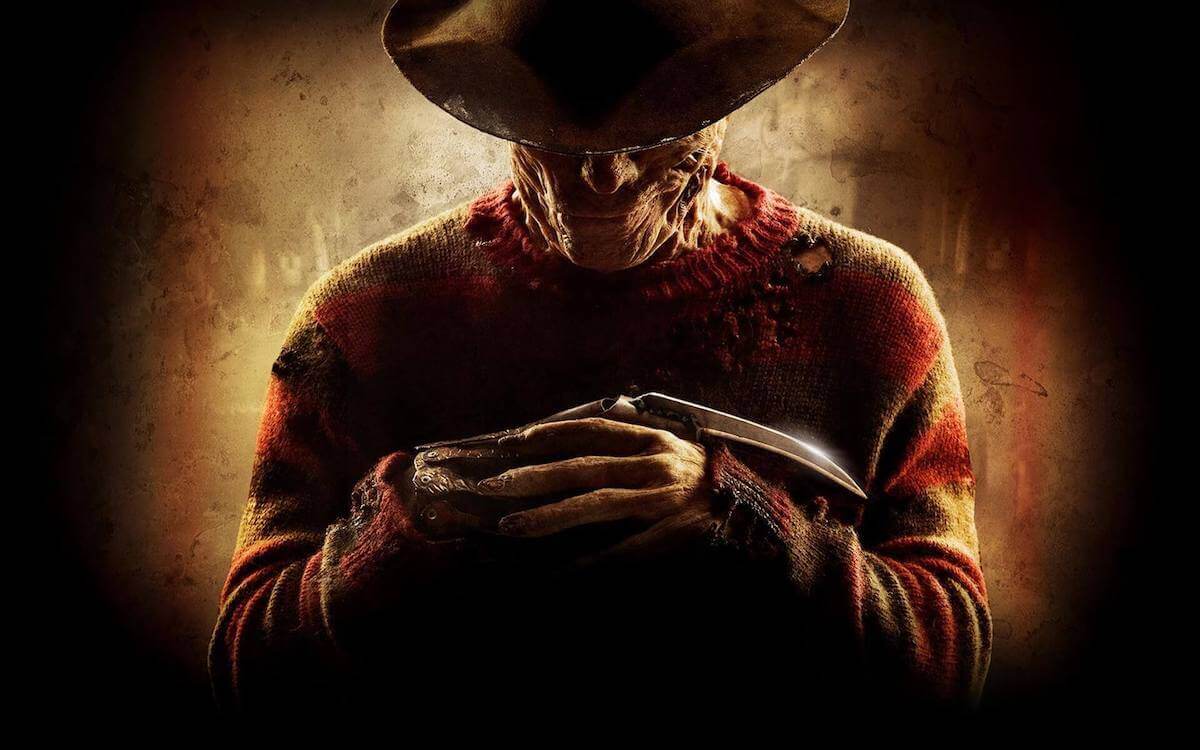
What is Horror? Definition and Examples in Film
W hy are humans drawn to the horror genre? From books to film, we can’t seem to get enough of what scares us most. In this article, we will look at the definition of horror and why we enjoy the genre so much. We will also look at a brief history of American cinema and how horror has evolved over the years. While this article will provide a general definition of horror, the genre is open to interpretation. After all, what is horror to you, is Child’s Play to me.
Watch: What Makes a Great Jump Scare?
Subscribe for more filmmaking videos like this.
Define Horror
The horror genre explained.
Horror is one of the most popular genres in storytelling. What began in literature can now be found in movies, television, theatre, and video games. The horror genre has been divided into many sub-genres with their own definitions and criteria. Before we get to those, let's define horror at a basic level:
HORROR DEFINITION
What is horror.
Horror is a genre of storytelling intended to scare, shock, and thrill its audience. Horror can be interpreted in many different ways, but there is often a central villain, monster, or threat that is often a reflection of the fears being experienced by society at the time. This person or creature is called the “other,” a term that refers to someone that is feared because they are different or misunderstood. This is also why the horror genre has changed so much over the years. As culture and fears change, so does horror.
What are some defining elements of the horror genre?
- Themes : The horror genre is often a reflection of the culture and what it fears at the time (invasion, disease, nuclear testing, etc.).
- Character Types : Besides the killer, monster, or threat, the various sub-genres contain certain hero archetypes (e.g., the Final Girl in Slasher movies).
- Setting : Horror can have many settings, such as: a gothic castle, small town, outer space, or haunted house. It can take place in the past, present or future.
- Music : This is an important facet in the horror genre. It can be used with great effect to build atmosphere and suspense.
Horror Subgenres
Different types of horror movies.
The horror genre has given birth to many sub-genres and hybrids of these various types. Each has its own unique themes, but all of them share one common goal: FEAR.
Found Footage
The point-of-view takes place from the perspective of a camera. Famous titles include The Blair Witch Project and Rec .
Lovecraftian
Focuses on cosmic horror. Monsters are beings beyond our comprehension. Often incorporates science fiction, including horror classics like Alien and The Thing .
Psychological
This sub-genre focuses on the horror of the mind. What is real? What is madness? Two great psychological horror movies are Silence of the Lambs and Jacob’s Ladder .
Science Fiction
Focuses on the horror and consequences of technology. Monsters are often aliens or machines. Two great sci-fi horror movies are The Blob and War of the Worlds .
The monster is a psychopath with a penchant for bloody murder. Often focuses on the punishment of promiscuous teenagers. Popular movies include Halloween and A Nightmare on Elm Street .
Supernatural
Focuses on the afterlife. Primary creatures include ghosts and demons. Great titles include Poltergeist and The Exorcist .
Similar to slasher; focuses on the punishment of people. The villain takes pleasure in the physical and psychological torment of victims. Famous movies include Hostel and Saw .
One of the oldest horror sub-genres in which icons like Dracula feed on human blood. Some of the best vampire movies include Nosferatu and Interview with the Vampire .
When a full moon is out, beware of these beastly shape-shifters. The best werewolf movies include An American Werewolf in London and The Wolf Man .
A group of survivors is usually attacked by a horde of flesh-eating undead. Night of the Living Dead is considered one of the best zombie movies along with 28 Days Later... and Shaun of the Dead .
A History of Horror Movies 1896-2018
Horror vs thriller, the relationship of horror and thriller.
While the two genres are often confused, there is a clear difference between horror and thriller movies. Horror movie rules demand violence and a monster that appears early and relatively frequently. The climax revolves around a final fight or an escape from the monster. The "monster" in horror is typically "unnatural" or even "supernatural," whereas thrillers tend to rely on human threats.
In a thriller, there is much more mystery and discovery. Tensions rise as the protagonist gets closer to discovering the evil threat. The climax revolves around a big reveal, such as the true intentions of the villain.
The two genres con blend, of course, such as the modern horror/thriller Get Out (2017). Something like Halloween might also be considered a crossover since the killer is human but he exhibits supernatural abilities — like how he never seems to die when he's "killed."
Now that we've covered our horror film definition, let's take a look back at a history of horror movies. Through the decades, the horror movie has evolved to reflect what we we fear the most, as explained in this video.
The Horror Genre and Cultural Fears
1930’s horror, horror and the depression.
The 1930s was a tough period for America. We were in the midst of the Great Depression and Americans were feeling more desperate than ever before. Despite the economic turmoil, people spent what little they had on entertainment, like movies. One of the first great American horror films that garnered much popularity was Dracula (1931), based on the novel by Bram Stoker. And it set the standard for the Best Vampire Movies thereafter.
But why was Dracula so terrifying? Americans were afraid of European influence. World War I ended only 13 years prior. The American mindset was still heavily influenced by the atrocities that took place. Combined with the influx of European immigrants, people were afraid of outsiders corrupting American culture. Someone had to be the scapegoat.
Another film that was a reflection of the fears of the time was Frankenstein (1931), based on the novel by Mary Shelly. This movie created a more sympathetic monster; one that was fleeing from the oppression of his creator.
Below is the original disclaimer that ran before the movie began. It is a warning played up for dramatic effect ("...it might even horrify you!").
Frankenstein Disclaimer
Americans felt as though they that their government had failed them. They blamed their leaders for their misfortune, much like how Dr. Frankenstein failed to protect his creation.
A recurring theme in horror is that the monster is often mankind itself. The villagers lashed out against something they didn’t understand, becoming monsters themselves.
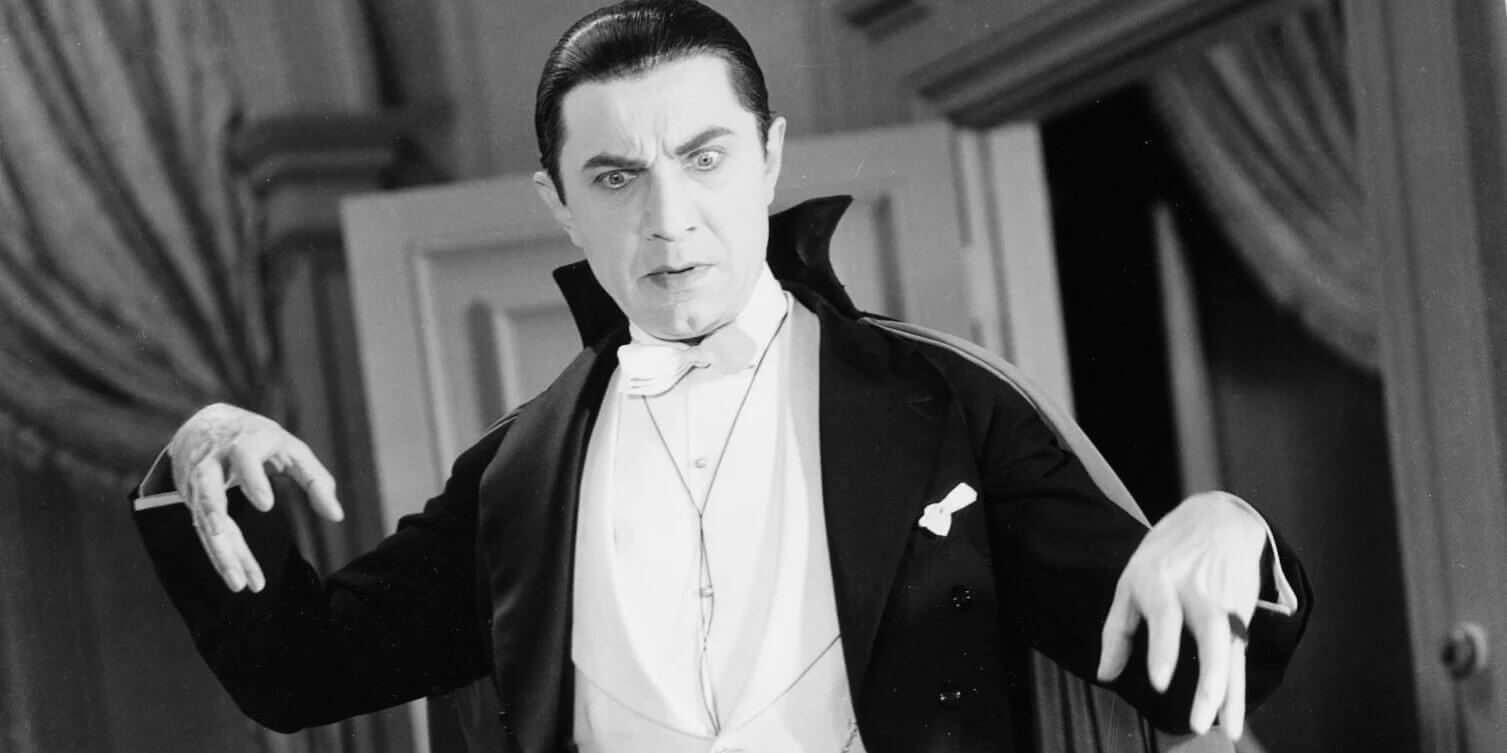
What is Horror? Dracula (1931)
1950s horror, horror in the '50s.
World War II ended in 1945, but it left a huge mark on the world, both literally and figuratively. The use of nuclear weapons on Hiroshima and Nagasaki gave way to a new era of fear in the nuclear age. The consequences of mankind’s use of science and technology would become a common theme.
Often not thought of as horror, Godzilla (1954) is a Japanese film that came to America. It was a response to the bombs used by the U.S. In this story, an animal is transformed by nuclear radiation into a giant monster and terrorizes the country. With the advent of the nuclear age, many questions and fears were brought up with this powerful but dangerous energy source.
The monster movie has a rich tradition within the horror genre, dating back to the very first movies. Do yourself a favor and watch this documentary on the history of the monster movie.
History of the Horror Genre • Monster Movies
The 50’s also gave to the Red Scare and the fear of communism. The theme of invasion became prevalent in many monster movies. Science fiction would blend with the horror genre, giving birth to films such as War of the Worlds (1953) and Invasion of the Body Snatchers (1956).
In the first film, aliens begin an invasion of earth in a small town, indicative of a communist attack. In the second film, humans are replaced with alien duplicates, which represents the fear of communism overtaking democracy.
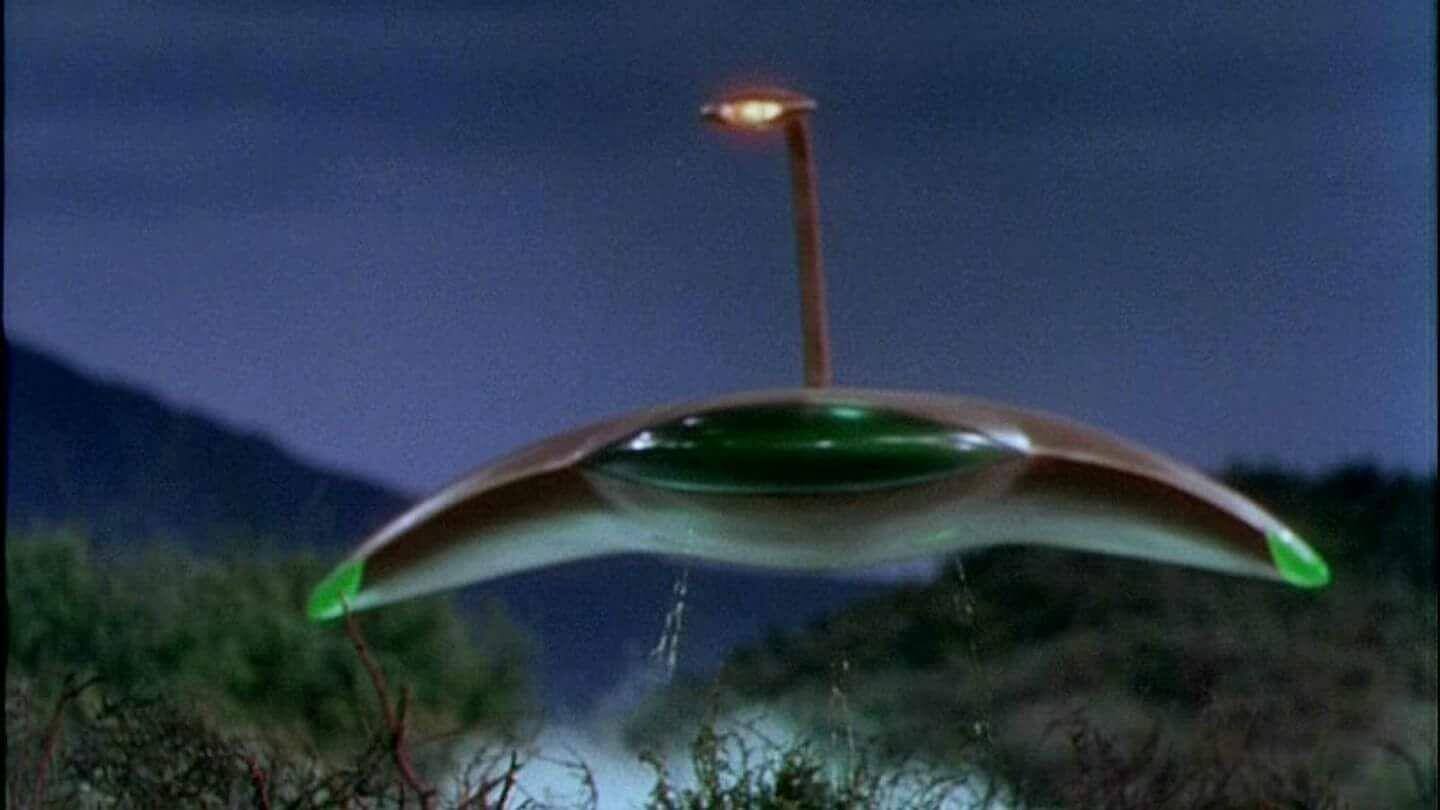
What is Horror? War of the Worlds (1953)
1960s-'70s horror, when the monster became human.
The 1960s-'70s was a period of uncertainty and violence for America. We were in the midst of the Vietnam War, a conflict that caused much controversy. For the first time, the U.S. was no longer in the right for a global conflict. The violence committed by men led to the fear of what we as a species were capable of.
Night of the Living Dead (1968) came as a result of this fear and uncertainty. The monsters, which looked very human, would mercilessly attack, kill and devour people. What made the zombies most terrifying was that they could take on the appearance of our loved ones. If we cannot trust our fellow human, who can we trust?
Thanks to a copyright error, Night of the Living Dead belongs in the public domain. That means you can watch it for free right now. Any self-respecting horror genre fan has to watch this movie.
Watch Night of the Living Dead in its entirety
The 70’s were also known for the increase in news coverage on serial killer murders. Media outlets reported on these maniacs as if they were celebrities. People were afraid of the monster next door coming by and killing them in their homes.
This gave rise to the first “slasher,” Halloween (1978). Despite appearing human, Michael Myers was an unstoppable killer that stalked his victims with murderous intent. Slashers grew immensely in popularity, even affecting movies that are not slashers .
The slasher sub-genre would also explore the subject of morality. The sexually promiscuous would be punished and violently murdered, while the moral “Final Girl” would survive to the bitter end.
One would think that these human monsters would drive people away from horror. But the blood-soaked films would make the genre more popular than ever.
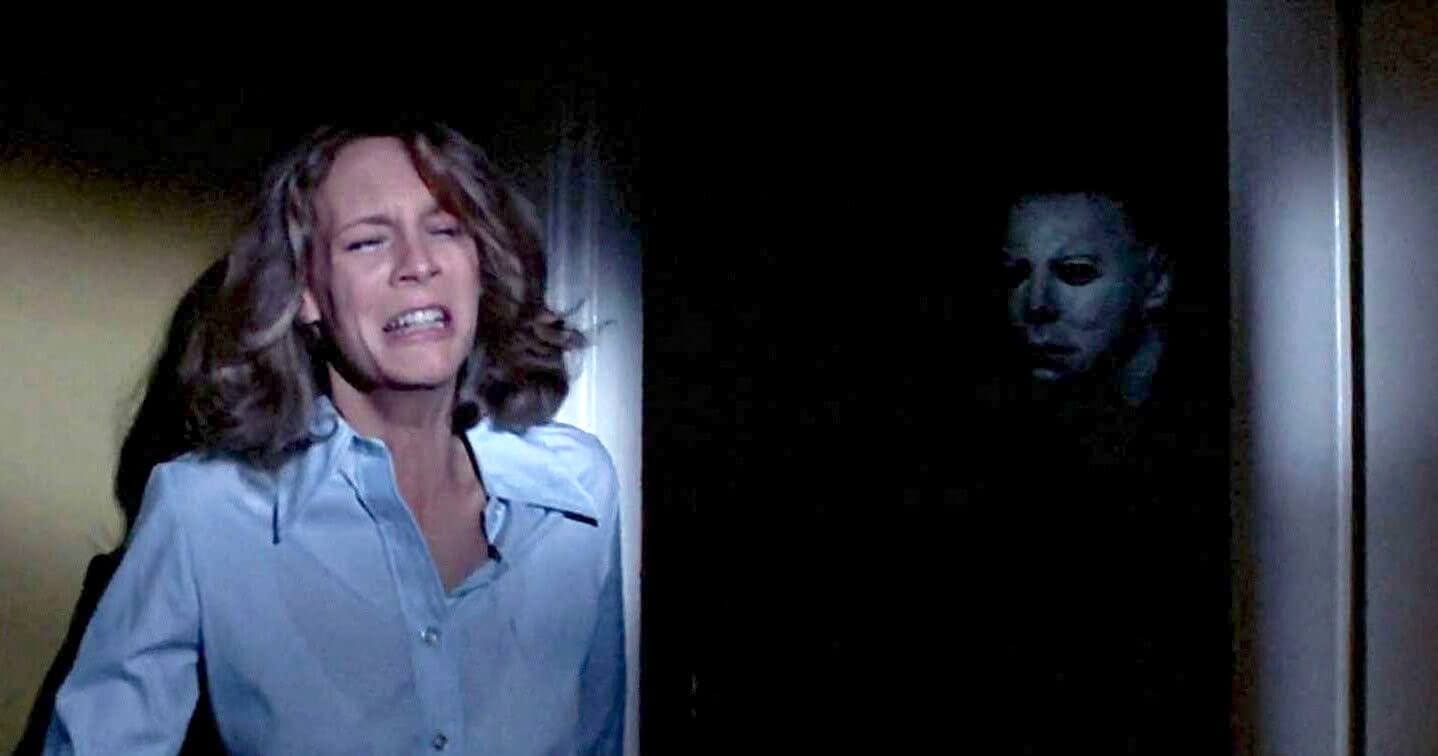
What is Horror? Halloween (1976)
1980s-'90s horror, what is self-aware horror.
Coming out of the serial killer era in the '70s, the '80s would continue the trend of slashers with a massive influx of these movies. Friday the 13th , A Nightmare on Elm Street and even Halloween would spawn numerous sequels, each one more absurd than the last.
Hitting a breaking point, the horror genre became more "aware" of itself in the form of Scream (1996). Though very much still a slasher, this film acknowledged the well-worn tropes established by its predecessors, such as the Final Girl.
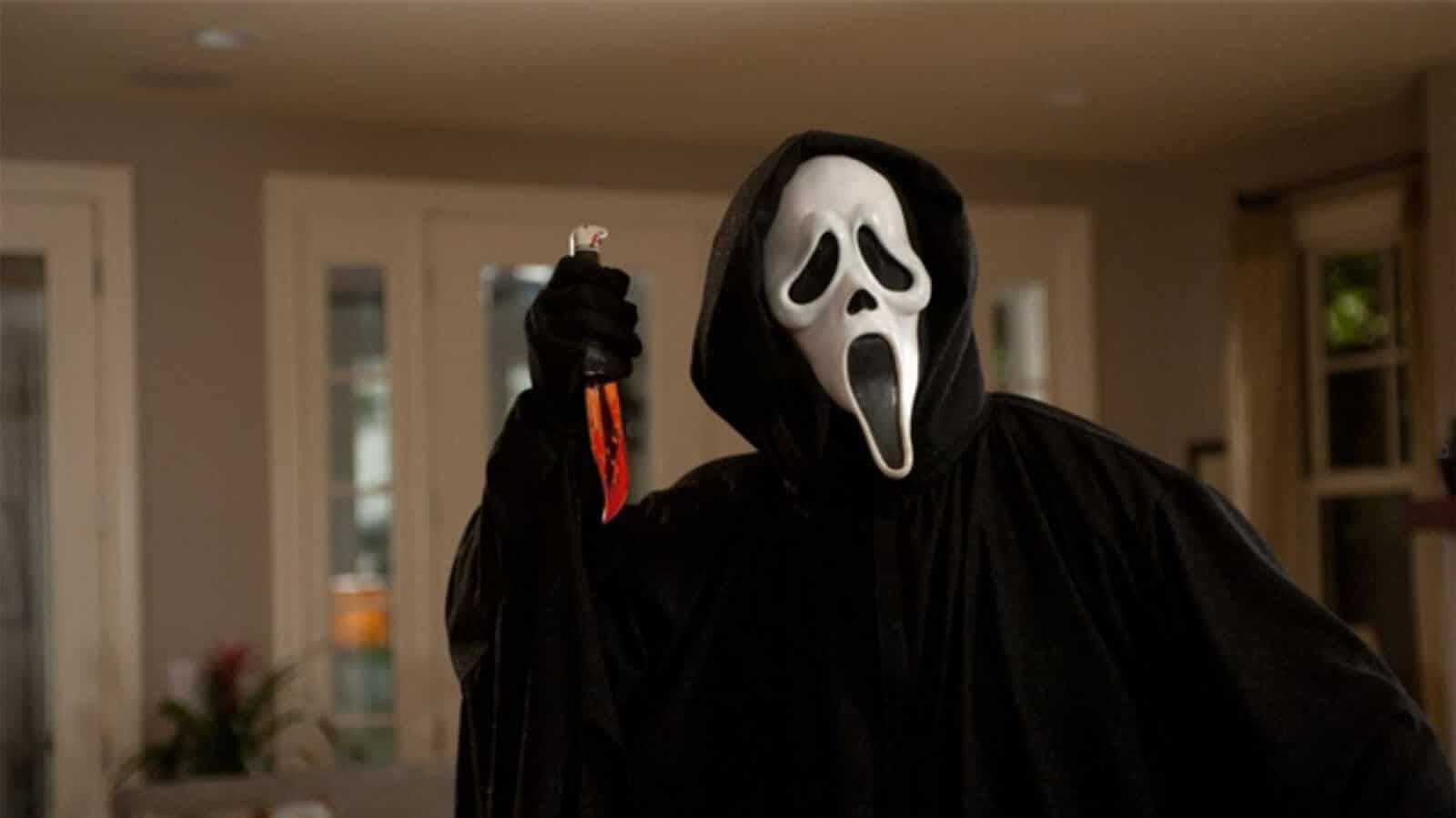
What is Horror? Scream (1996)
Buffy the Vampire Slayer (1997-2003) would take the trope of the weak high school girl and turn her into a monster killer. While the protagonist, Buffy, was killing vampires and other monsters, she and her friends would still experience the woes of being a teenager.
The '90s would also pave the way for a new sub-genre: found footage. The Blair Witch Project (1999) gave the audience the point-of-view of a camera, putting them in the shoes of the victims. This made the horror more personal for viewers, revitalizing the genre as a whole.
Horror Sub-genres • Found Footage
2000s horror, when the horror film took a dark turn.
After 9/11, the war on terror would spawn a generation of films that would redefine what horror is: torture. The prospect of psychos capturing and torturing their victims, both physically and psychologically proved to be a box office success.
Perhaps the most notorious of these is Saw (2004). In this film, a sociopath captures several people and forces them to play his sadistic games if they want to survive. This gruesome concept would spawn a plethora of sequels and copycats, flooding the market and coining a new term for the excess of violence: torture porn.
Global fears and international terror attacks made the end of the world seem more plausible. People became more fascinated than ever over the prospect of a catastrophe like a zombie apocalypse.
As such, the horror genre would reflect this with shows such as The Walking Dead (2010-present). How would any of us survive? How can something so overwhelming ever be stopped? As zombie movies grew in popularity, so did the number of movies. And as this video explains, what we now call "zombies" began as something quite different.
Horror Sub-genres • Zombies
The future of horror, what is horror today.
To say we live in a new world would be an understatement. The COVID-19 pandemic has changed the way we act, think and feel. Global culture as a whole has changed and it will continue to do so for some time. As such, expect the horror genre to reflect this evolution of fear. Don’t be surprised when an influx of movies revolving around isolation and global pandemics hits theaters.
There has been a sort of renaissance of horror movies in the last decade that has been quite excited to watch. Films like The Witch , It Follows and Hereditary have been dubbed "elevated horror" — a divisive term to say the least. Whatever we call them, they are all still really strong and effective horror movies. Here's a breakdown of Midsommar and how the shape of the horror genre continues to evolve.
How Ari Aster Uses the Background • Subscribe on YouTube
The best horror movies of all time.
We just covered a very broad horror genre definition and there is a lot more to explore. We've been talking a lot about the horror genre but now it's time to face our fears and actually watch some. Through the last century, across genre to sub-genre, from ghouls to goblins, here are the Best Horror Movies of All Time.
Up Next: Best Horror Movies →
Showcase your vision with elegant shot lists and storyboards..
Create robust and customizable shot lists. Upload images to make storyboards and slideshows.
Learn More ➜
- Pricing & Plans
- Product Updates
- Featured On
- StudioBinder Partners
- The Ultimate Guide to Call Sheets (with FREE Call Sheet Template)
- How to Break Down a Script (with FREE Script Breakdown Sheet)
- The Only Shot List Template You Need — with Free Download
- Managing Your Film Budget Cashflow & PO Log (Free Template)
- A Better Film Crew List Template Booking Sheet
- Best Storyboard Softwares (with free Storyboard Templates)
- Movie Magic Scheduling
- Gorilla Software
- Storyboard That
A visual medium requires visual methods. Master the art of visual storytelling with our FREE video series on directing and filmmaking techniques.
We’re in a golden age of TV writing and development. More and more people are flocking to the small screen to find daily entertainment. So how can you break put from the pack and get your idea onto the small screen? We’re here to help.
- Making It: From Pre-Production to Screen
- VFX vs. CGI vs. SFX — Decoding the Debate
- What is a Freeze Frame — The Best Examples & Why They Work
- TV Script Format 101 — Examples of How to Format a TV Script
- Best Free Musical Movie Scripts Online (with PDF Downloads)
- What is Tragedy — Definition, Examples & Types Explained
- 69 Facebook
- 11 Pinterest
- International edition
- Australia edition
- Europe edition
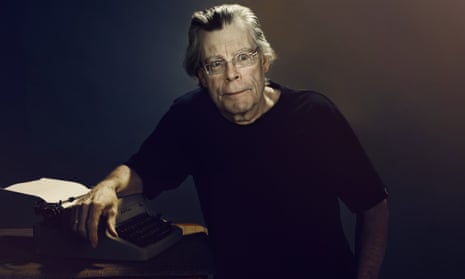
Top 10 horror short stories
With Halloween looming, these tales by authors from Shirley Jackson to Stephen King are guaranteed to keep you awake as the nights close in
I n the foreword to his anthology Skeleton Crew, Stephen King launched a memorable defence of the horror short story. No, they weren’t failed novels. Neither were they ideas he couldn’t bring himself to bin. Comparing a novel to a long affair, he saw the short story as a “quick kiss in the dark with a stranger … but those kisses can be sweet”.
He is right, of course. Some of literature’s most enduring nightmares are short-form. MR James never wrote a novel. Neither did HP Lovecraft . I would argue that their enduring appeal is also ingrained in our childhood: they’re the bedtime story, the vicious Grimms’ fairytale, the ghost story shared around a crackling campfire.
Along with the Pan horror anthologies I inhaled as a kid, it was those memories I tried to recapture when I wrote my own collection, Silverweed Road . Set on a cursed suburban street, the horrors lurking behind each door unlock tales of were-foxes, predatory swimming pools, vengeful urns and a darts player’s pact with the devil.
While all of the stories interlink to form a weird horror ecosystem, I was never chasing a sustained chill. What I was after was that brief, pleasing trickle of fear only a short story can deliver: what I like to call the pleasure shiver. As the sun sinks, the nights close in and spooky season creeps ever closer, what better time to experience a pleasure shiver or 10?
Horror is a many-tentacled beast. From phantom staircases to sinister taxidermists, here are some favourites – but I readily admit to some painful omissions (no Poe, no Kafka, no Blackwood, I could go on) so I eagerly await your comments.
1. The Tower by Marghanita Laski On a stifling tour of Florence, newlywed Caroline breaks free from her controlling husband to explore the Italian countryside. Beyond a dusty track, on a distant hill, a stone tower beckons … As Caroline journeys up its spiral staircase – counting each step, relishing her freedom – the walls close in on her impossible ascent. Or is it descent? While the phallic tower as a patriarchal totem feels a little obvious, what Laski recounts in sparse prose is anything but: the horror is abstract, the fear suffocating, and Caroline’s fate lurks long in the mind. By the end, you’ll be gripping the page like a rusty handrail. Laski was best known as a vinegary literary critic. The Tower was a rare foray into horror. I wish she had written more.
2. In the Bag by Ramsey Campbell “The boy’s faced struggled within the plastic bag … His eyes were grey blank holes, full of fog beneath the plastic.” So begins the haunting of Clarke – a militant headmaster who feels no guilt for suffocating his playmate during a childhood prank, long ago yet not forgotten … There is something distinctly, darkly Nabokovian about Campbell’s fiction: a shared obsession with the enigma of memory, and how we cope with it. In the Bag is a masterful example: his blurring of past trauma with the supernatural is the literary equivalent of knitting fog. Clarke’s cruel fate is exceptionally nasty. Like all great horror stories, it ends with a gasp.
3. Survivor Type by Stephen King Of King’s 200-plus stories, I always come back to this one. Offering a day-by-day narrative drive, the diary is perfect for short stories. In Survivor Type, disgraced surgeon turned drug smuggler Richard Pine finds himself marooned on a barren island. As he awaits rescue, entries in his lifeboat logbook pass the time. Nobody comes. There’s nothing to eat. He sharpens a knife and looks at his leg … Oh boy. No ghosts, aliens, or killer clowns. Just auto-cannibalism and stark human horror. King at his most transgressive, and best consumed on an empty stomach.
4. The Landlady by Roald Dahl Poor Billy Weaver. Just turned 17, sent to Bath on a work trip, lost, tired and with nowhere to stay. A cheap B&B and a smiling old landlady offer salvation. And she must be nice because she has pets … Dahl’s unflashy prose is his secret weapon. The simple style disarms you, only before Dahl plunges in the knife. I won’t ruin the twist but the foreshadowing is exquisitely devious. The silent dachshund by the fire. The guest book with only two names. The landlady praising Billy’s beautiful teeth. Dahl wrote The Landlady as a ghost story, scowled at it, then changed the ending. Wise move.
5. The Forbidden by Clive Barker When Books of Blood was unleashed in 1984, Stephen King said: “I have seen the future of horror – and his name is Clive Barker .” With six volumes and 30 stories, what do I pick? The man-made giants of In the Hills, the Cities? The Body Politic’s army of skittering hands? The demonic slapstick of The Yattering and Jack? To hell with it: let’s go with The Forbidden. Candyman is a fine Hollywood adaptation, but in relocating it sacrifices the cold, wintry dread of Barker’s Spector Street Estate: a graffiti-ravaged brutalist pit of social-realist despair where its urban legend looms.
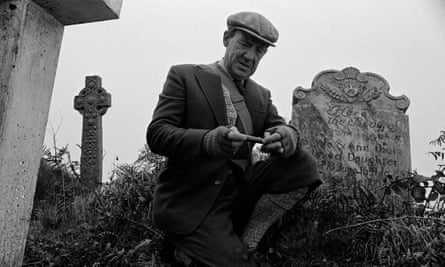
6. Oh, Whistle, and I’ll Come To You, My Lad by MR James Quintessential James. A callow academic unearths an artefact (a bronze whistle on a shingle beach). An ancient, unknowable force is unleashed (in a two-bed room at the Globe Inn). The subtly uncoiling doom is very Jamesian: a white figure glimpsed in a window, a freshly made bed, mysteriously twisted. Oh, Whistle’s final reveal of “a horrible, an intensely horrible, face of crumpled linen” left me petrified the first time I read it, and my battered copy of his Collected Ghost Stories suggests I’m a glutton for punishment.
7. The October Game by Ray Bradbury Halloween. A suburban house. Mich shuts the gun back in the drawer. Too fast. Too neat. He wants his wife Louise to suffer … From The Veldt to Free Dirt, Bradbury was a master of creepy slow-burners, but he really reached into the abyss for this one. Gouged out in 1948, The October Game’s portrait of a sadistic spouse remains shocking. When Mich invites his wife, daughter and neighbours to play “the witch game” in their pitch-black cellar, Bradbury’s maxim of “hint, don’t show” hits full-force. Dread mingles with the sound of children’s laughter. You daren’t look. Then the cellar lights flash on. At which point, Bradbury abandons you, leaving you alone to your squirming imagination.
8. The Dunwich Horror by HP Lovecraft To the domed hills of Arkham and an unseen entity, growing in a farmhouse fit to burst. Reducing mankind to an insignificant speck in a malignant universe of cosmic gods, Lovecraft is a sub-genre unto himself, and Dunwich is practically Lovecraft bingo: there are rituals, tentacles, summonings, the Necronomicon, ineffable evils and, in mutant Wilbur Whateley, his greatest character. No matter how many times I’ve read the description of his dog-mauled corpse, I still fan my armpits in feverish confusion (“The goatish, chinless face … coarse black fur … tentacles with red sucking mouths … on each of the hips, deep set in a pinkish ciliated orbit, was what seemed to be a rudimentary eye”). Some find Lovecraft’s decadent prose a turn-off. I’d say it’s key to the madness.
9. The Lottery by Shirley Jackson In The Haunting of Hill House, the incomparable Shirley Jackson delivered horror lit’s scariest line (“God! Whose hand was I holding?”). The Lottery is, for my money, her most terrifying vision of all. It’s a bright, blooming summer’s day in a bucolic village. Laughing children play with stones as the villagers gather around a box. Old Man Warner speaks: “Lottery in June, corn be heavy soon …” There are no winners in Jackson’s chilling parable of blind faith. Every interpretation – be it organised religion, capital punishment, mob rule – remains both valid and depressingly timeless. Ironically, Jackson weathered a truly frightening aftermath post-publication: hate mail by the sack-load, as viciously unthinking as The Lottery’s villagers.
10. The Horla by Guy de Maupassant Featuring a vaporous vampiric entity whose persistent, ever-watchful presence drives its genteel protagonist into madness, it was actually a Frenchman who popularised the malevolent, bump-in-the-night, kneel-on-your-chest ghost story. The climax is ruthless but The Horla’s lasting power is in its understanding that terror comes from the unknown and unglimpsed, and went on to inspire Lovecraft’s Cthulhu mythos.
- Horror books
- Short stories
- Stephen King
- Clive Barker
- HP Lovecraft
- Guy de Maupassant
Comments (…)
Most viewed.

Introduction: What, Why and When Is Horror Fiction? (2016)

2016, Horror: A Literary History
This introduction sets out the basic elements and nature of horror fiction by answering the questions ‘what is horror fiction?’, ‘when is horror fiction?’ and ‘why is horror fiction?’. It also introduces the parameters of the book and its selection process.
Related Papers
Aalya Ahmad
Horror Studies
Steven Bruhm
James Aston
The proliferation of North American horror films in the 21st century has engendered an increase in critical and academic response which has almost exclusively focused on the conventions of mainstream horror cinema. That is, films sanctioned by classificatory bodies, released through mid to large production companies and exhibited via selected to wide theatrical releases. While academic work, drawing from film and cultural studies, has provided a much needed engagement with the popularity and themes of contemporary U.S. horror they have tended to exclude marginal or ‘hidden’ horror film examples. Therefore, working from Antonio Lázaro-Reboll’s work on the ‘archaeology of horror’ put forward in The Spanish Horror Film (2012), this paper (which is part of a monograph on the subject) will similarly seek to “reintegrate marginal filmic and cultural practices” (p.7) into 21st century U.S. horror. Within the paper an account of the aesthetic and thematic strategies of the films will be provided which will work toward supplying a definition of the term hardcore horror. A number of filmic examples will be given (such as films by Fred Vogel, Shane Ryan and Lucifer Valentine) and areas such as production, marketing, and consumption will be addressed. The importance of looking at hardcore horror is that these films operate outside of normative filmmaking practice and in doing so provide a wider examination of the cultural field of U.S. horror in terms of how it is made and experienced. The paper will hope to provide a redefinition of the boundaries of the genre within the context of contemporary U.S. horror, so that overlooked horror films and their revisions and alterations of commercial production, marketing and consumption practices can be included. In turn, this will help to better understand the interface between filmmaker and audience (and scholar), especially when it comes to cultural representations of and experience toward horror.
The philosophy of horror
Scoob J.Jones
Bernd Warnders
Jedediah Bishop
Poliana Andrade
The Journal of Aesthetics and Art Criticism
Darren Hick
In this article, following a trajectory set out by Noël Carroll, Matt Hills, and Andrea Sauchelli, I propose a definition of horror, according to which something qualifies as a work of horror if and only if it centrally and demonstrably aims at provoking one or more of a particular set of negative affects. A catalog of characteristically negative affects is associated with horror—including terror, revulsion, the uncanny, and the abject—but which cannot be collapsed into any single affect. Further complicating matters is that the set appears to be constantly, if slowly, mutating, so that the affects aimed at in the horror of the 1920s do not entirely overlap with those aimed at horror today, or which we might expect horror to aim at a century from now. As such, while we use “horror” as a blanket term across eras, whether some work is a work of horror will always be time-indexed.
Fear and Learning: Essays on the Pedagogy of Horror
Sean Moreland
As studies of horror have increasingly gained scholarly acceptance, more horror texts are finding their way onto curricula in a number of disciplines. These fictions have always invited a powerful response from their readers and audiences, reactions that have generated numerous interpretations and attempts to explain horror's popularity despite, and possibly even because of, horror's supposedly lowly status, a status that used to be uncritically accepted and accorded also to horror's readers and audiences. Since the late 1980s, the assumption that literary and cinematic horror texts are low cultural forms unworthy of serious critical attention has been successfully challenged on a number of fronts. The essays in this book are therefore no longer constrained by the requirement to bring horror into the realm of scholarly concern. Instead, they explore what the study of horror makes possible, conveying fresh insights into both the genre and its audiences. Fear and Learning incorporates diverse thematic, stylistic and methodological perspectives on the pedagogy of horror, presenting practical studies of horror fictions that reveal important intersections between the academy, culture and society. This book is not only for teachers. It is for everybody who is interested in what we can learn from horror.
RELATED PAPERS
Malkhaz Mumladze
Stefan Grondelaers
Pivot: A Journal of Interdisciplinary Studies and Thought
Elizabeth Bleicher
Le travail humain
Aude Dufresne
Journal of Electronic Materials
Peter Borgesen
Enrica Zanin
Environment and Behavior
Antonio Peri
Louise Sauvé
Duvan Cervantes Fuentes
Ophthalmology
Wayne Fuchs
Gisele Leite
Magdalena Svanström
Joško Božanić
American Journal of Clinical Pathology
Fredy Chablé Montero
International Journal of Parallel Programming
International Journal of Research and Innovation in Social Science
Abdulhadi Ibrahim
SCHOOL EDUCATION JOURNAL PGSD FIP UNIMED
Iis Azura nurjanah
Internet Research
Wolfgang Weitzl
Phytopathology®
Philippe Letourmy
oscar crescente
bioRxiv (Cold Spring Harbor Laboratory)
jack caravanos
Schizophrenia Research
Stephan Eliez
The Astrophysical Journal
Computers & Industrial Engineering
rasoul shafaei
RELATED TOPICS
- We're Hiring!
- Help Center
- Find new research papers in:
- Health Sciences
- Earth Sciences
- Cognitive Science
- Mathematics
- Computer Science
- Academia ©2024
More From Forbes
20 greatest horror books of all time.
- Share to Facebook
- Share to Twitter
- Share to Linkedin
Jack Nicholson peering through axed in door in lobby card for the film "The Shining," 1980.
Horror is a fascinating genre because it takes the fears of humanity and experiences in the dark corners of the psyche and examines them in the open as a powerfully imaginative literary genre. As a form, horror is about stories that frighten and fascinate, from the uncanny to the supernatural to the grotesque, unearthing the petrifying and the horrific. The best horror is designed to be frightening and disturbing in equal measure, which is part of what makes it so memorable.
Top Horror Books
There are horror novels that have set the standard in the world of literature, including Mary Shelley’s Frankenstein (1818), Bram Stoker’s Dracula (1897), and Stephen King’s The Shining (1977). These books are not just scary to read or re-read, but they define the very scope of the horror genre.
20 . We Have Always Lived in the Castle, By Shirley Jackson
Shirley Jackson’s We Have Always Lived in the Castle is one of the most peculiar and chilling novels in American literary horror history. Published in 1962, it is one of the last books Shirley Jackson ever wrote, and it captures her distinct sense of psychological horror and her unique toolkit for exploring human interiority and commenting on social mores. One of the novel's central themes is the idea of physical and emotional isolation. This duality explores the human condition—the safety of familiar spaces and the suffocating effect they can have on the psyche. We Have Always Lived in the Castle was published by Penguin Random House .
Who should read: This novel is an excellent read for fans of psychological horror, literary fiction, or stories exploring themes of isolation and suspicion.
19. The Haunting of Hill House By Shirley Jackson
Shirley Jackson makes another appearance on this list again with her 1959 release, The Haunting of Hill House , a book that created a very different kind of classic horror literature. Jackson, who refused to be restricted by genre conventions, created a novel that offers a profound investigation of psychic hauntings, and more than six decades later, it remains a touchstone for authors and filmmakers. Though undeniably a creepy ghost story, The Haunting of Hill House is a work of unusual precision; its foundation is a studied examination of the dark, hostile space that exists between humans. Its sustained evocation of terror may be unique in that it deploys its chills in the service of a broader but no less terrifying analysis of human nature. The book revolves around four characters: John Montague, who is a scholar interested in proving that the supernatural exists; Eleanor Vance, an embittered nursery maid who has led a sheltered life taking care of her overbearing mother; Theodora, a bohemian artist; and Luke Sanderson, the young heir to Hill House. The Haunting of Hill House can be found at Penguin Random House .
Apple iPhone 16 Pro Design Upgrade Shines In New Leak
It s possible the russian army is tricking the ukrainian army with a fake offensive, ufc st louis results bonus winners from night of memorable finishes.
Who should read: The Haunting of Hill House is a psychological horror book with gothic elements, making it an ideal read for a diverse range of readers who are drawn to classic horror.
18. Let the Right One In By John Ajvide Lindqvist
In John Ajvide Lindqvist’s Let the Right One In (2004), the Swedish novel from which a recent film is adapted, the “right one” turns out to be a vampire, a perfected version of the lonesome hero tapping on a latch still held on by a rickety thread. In this novel, Lindqvist turns vampire folklore inside out, blending the horror, romance , and drama of the vampire narrative with the gritty, grim worlds—of 1980s Blackeberg, a Swedish suburb near Stockholm—that have become a recurring theme in his work. Oskar, the middle-school boy at the heart of the novel, is a victim of bullies at school and haunted by vengeance fantasies outside it. He lives with his mother in one of the blocks of flats where life has been reduced to living with your back to the wall, where the “dull grey” high-rise buildings that make up the estate not only magnify the “harsh, colorless light” of the sky but also the “drab, gray monotone” of Oskar’s sullen mood—before the arrival of the new girl next door. Let the Right One In can be found at Macmillan Publishers.
Who should read: Fans of horror will appreciate Lindqvist’s new and unsettling look at the vampire, which is lonelier, sadder, more desperate than the traditional rendition, and less glamorous and romantic.
17. Lord of the Flies By William Golding
William Golding’s Lord of the Flies (1954) is a psychological exploration of the dark side of human nature. In an under-defined wartime setting, the novel begins with a group of English schoolboys abandoned on a tropical island when their plane crashes into the sea. Their new world is one of adventure and freedom from adults. Yet this fantasy of innocence soon reveals itself as deluded as their attempts to build a political system on the island fail disastrously. The boys’ attempts to enforce order and civilization are exposed as efforts to attempt the impossible: as fragile constructions that dissolve like a mirage of contact with human reality. This is not a bunch of kids adapting to a fight for survival; it is a lucid and haunting statement on the tenuousness of civilization, showing how thin the veneer of post-Enlightenment, liberal society is. This book is available at Penguin Random House .
Who should read: Teenagers often identify with the novel’s survival themes and children’s drama, as well as its cast of adolescent characters and its fundamental themes of independence, authority, and survival.
16. The Night Eaters: She Eats the Night By Marjorie Liu and Sana Takeda
Published in 2022, The Night Eaters: She Eats the Night is the first volume of an exciting new graphic novel horror trilogy by award-winning team Marjorie Liu and Sana Takeda, the duo behind the New York Times-bestselling Monstress trilogy. The book is filled with atmospheric horror infused with rich emotional characterization and vivid storytelling. The story is centered around the Yi family, who run a floundering Chinese restaurant day and night and confront phantoms and jilou (ghosts stemming from ancestral secrets) who threaten the family’s future. This book is available at Barnes & Noble .
Who should read: For fans of Liu and Takeda’s previous works, this trilogy offers a new and exciting universe to explore, but new readers will find She Eats the Night to be a captivating entry point into the dark and spellbinding worlds these two creators excel at crafting.
15. Nothing But Blackened Teeth By Cassandra Khaw
In the 2021 horror novella Nothing But Blackened Teeth, Cassandra Khaw uncovers the terror that comes through tensions of family and relationships played off against a creepy Japanese haunted house (of the Heian era). The supernatural is tangled in the too-real with a wedding that turns into a nightmare, an evil samurai spirit, the ghost of an executed wife, and an ancient suicide pact, with all the terror playing out through the entirety of the wedding party. As Khaw keeps increasing the stakes of her horrifyingly good drama, she keeps telegraphing (as writers often do) where you, as a reader, expect to find satisfaction, comfort, and an ending. This book is available at Barnes & Noble .
Who should read: Horror enthusiasts will be fascinated by this story because it is a thrilling, culturally rich horror story that should appeal to a broad audience. This book is particularly for those with a penchant for tight-knit storytelling.
14. Road of Bones By Christopher Golden
Christopher Golden’s Road of Bones, which was published in 2022, is a vivid depiction of how far people will go out of desperation for freedom. The novel follows the harrowing journey of Felix Teigland, a documentary filmmaker who is determined to explore the infamous Kolyma Highway in Siberia, known as the “Road of Bones.” This road, built during Stalin's reign, is notorious for being constructed on the corpses of prisoners who died during its construction. Felix, along with his team and a guide, venture into the Siberian wilderness to capture the haunted history of this road on film. This book is available on Macmillan Publishers .
Who should read: Readers who enjoy chilling suspense and eerie atmospheres typical of horror fiction will find Road of Bones deeply satisfying. The novel’s blend of ghostly apparitions and a sinister historical backdrop provides a fresh take on the traditional horror genre.
13. The Only Good Indians By Stephen Graham Jones
Stephen Graham Jones’ The Only Good Indians , is a book, published in 2020, that dives into the American Indian experience. This book is perfect for those who like their horror to make them think as well as make their skin crawl. The narrative follows four American Indian men — Lewis, Gabe, Cass and Ricky — whose life is shattered when, as boys, they stumble upon a terrible accident on an elk hunt. The incident breaks through their consciousness — and reminds them how far they’ve come and how much they’ve escaped — soon seems to be forgotten until, years later. What emerges, then, is a narrative terrain that deals with the role of culture, identity and guilt. The Only Good Indians can be found on Simon & Schuster .
Who should read: Readers who thrive on psychological horror and supernatural thrillers will appreciate the suspenseful, eerie storyline and the intense, haunting scenes of this book.
12. Doing Harm By Kelly Parson
Kelly Parson’s 2014 novel Doing Harm is a unique take on the ethical and moral dilemmas that pervade the medical field. It delves into the psyche of those who hold life and death in their hands. The story follows Steve Mitchell, a confident surgeon whose life seems perfectly on track with a promising career at Boston’s renowned University Hospital. The novel’s intensity ramps up when Steve’s world is turned upside down by a series of unsettling events. He discovers that a cunning and malevolent force within the hospital is causing inexplicable medical complications, and soon, Steve finds himself suspected of being the perpetrator. Doing Harm is available on Macmillan Publishers .
Who should read: Doing Harm by Kelly Parson is a good read for people who like medical-themed storylines and are fascinated by out-of-the-box plots.
11. Beloved By Toni Morrison
Toni Morrison’s Beloved (1987) is an American literary classic that is set in Ohio after the Civil War and tells the story of slave woman Sethe, who is still haunted by what she remembers of her enslavement, the murder of her husband and child, and the years she spent get her life back on track after she escaped. After she gains her freedom, she becomes haunted by the ghost of her dead baby, and in what appears to be a terrifying sequence, the infant’s ghost pushes Sethe to come to terms with the realities of her memory and the complex nature of the supernatural world. The novel brilliantly interrogates ideas of family, freedom and the legacy of the past. Beloved is available on Penguin Random House .
Who should read: Readers who enjoy evocative stories by Black authors that tap into lush storytelling and provocative themes will enjoy this book.
10. Roald Dahl’s Book of Ghost Stories By Roald Dahl
Just before his untimely death in 1990, Roald Dahl – probably the finest short-story writer for children of the latter half of the 20th century – poured over 749 short stories in the General Reference Collection in the British Museum Library, in search of the 14 marvelous gems for this 1983 anthology. The only essential criterion for Dahl’s selection seems to have been the story’s chilling power: it had to be able “to whip your spine with icy fear” and “slither you toward unholy thoughts.” This spine-chilling collection is the perfect accompaniment to many such occasions. It is not only a spooky story collection, but the longest in existence since it delves deeply into dark human interiors to showcase the finest examples of its genre and how unsettling they are. This book is available at Macmillan Publishers .
Who should read: Roald Dahl’s Book of Ghost Stories is an excellent read for people who enjoy a collection of horror books.
9. Those Across the River by Christopher Buehlman
Christopher Buehlman’s Those Across The River is a 2011 novel that follows the lives of a professor and his frail wife who retreat to their family estate in Georgia, where the crumbling remains of an ancient plantation lurk in the background. In 1935, amid a cloud of scandal, a professor and his wife seek refuge in their family estate in Georgia, shadowed by the crumbling remnants of an ancestral plantation. This setting forms the eerie backdrop for a tale steeped in Southern Gothic tradition and supernatural mystery . In a bizarre and chilling local custom, the townspeople engage in a monthly ritual where two pigs are sent across the river as sacrificial offerings but never return, sparking whispers and speculation about what dark forces might be claiming them. Those Across the River is available on Barnes & Noble .
Who should read: Christopher Buehlman’s Those Across The River is a great read for readers who enjoy horror, tradition and rituals from other cultures.
8. The Ruins by Scott Smith
Scott Smith’s The Ruins is one of those quick-in-quick-out page-turners but, thanks to the expert way the 2006 novel layers horror on horror, it also becomes a taut meditation on the nature of terror. It’s a novel for all those horror fans who are quick to notice the correlation between tales about a fantasy adventure that goes horribly wrong — about an ill-fated group of teenaged adventurers who, having found their summer paradise, assume the worst is over, who don’t suspect that the stunning beauty of their surroundings is like a veil concealing ancient horrors just waiting to be unveiled. The real terror might not be the supernatural at all, but the human: what we are all capable of. This book is available at Barnes & Noble .
Who should read: Scott Smith ’s The Ruins is an excellent book for readers who enjoy horror, fantasy, adventure and fiction.
7. Coraline By Neil Gaiman
Neil Gaiman’s Coraline is a book, published in 2002, that does not rely on gore or shock alone, but instead on a creeping sense of dread and the realization that the world we take for comfort may hold darker depths. The book plays into one of our scariest fears: that a dark stranger can assume, seemingly effortlessly, the comforting guise of someone we love and trust. In Coraline , young Coraline Jones discovers a dark reflection of her own reality, where everything that seems familiar right down to the button on her shirt is, ultimately, weird and uncanny. Although this book is specifically marketed towards young readers, its ideas and plot can still seem particularly scary, especially for those who are not quite used to.
Who should read: Young readers who are ready to start engaging with the horror genre will find this book particularly compelling. It is available on HarperCollinsPublisher .
6. White Is for Witching By Helen Oyeyemi
Helen Oyeyemi’s White Is for Witching , is a 2009 book about the Silver family who are mourning the death of their beloved matriarch, Lily, when they move into a creepy old mansion on a cliff overlooking the sea at Dover. Miranda and Eliot, Lily’s twins, watch in horror as the two of them try desperately to keep the huge house from falling into ruin after their mother’s death. Miranda doesn’t handle her loss well: She begins to act strangely, experiences mysterious pains, sucks chalk and grows paler by the day. Her beloved family watches helpless and bewildered as their daughter changes. It’s a spine-tingling example of the Gothic, where the spectral merges irresistibly with the secret, navigating the maze of family demons and paranoid suspicion that can both feed and multiply by the daily repetition of isolation. This book is available at Penguin Random House.
Who should read: This book is a good read for people who are fascinated by the intrigue and suspense that captivates the reader long after the last page.
5. Something Wicked This Way Comes By Ray Bradbury
Ray Bradbury ’s Something Wicked This Way Comes (1962) is pure Bradbury — dark, lyrical, filled with that wonderful, heavy foreboding that is often said to define his atmospheres. The novel isn’t Bradbury’s most commercially famous — that would be Fahrenheit 451 (1953) – but it is probably his best horror story. It is a story about a traveling circus full of carnival rides and games that comes to a town, and brings with it a strange and malicious man named Mr Dark who is able to grant the wishes of its residents in the most vengeful of ways. This book is available on Simon & Schuster .
Who should read: This book is a perfect read for people who enjoy dark horror and mysterious protagonists.
4. The House Across the Lake By Caroline Kepnes
Literary horror has an enduring fascination with secluded cabins and lake houses that offer the implausibly perfect setting for spooky acts and tit-for-tat paybacks. One of most effective uses of this trope is Caroline Kepnes’s 2022 novel, The House Across the Lake , where the widowed actress Casey Fletcher decides to spend some time alone in a holiday home in rural Vermont. Actually, alone is not how she wants it. So she ends up obsessively spying on her beautiful, wealthy neighbours. Before long, it dawns on Casey that those bubble baths and bracing runs in the woods aren’t all that’s going on, and that the couple appear to be directing an elaborate scam. This scam, it turns out, is being beautifully unravelled by Casey yet is seemingly about to be fatally undone by an increasingly erratic and dangerous off-scene partner. Her neighborly hobby turns into something much darker when one of her neighbors disappears without a trace.
Who should read: This book is a perfect read those who enjoy pulse-pounding suspense and intricate plot twists. The extra layer of mystery and horror makes this book especially compelling. This book is available at Penguin Random House .
3. Carrion Comfort By Dan Simmons
Dan Simmons’ 1989 novel Carrion Comfort has captivated horror fans with its unique and terrifying premise, offering a fresh twist on common fears. Although most people dread physical threats that could harm or steal their bodies, this novel introduces a far more sinister fear: The villain doesn’t seek to control one’s body but instead invades the human mind. In Carrion Comfort , the mind vampires are content to manipulate their victims from within by controlling their actions without ever needing to physically manifest. Dr. Saul Laski, a psychiatrist and concentration camp survivor whose haunting memories drive his quest. Armed with his sharp intellect, Dr. Laski is determined to uncover the origins of these malevolent forces and put an end to their reign of psychological terror. This compelling exploration of mind control and personal autonomy makes Carrion Comfort a standout in the horror genre, appealing to both aficionados and newcomers.
Who should read: This is a great book for readers who appreciate horror as a genre and like plots that are both mind-bending and intriguing. The book is available on Macmillan Publishers .
2. Frankenstein By Mary Shelley
Mary Shelley’s timeless 1818 masterpiece Frankenstein , has fascinated readers for over two centuries for good reason. The story poses a profound question that remains chillingly relevant even after so many years: What are the consequences when humanity dares to play God? The book centers around gothic horror, romantic tragedy, and philosophical inquiry and explores themes of ambition, responsibility, and the limits of human creativity. Shelley’s layered storytelling and attention to detail comes through as she explores the relationships between characters enhance the novel’s exploration of isolation and the desire for acceptance, making Frankenstein much more than just a horror story. Each reading of this tale about a visionary scientist and his monstrous creation offers new insights and emotional resonances. This book is available at Simon & Schuster .
Who should read: This is a great book for readers who are loyal to classic horror and love the intellectual aspects of it.
1. The Shining By Stephen King
It would be a travesty not to include Stephen King ’s masterpiece on this list, and quite frankly, it is hard to pick just one. King’s The Shining follows middle-aged writer Jack Torrance who thought he would solve his creative block when he was hired as the winter caretaker of the historic Overlook Hotel; what could be a better opportunity for writing and family time than a secluded goldmine? As the snows fall and the temperatures plummet, the once-palatial hotel begins to morph into something like a prison. Cut off from the rest of the world, Jack’s psyche quickly begins to unravel. The yawning, empty corridors of the hotel echo only with the sinister creaks of buildings settling into place, and the haunting shriek of wind down its chimneys. These sounds seem to drive Jack towards a state of madness, rather than inspiring creativity. And this ultimately leads his wife and son to be at his mercy. The Shining is available on Penguin Random House .
Who should read: Stephen King’s The Shining is percet for people who are fascinated by the psychological aspects of horror and especially those who are fascinated by the breakdown of the human psyche under isolation and stress.
- Editorial Standards
- Reprints & Permissions
Join The Conversation
One Community. Many Voices. Create a free account to share your thoughts.
Forbes Community Guidelines
Our community is about connecting people through open and thoughtful conversations. We want our readers to share their views and exchange ideas and facts in a safe space.
In order to do so, please follow the posting rules in our site's Terms of Service. We've summarized some of those key rules below. Simply put, keep it civil.
Your post will be rejected if we notice that it seems to contain:
- False or intentionally out-of-context or misleading information
- Insults, profanity, incoherent, obscene or inflammatory language or threats of any kind
- Attacks on the identity of other commenters or the article's author
- Content that otherwise violates our site's terms.
User accounts will be blocked if we notice or believe that users are engaged in:
- Continuous attempts to re-post comments that have been previously moderated/rejected
- Racist, sexist, homophobic or other discriminatory comments
- Attempts or tactics that put the site security at risk
- Actions that otherwise violate our site's terms.
So, how can you be a power user?
- Stay on topic and share your insights
- Feel free to be clear and thoughtful to get your point across
- ‘Like’ or ‘Dislike’ to show your point of view.
- Protect your community.
- Use the report tool to alert us when someone breaks the rules.
Thanks for reading our community guidelines. Please read the full list of posting rules found in our site's Terms of Service.
Screen Rant
All 66 stephen king books ranked from worst to best.

Your changes have been saved
Email Is sent
Please verify your email address.
You’ve reached your account maximum for followed topics.
10 Wild Theories That Completely Change Stephen King Movies
1 of stephen king's darkest novels was supposed to be a comedy, 10 great horror & thriller books recommended by stephen king.
- Stand By Me is Stephen King's favorite movie adaptation as it faithfully followed the novella The Body and captured the emotional essence of the story.
- Stephen King's uncut version of The Stand is considered a masterpiece due to its detail, immersive storytelling, and gruesome nature.
- King's iconic novel The Shining delves into Jack, Wendy, and Danny Torrance's haunting experiences at the Overlook Hotel, where spirits torment them with a history of substance abuse and violence.
As the king of horror, almost all the 66 Stephen King books ranked among the best in the genre. When he authored Carrie , his first novel, in 1974, his name immediately skyrocketed to one of the most recognizable in the horror genre — both for his novels and short stories. Studios noticed Stephen King's literary talent and offered movie adaptations immediately with Carrie . King remains a powerhouse with new stories and movie/TV adaptations coming from the mind of horror's most cherished author every year, but how do they compare?
King has authored over 200 stories, with short stories, novellas, and novels. Carrie was his first movie adaptation, but it was nowhere near the last. Movie adaptations of Stephen King books are released at the same frequency as his literary tales, with at least one making its debut every year since 1980. Numerous upcoming King stories are in development to become a series or movie. King's legacy makes his last name the definition of the genre . Each of Stephen King's novels is impeccable in its own right, but some Stephen King books ranked higher than others.
Stephen King movies have made way for a variety of theories, and if some of them were true, they would completely change one or more movies.
Stephen King's short story collections are not included in this list.
66 Dreamcatcher
March 20, 2001, dreamcatcher.
Stephen King's Dreamcatcher amalgamates some of horror's greatest sci-fi elements, including alien invasion and body horror. The story is set in Derry, Maine, one of the three fictional towns that King created for his literary multiverse. Dreamcatcher has some captivating moments but leads to underwhelming scenes and dialogue that could've been bettered had its plot not been reliant on so many sub-genres meshing together.
Despite its closeness to the source material, even the movie adaptation is regarded as one of King's worst — though some find it underrated . King himself said he doesn't like Dreamcatcher very much (via Rolling Stone ). He said he wrote the book after an accident where he was out walking and was hit by a van. He said, " I was pretty stoned when I wrote it, because of the Oxy, and that’s another book that shows the drugs at work. " He personally ranked it below Tommyknockers as his least favorite release.
65 The Tommyknockers
November 1987.
The Tommyknockers is a Lovecraftian tale with Stephen King stylization, However, it was also one of King's first attempts to go outside the horror genre with a pure sci-fi tale here. There are horror elements, as King drifts into hints of body horror in the story, but at the end of the day, this ended up as one of King's lesser-liked books in his illustrious career. Not only was it disappointing for fans at the time of its release, but it is one of the books King himself hates the most .
King blames the poor writing on his drug use at the time, and he calls it an " awful book " that he wrote while embroiled in the harsh drug addiction that he dealt with in the 1980s. However, he said it had some good ideas underneath it all (via Rolling Stone ). " The Tommyknockers is an awful book. That was the last one I wrote before I cleaned up my act . And I’ve thought about it a lot lately, " he said at the time. " The book is about 700 pages long, and I’m thinking, 'There’s probably a good 350-page novel in there. '"
February 2006
If there's one thing that Stephen King books do well, it's the apocalypse. In the 2006 novel Cell, a New England artist discovers that a bizarre cellular signal transforms people into zombie-like creatures. It is no George A. Romero horror story , but it is King's valiant attempt at making his mark in the zombie horror sub-genre . Due to the vast amount of literature featuring the living dead, it reads as an unremarkable tale that could've been far better had he focused more on the technological aspects and social commentary that was woven into Cell.
It was mostly lightweight stuff and the movie that resulted received terrible reviews. Interestingly, Stephen King wrote the script for Cell and decided to change the story's ending in the script, as the book ends without a clear resolution and readers have to determine if the book's hero, Clay, is able to save his son Johnny or not. It didn't help as the movie ended up certified rotten with an 11% score on Rotten Tomatoes , and even the audience hated it, rating it at a low 17% rotten score.
63 Rose Madder
Rose Madder features a common theme in King's stories: domestic violence . It is an unbelievable tale about a woman named Rose who dares to leave her abusive husband before he has the chance to take her life. Rose then finds a painting where she sees her life mirrored in the painting. The painting itself constantly changes and expands, and soon Rose has to help a woman in the painting save her baby while having to protect herself when her abusive husband finds her.
King said in his memoir On Writing that he was " trying too hard " when writing this novel. While its story is important, the book's fantasy elements threaten to overwhelm the true message. It seems that the best villain in the book was "Nearly Normal Norman," the husband, and when the story veered into the arena of mythology, it kind of fell apart. However, King did write a solid story of an abusive relationship, which he had done before, but made the woman here powerful, standing on her own .
62 The Regulators
September 1996.
Stephen King returned to his pseudonym of Richard Bachman years after retiring the name with the book The Regulators. Unlike the previous Bachman novels, King let his fans know this was him as he released it simultaneously with Desperation in 1996. The two novels act as mirror stories to one another , taking place in a parallel universe with the same characters - but in very different situations. King wanted to tell two stories - a horror tale under the name King and a more fantasy story under the Bachman name.
In The Regulators , the story follows various people who live in a small neighborhood, but all find themselves sucked into a horrific situation thanks to a young boy who might have supernatural powers that he can't fully control. This manifests when mysterious people show up in vans and begin shooting people , which leads to an increase in local violence. The Regulators is more complex than Desperation but wasn't quite as strong of a tale.
61 Gwendy's Button Box
While Gwendy's Button Box is considered a novella, it is consistently listed under King's bibliography of full-length novels. He co-wrote the story with Richard Chizmar, and it follows the story of a young girl named Gwendy Peterson, who lives in the fictional town of Castle Rock, Maine . Castle Rock, King's most beloved fictional town, returns to his novels for the first time since he said goodbye in Needful Things .
It isn't a very remarkable story, as it is composed of remnants of each author that merge into an account that only strengthens the mythos of Castle Rock rather than Gwendy's experiences in the town. Chizmar and King are strong writers, but their styles are different and that makes the book a little different than most King novels , as it makes it a strange read at times. However, King said that it was Chizmar who helped him finish the story, with the two re-writing each other's work. " I had a story I couldn't finish, and [Chizmar] showed me the way home with style and panache " (via EW ).
60 From A Buick 8
September 2002.
King has written several stories about cars throughout his career. From A Buick 8 features a supernatural car that can shift between worlds. It's an entirely different take on his first story about a possessed car, Christine, but its uniqueness does not make it better than its predecessor. It lacks the excitement attached to a killer Stephen King car story and opts for a bizarre story about a car that can travel between worlds instead . This is far more reminiscent of Charlie Manx's Rolls-Royce Wraith in Joe Hill's novel, NOS4A2.
The story has little in the way of a plot arc, but the idea of a kid learning more about his dad through the car is pure King. The novel is one of the few that King optioned to a movie studio, but it was never able to get made . George A. Romero, Tobe Hooper, and Thomas Jane have all been attached to the story, but it has never made it to the big or small screen, likely because of the lack of an in-depth plot.
59 Gwendy's Final Task
February 15, 2022.
Stephen King collaborated with fellow writer Richard Chizmar to write the Gwendy's Button Box trilogy. In this finale, the mysterious and destructive button box makes its final appearance after Gwendy reaches fame as a successful novelist and rising political star. Gwendy reconciles with the box, drawn to both its remarkable effects on well-being and its terrible power. King gets the chance to bring in more of his favorite sci-fi influences , as the main character must go from King's cursed Castle Rock to the MF-1 space station.
The stakes are incredibly high in the book, but King and Chizmar have distinctly different styles, and the change in tone hurts here . This was the end of the Gwendy trilogy and the two authors sought to take it to an apocalyptic level. It is a good ending to what started out as a mostly slight and short tale, and one that morphed into something entertaining and exciting.
58 The Running Man
The running man.
Set in 2025, The Running Man tells the story of Ben Richards as he participates in a game show that shares a title with the novel. The contestants are required to outrun hunters who are sent out to kill them under the totalitarian regime of the new world . Ben is a man living in this world who needs money for his gravely ill daughter and agrees to the competition so he can afford her medicine. However, the games are dangerous and soon Ben realizes his family might also be in danger.
The Running Man is as if Stephen King had written a long-form episode of Black Mirror . The book features elements of Charlie Brooker's series with its dystopian setting and the exploration of technology's impact on the world. The Running Man was also a Richard Bachman book that predicted the rise of reality television two decades before it became such a successful genre. It also spawned a fun adaptation starring Arnold Schwarzenegger and will get a second one soon from Edgar Wright.
November 1984
Thinner (1996).
Billy Halleck is cursed by a Romani man named Taduz Lemke after killing an elderly woman in a car accident - and getting away with it in court. Soon, he begins to shed weight at an alarming rate. While doctors speculate that he likely has cancer, others involved in his legal battle begin to show signs of growing scales and painful acne, all of which were not present before the case. The man then has to find out more about the curse and see if there is a way to reverse it before he wastes away.
Thinner has not aged well due to its ascription of curses alongside Romani people and their culture, but its story remains socially relevant. At its core, the novel is about the pressures of weight loss and disordered eating. Tom Holland ( Cujo ) adapted the novel, which was the last that King wrote as Richard Bachman before his discovery, into a movie that received mostly negative reviews and barely made back its budget at the box office.
56 Sleeping Beauties
September 2017.
While King's works with his son, Joe Hill, are the most well-known King family collaborations, he also co-authored a novel with his youngest son, Owen. Sleeping Beauties features women wrapped in gauze who could become feral if given the opportunity. It is a bizarre story that includes a somewhat Biblical character named Evie (Eve Black), the only woman who is immune to the illness that is causing women to fall into deep slumbers . If the women are awakened they wake up as feral and violent creatures.
This global pandemic ("Aurora") is unlike any other in King's repertoire , making it stand out among the rest of his novels that feature a dystopian world or apocalyptic disaster. It is clear that this is a book that Stephen King, and his son Owen, wanted to write as a message about the women in the world and the dangers they face, but at times it seems a little heavy-handed.
September 1977
Rage is the first novel King penned under the name Richard Bachman . Since he was restricted to publishing one book a year, he created Bachman to produce more content outside the horror genre. Rage is also the only book that King wrote that he has taken off the market because of the rash of school shootings across America. According to King, " I pulled it because in my judgment it might be hurting people, and that made it the responsible thing to do " (via Business Insider ).
The story is good, but it is a challenging read that struggles when putting readers in the mind of the school shooter, and seeing everything from his point of view, which is often the view of a young man with no moral character. Rage's ending is particularly maddening, as it finds the school shooter with a somewhat sympathetic ending where he is found not guilty due to his mental instability; his victims find no justice. However, that is also King's point, as he questions who is really responsible for these tragedies.
54 Elevation
October 2018.
When Scott Carey discovers that he has contracted a strange illness, he is faced with several symptoms that are nothing short of bizarre. Set in Castle Rock, Maine, Elevation includes social and political discourse intertwined with an otherworldly story of a man struggling to be cured of his new ailment. It is considered a sequel to Gwendy's Button Box, but it is more of a soft sequel than anything. " it’s almost like a sequel to Gwendy. Sometimes you seed the ground, and you get a little fertilizer, and things turn out ," King explained (via EW ).
It isn't an entirely remarkable tale, as its attempt at detailing specific social problems in the world tends to fall short of achieving its intended purpose. This is also short, a novella in length, and while it is one of King's more political-leaning stories, its main message is that people can just get along if they try . There is a movie in the works, but it hasn't made it to production yet.
53 The Gunslinger (Dark Tower Book #1)
October 1978.
The Gunslinger is the first installment in King's The Dark Tower series . It introduces Roland Deschain, one of the last remaining gunslingers, who must navigate a fantastical world filled with demons, monstrous creatures, and more. In this story, nothing much happens other than Roland wandering across the desert, looking for the Man in Black. He does meet Jake in this novel, but this is more of a meditative tale that doesn't dig too deep into the mythology that makes it such a great series . However, it is important to read before starting the main journey.
While it is not a particularly bad novel, it's the weakest of the books in that particular series. Stephen King is primarily recognized for his horror novels, and The Gunslinger is far more fantasy-oriented than anything he had done before this 1982 book. It was new to the author's general wheelhouse, and it seems that King struggled to get his pacing right with this introduction to the Dark Tower.
52 Insomnia
October 1994.
When Ralph Roberts of Derry, Maine, begins to experience severe insomnia, his sleep deprivation allows for supernatural abilities to develop . He perceives people's auras as well as entities that are divided into "The Purpose" and "The Random." It is an investigation into the realities of life while questioning the concepts of fate and destiny. The problem with the book is that when the demonic creatures become the main part of the story, it loses a little concerning the best parts of the book — the characters and their relationship with each other.
Insomnia ties in with several Stephen King books, including The Dark Tower, IT, Dreamcatcher, Black House, and Pet Semetary. While it could be perceived as solely serving the purpose of being a universe-building device, the lengthy novel uniquely captures the impact of insomnia on the human psyche as well as life's greater design.
51 Song Of Susannah (Dark Tower Book #6)
While some book series get better over time, The Dark Tower's sixth novel, Song Of Susannah, proved that some things don't always hold up over the years. As the title indicates, this book in the series follows Susanna Dean mostly, as she is trapped in her own mind by Mia, the former demon who is now pregnant in this part of the tale.
The fantastical elements are only utilized in an attempt to connect Stephen King's massive multiverse, as the characters find themselves in the author's own home with a copy of his novel 'Salem's Lot. Thanks to the personal Easter eggs King includes ( including Father Callahan from Salem's Lot ), Stephen King even introduces himself in this book as a character. Song Of Susannah remains slightly better than the first novel in the series. However, it was appreciated by genre fans as it won the Locus Award for Best Fantasy Novel in 2005.
Clayton "Blaze" Blaisdell Jr. is a con artist who plans on kidnapping a wealthy man's son in hopes of making his partner in crime proud. While the story is somewhat cut and dry, it is complicated by Blaze's mental disability , similar to The Stand's Trashcan Man. It impacts the entire storyline and creates a terrifying image of manipulation and coercion.
Blaze , written using the pseudonym Richard Bachman , was a complex story to craft and navigate for the author, which shows through each page as Blaze's character is confronted with the spirit of his partner in crime. King wrote this novel before he wrote Carrie , but published it decades later (via Lilja's Library ). King said at the time that he never got around to writing it because it was a " tearjerker of a book ," and he was writing mostly horror as King, which is why he felt it needed to be a Bachman book, to set it aside from his popular novels.
49 The Dark Tower (Dark Tower Book #7)
September 2004.
The Dark Tower's seventh installment and the final chapter of the story, The Dark Tower, features Stephen King as a secondary character. This time, Jake rescues King from the van that nearly killed him in 1999. By the time that King had made himself a fully-fledged character in his own books, things seemed to grind to a halt for many fans of the Dark Tower series. This is also the novel that King wanted to wrap up the story in, and for people who had followed the journey for over two decades, it would never end how everyone had hoped it would.
It is an interesting read and showcases the author's ability to weave his personal stories into the greater narratives of his fantastical and horrific tales. Despite all of its good aspects, several elements introduced in this book cause the overall series to become a bit more complex than is entirely necessary . The book won the British Fantasy Award in 2005 but was polarizing to many fans of the series.
48 Roadwork
A Richard Bachman book, Roadwork tells the story of Barton George Dawes. While grieving over the loss of his child and divorce, he delves further into mental instability with the news that he will be left homeless and jobless as an interstate makes its way through his Midwestern town. The story is a personal one, as King said he wrote it to come to terms with his mother's death (via The Guardian ), something he also wrote about in the short story, The Woman in the Room .
"I think it was an effort to make some sense of my mother's painful death the year before – a lingering cancer had taken her off inch by painful inch. Following this death I was left both grieving and shaken by the apparent senselessness of it all... Roadwork tries so hard to be good and find some answers to the conundrum of human pain."
The Stephen King book is currently in development to become a full-length movie with Andy Muschietti ( IT: Chapter One and IT: Chapter Two) set to produce it and Pablo Trapero as its director.
47 Bag Of Bones
September 1998.
After author Mike Noonan's pregnant wife unexpectedly dies, he is sent into a state of writer's block that he is desperate to break free from. He isolates himself at a lakeside home in Maine in hopes of bringing back his authorial spark. While there, he meets a young widowed mother and her daughter and develops a psychic connection with the girl. This is where it becomes a riveting paranormal story, but it leaves a lot of questions unanswered.
The book is considered one of King's most literary novels as he tells his own story of the struggle writers go through. It went on to win the 1999 Bram Stoker Award for Best Novel. The book was also turned into a television miniseries directed by Mick Garris, who has helmed several of King's works. The movie stars Pierce Brosnan ( James Bond movies) as Mike Noonan, with Annabeth Gish as his wife Jo. The miniseries changed things up from the novel, including changes to the actual ending of the story.
- Stephen King
Your May 2024 Reads
Stories you may like.

Alum Launches First Smithsonian Museum Dedicated to Women
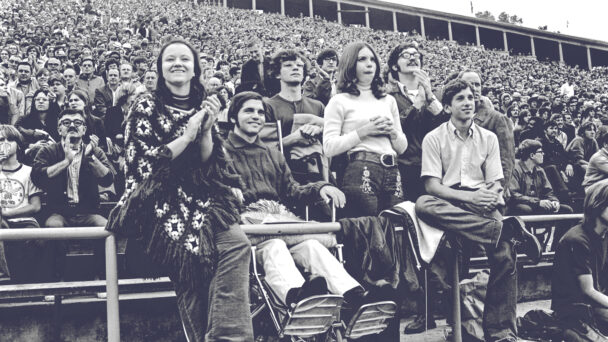
In a New Memoir, Disabled Alum Reflects on a Remarkable Life

Word Search: ‘Big (Red) Names’
This month’s featured titles include a feminist history of crossword puzzles, a praised literary debut, and a chick lit novel set in Napa
Did you know that Cornell has an online book club? Check it out!
For more titles by Big Red authors, peruse our previous round-ups .
Have you published a book you'd like to submit? Scroll down for details!
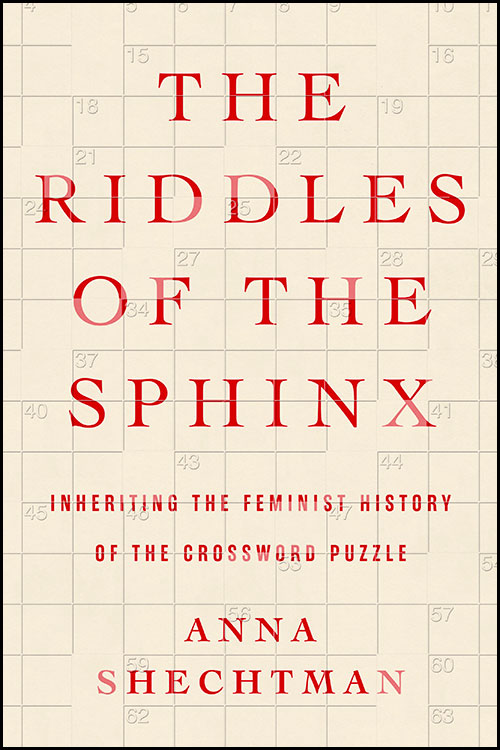
The Riddles of the Sphinx
Anna Shechtman
In addition to being an academic fellow who’ll join the Arts & Sciences faculty in fall 2024, Shechtman is a star in the world of wordplay.
She published her first New York Times crossword at age 19; went on to work for the paper’s famed puzzle editor, Will Shortz; and helped launch the current incarnation of crosswords in the New Yorker .
Now, she has published a general-audience book on crosswords and their feminist history.
In what Kirkus praises as “a forthright self-portrait and perceptive cultural critique,” she interweaves the story of women’s contributions to puzzling—from the 1920s “crossword craze” onward—with a memoir of her own battle with anorexia, during which constructing puzzles offered both a mental respite and a measure of control.
“To write a good crossword clue—a hard clue, one that frequent solvers will recognize because it’s appended with a question mark, signaling its deception—the puzzle-maker has to loosen a word or phrase from its common set of associations,” Shechtman observes.
“She has to unsettle its forms—attending to the chance encounters between synonyms and homonyms, idioms and clichés—before she can set them down again.”
Andrew Boryga ’13
The New York Times calls Boryga’s debut novel , a literary satire, “energetic and deeply satisfying.” His protagonist is Javi Perez, a Puerto Rican writer from the Bronx who rises from poverty and family tragedy to a prestigious university and professional success—in large part because of his deft manipulation of how others view him as a victim.
That status of victimhood—fueled by Javi’s skill at weaving a convenient and compelling narrative—becomes not only the source of his power, but the crux of a moral quandary and his potential undoing.
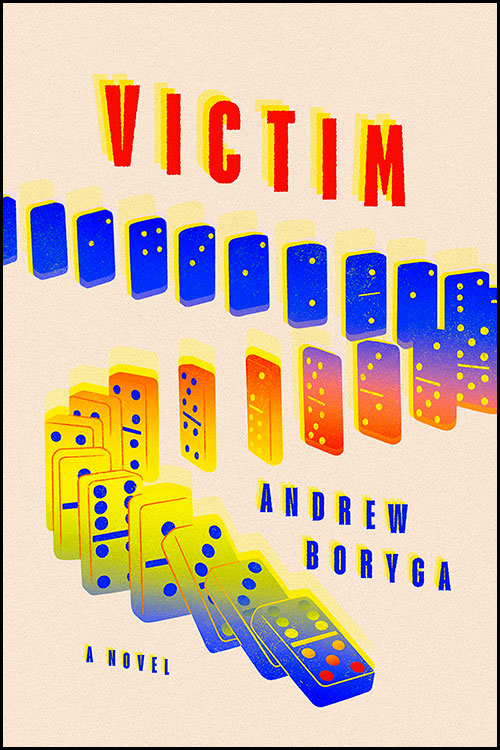
“It’s a thorny and nuanced conversation, but Boryga handles it judiciously,” says the Times .
“His prose is animated and active; his character writing is a crowning achievement. The people who populate the book are, at first glance, so familiar that they could devolve into caricature, but with Boryga’s empathetic prose and startling self-awareness, they come to life with beating hearts and distinct personalities without sacrificing veracity.”
A former English major, Boryga is also a journalist whose work has appeared in the New Yorker and elsewhere.
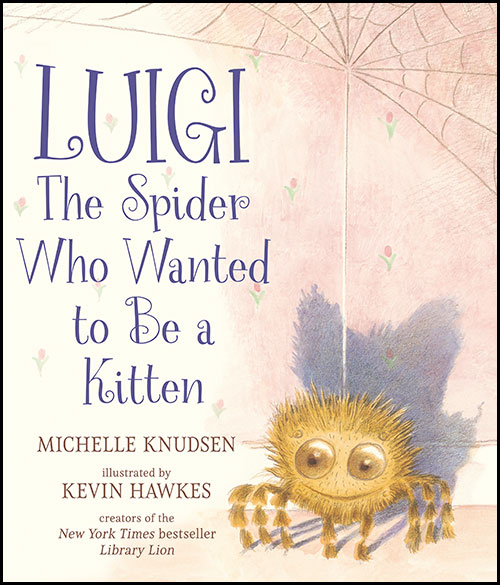
Luigi, the Spider Who Wanted to Be a Kitten
Michelle Knudsen ’95
A prolific author of works for young readers, Knudsen is perhaps best known for her 2006 picture book Library Lion , a New York Times bestseller that Time magazine called one of the 100 best children’s books of all time.
Now, she has re-teamed with its illustrator for the tale of a friendship between an elderly woman and the gentle spider who lives in her house—and desperately wants to be her pet.
School Library Journal dubs the volume “a welcome addition to picture book shelves,” while Booklist says, “The silly, sweet story is packed with humor and marvelous minutiae,” lauding its “message of unconditional acceptance sure to make an arachnid ally out of any young reader.”
School of Instructions
Ishion Hutchinson
Hutchinson, the W.E.B. Du Bois Professor in the Humanities , was born in Jamaica, and his book-length poem draws on his heritage. It highlights the travails of West Indian soldiers serving with the British in the Middle East during World War I, interwoven with the daily life of a schoolboy, named Godspeed, in rural Jamaica in the 1990s.
The work was short-listed for the T.S. Eliot Prize. Hutchinson, a recipient of the National Book Critics Circle Award for Poetry, previously published the collections Far District and House of Lords and Commons .

As a review of School of Instructions in the Times Literary Supplement observes: “The two narratives repeatedly play out alongside one another, so that they appear to be inter-related: The flag falls and / charcoal burners; shipwrights; tailors; clerks; fishermen; / motor engineers; blacksmiths; cooks; mechanics / whisks away in the grass. / Laughter sweeps across the ranks. The chase earns him / his name: Godspeed. ”
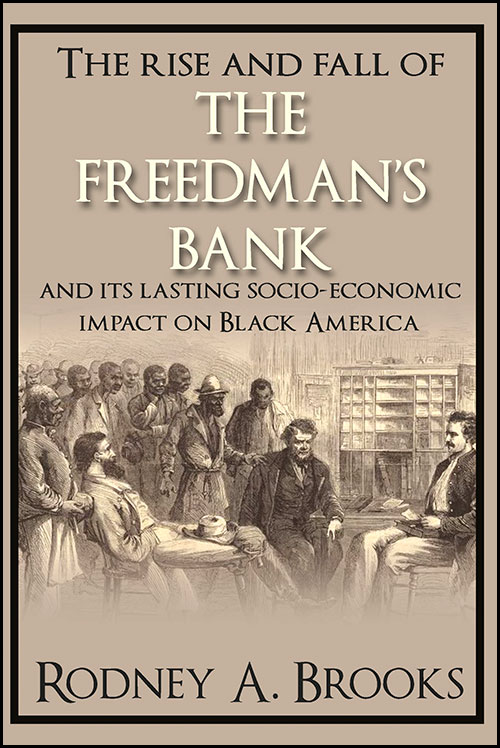
The Rise and Fall of the Freedman’s Bank
Rodney Brooks ’75
In this non-fiction volume , the veteran financial journalist explores the history of the institution that was created to provide a safe place for formerly enslaved people to deposit their savings.
As he writes, the bank quickly expanded and garnered millions of dollars in deposits. But it ultimately failed, costing many account-holders all or most of their funds—and, as the subtitle observes, having a lasting socio-economic impact on Black America.
“It was a sad and devastating end to something that started out with so much hope and promise,” Brooks writes.
“Today economists and historians point to the failure of the Freedman’s Savings Bank as a contributor to this nation’s racial wealth gap, which remains significant and continues to grow. The median wealth of white American families is nearly seven times that of Black families.”
Brooks, a former deputy managing editor at USA Today , addressed that very issue in his previous book: Fixing the Racial Wealth Gap , a guide for Black families on attaining financial security.
Friends in Napa
Sheila Yasmin Marikar ’05
This chick lit novel comes via the publishing imprint of actor and writer Mindy Kaling, who compares it to “drinking a glass of wine with an endlessly witty, scandalous friend.”
The plot follows a wealthy couple who invite four of their college besties for a reunion weekend at their mansion in California wine country.
The six are ostensibly going to indulge in tastings, gourmet meals, and a luxe winery launch—but inevitably, the gathering reignites old grudges, long-held desires, and even simmering violence.

Friends in Napa is the second novel for Marikar, following a coming-of-age tale titled The Goddess Effect .
The former history major is also a journalist whose work has appeared in such venues as the New Yorker , the Economist , and Fortune ; a profile she wrote for the New York Times Magazine, headlined “The Fed-Up Chef,” ran in the 2021 edition of Best American Food Writing .
To submit your book for consideration, email cornellians@cornell.edu . Please note that to be included in our listings of new titles, books must be recently published by a conventional publisher—not self published, pay-to-publish, publish on demand, or similar—and be of interest to a general audience. Books not featured will be forwarded to Class Notes.
Published May 13, 2024
Leave a Comment Cancel reply
Once your comment is approved, your email address will not be published. Required fields are marked *
Class Year = 48 && event.charCode = 80" />
Save my name, email, and class year in this browser for the next time I comment.
Other stories You may like

I Want to See Women in STEM—So I Wrote a Book About It
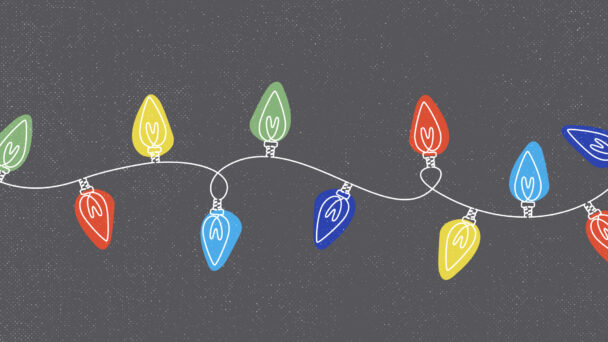
- Ask the Expert
Handy Holiday Decorating Tips from a Big Red Designer
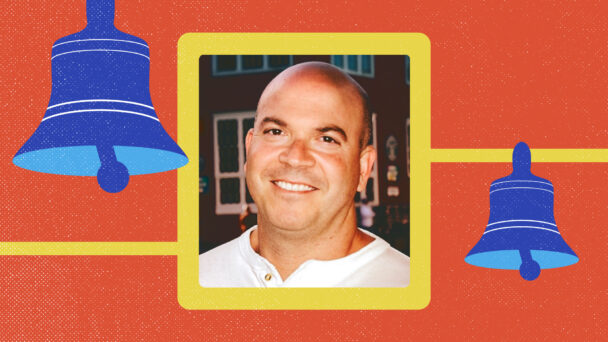
Remember Applying to College? Now It’s Your Kids’ Turn
Edgar Allan Poe: the Birthplace of a Literary Master
This essay about Edgar Allan Poe focuses on the significance of his birthplace, Boston, Massachusetts, in shaping his literary career. Although Poe is more commonly associated with cities like Baltimore and Richmond, his early years in Boston—a major cultural hub during the early 19th century—played a crucial role in developing his themes of horror and psychological depth. The essay explores how Boston’s vibrant literary scene and its historical context influenced Poe’s creative formation. Despite later criticisms of Boston’s literary culture, the city’s influence is evident in Poe’s narrative style, which blends historical depth with gothic elements. The essay concludes by reflecting on how Poe’s roots in Boston helped forge his path as a master of macabre literature, illustrating the lasting impact of one’s beginnings on their artistic development.
How it works
Edgar Allan Poe, a name synonymous with the macabre and the mysterious, has intrigued and captivated readers and scholars alike for over a century. Best known for his haunting tales and poems, Poe’s influence on the genres of horror and detective fiction is monumental. But where did this enigmatic figure begin his life? The story of Poe’s birthplace is not just a fact about geography; it is a window into the early influences that shaped one of America’s most iconic literary figures.
Edgar Allan Poe was born on January 19, 1809, in the bustling coastal city of Boston, Massachusetts. At the time, Boston was a significant cultural and economic hub, teeming with the activity that would deeply influence Poe’s later works. The son of itinerant actors, Elizabeth Arnold Hopkins Poe and David Poe Jr., Edgar’s early life was steeped in the dramatic and the performative, elements that shine through in his intensely atmospheric storytelling.
Poe’s Bostonian roots are often overshadowed by his later associations with cities like Baltimore, Philadelphia, and Richmond, each of which played pivotal roles in his literary career. However, Boston’s cultural landscape during the early 19th century was fertile ground for a budding writer. The city was alive with the stirrings of Romanticism, a literary movement that celebrated emotion, the sublime in nature, and the profound depths of human experience—themes that Poe would later explore with a gothic twist.
Despite his departure from Boston at a young age, the city’s influence lingered in his works. Poe’s complex relationship with his birthplace is evident in his writings about the city itself and his occasional criticism of its literary culture, which he once famously disparaged. This tension between Poe and Boston might have stemmed from his struggles to gain recognition in the city’s literary circles, which were dominated by figures such as Ralph Waldo Emerson and Henry Wadsworth Longfellow, poets whose optimistic transcendental visions starkly contrasted with Poe’s darker, more introspective style.
Poe’s early life was marred by tragedy. His father abandoned the family in 1810, and his mother died a year later, leaving Edgar, his brother William Henry Leonard Poe, and his sister Rosalie Poe orphaned. Edgar was taken in by John and Frances Allan of Richmond, Virginia, which marked the beginning of his Southern ties that would dominate much of his literary persona. It is poignant that Poe’s birth in Boston was surrounded by the theatrical and the transient—themes that would permeate his works such as “The Fall of the House of Usher” and “The Tell-Tale Heart.”
Interestingly, while Poe is often associated with themes of death and loss, his birth city of Boston was also the cradle of his creative inception. It was here that Poe’s aesthetic sensibilities began to take shape, influenced by the city’s rich mix of revolutionary history and emerging American literary culture. This blend of historical depth and cultural vibrancy undoubtedly seeped into Poe’s narrative style, characterized by its attention to detail and psychological complexity.
In reflecting on Poe’s birthplace, we gain more than a mere biographical fact; we see how the cultural and historical context of early 19th-century Boston could have contributed to the molding of a literary genius. The city’s blend of tradition and transition mirrors Poe’s own works, which bridge the gap between the known and the mysterious, the real and the surreal.
Thus, understanding Edgar Allan Poe’s Bostonian origins offers us richer insights into the roots of his literary genius. The city was more than his birthplace—it was the beginning of a path that would lead him to become a master of the macabre, whose works remain vital in the corridors of American literature. As much as he might have critiqued his birth city, it is undeniable that Boston’s imprint on Poe was indelible, influencing the labyrinthine complexities of his characters and the eerie settings of his tales. Through this lens, we not only appreciate Poe’s writings but also recognize the profound impact of one’s beginnings on their artistic trajectory.
In sum, Edgar Allan Poe’s birth in Boston is not just a footnote in his life but a foundational element that influenced his development as a writer. As we revisit his birthplace, we are reminded of the complexity of cultural identity and the profound ways in which our places of origin shape us, just as they shaped Poe, into the individuals we become.
Cite this page
Edgar Allan Poe: The Birthplace of a Literary Master. (2024, May 12). Retrieved from https://papersowl.com/examples/edgar-allan-poe-the-birthplace-of-a-literary-master/
"Edgar Allan Poe: The Birthplace of a Literary Master." PapersOwl.com , 12 May 2024, https://papersowl.com/examples/edgar-allan-poe-the-birthplace-of-a-literary-master/
PapersOwl.com. (2024). Edgar Allan Poe: The Birthplace of a Literary Master . [Online]. Available at: https://papersowl.com/examples/edgar-allan-poe-the-birthplace-of-a-literary-master/ [Accessed: 13 May. 2024]
"Edgar Allan Poe: The Birthplace of a Literary Master." PapersOwl.com, May 12, 2024. Accessed May 13, 2024. https://papersowl.com/examples/edgar-allan-poe-the-birthplace-of-a-literary-master/
"Edgar Allan Poe: The Birthplace of a Literary Master," PapersOwl.com , 12-May-2024. [Online]. Available: https://papersowl.com/examples/edgar-allan-poe-the-birthplace-of-a-literary-master/. [Accessed: 13-May-2024]
PapersOwl.com. (2024). Edgar Allan Poe: The Birthplace of a Literary Master . [Online]. Available at: https://papersowl.com/examples/edgar-allan-poe-the-birthplace-of-a-literary-master/ [Accessed: 13-May-2024]
Don't let plagiarism ruin your grade
Hire a writer to get a unique paper crafted to your needs.

Our writers will help you fix any mistakes and get an A+!
Please check your inbox.
You can order an original essay written according to your instructions.
Trusted by over 1 million students worldwide
1. Tell Us Your Requirements
2. Pick your perfect writer
3. Get Your Paper and Pay
Hi! I'm Amy, your personal assistant!
Don't know where to start? Give me your paper requirements and I connect you to an academic expert.
short deadlines
100% Plagiarism-Free
Certified writers

IMAGES
VIDEO
COMMENTS
Literary horror is at its best when writers play with readers' expectations to create something that is at once familiar enough but also wildly original. Scott Hawkins draws from a wide range of influences for The Library at Mount Char — there are hints of Gaiman, a bit of Lovecraft, a little King. Hawkins takes inspiration before ...
Horror literature has roots in religion, folklore, and history; focusing on topics, fears, and curiosities that have continuously bothered humans in both the 12 th and 21 st centuries alike. Horror feeds on audience's deepest terrors by putting life's most frightening and perplexing things—death, evil, supernatural powers or creatures ...
This week, Victor LaValle's new novel The Changeling hits shelves.This is only the most recent installment in a long series of great works of literary horror, and as a reader of primarily literary fiction, but with a major soft spot for, as they say, "genre," its release has me thinking about horror and high-brow literary fiction and the ways in which they intersect.
Horror is one of the fiction genres that includes paranormal beyond scientific knowledge. Although horror means strong feelings of fear, fright, shock, or terror, it falls into the literary realm as a type of narrative. It evokes strong feelings of shock, terror, revulsion, fear, or outrage when readers go through such a narrative.
Discover the horror genre and its elements, and learn from seven classic horror novels that will keep you on the edge of your seat.
Horror in literature has existed since the ancient civilizations of Greece and Rome. Back then, authors explored themes such as death, demons, the afterlife, and spirits. Euripides is the perfect example of this. In his play Hippolytus, the author addresses the lack of empathy and jealousy as attitudes that can kill us.
"Literary" is a slippery and ever-changing term, and it's not easy to whittle a list like this down to 10. Nevertheless, here's my attempt: the 10 best literary horror books.
horror story, a story in which the focus is on creating a feeling of fear.Such tales are of ancient origin and form a substantial part of the body of folk literature.They can feature supernatural elements such as ghosts, witches, or vampires, or they can address more realistic psychological fears.In Western literature the literary cultivation of fear and curiosity for its own sake began to ...
Horror is a genre of fiction that is intended to disturb, frighten or scare. Horror is often divided into the sub-genres of psychological horror and supernatural horror, which are in the realm of speculative fiction.Literary historian J. A. Cuddon, in 1984, defined the horror story as "a piece of fiction in prose of variable length... which shocks, or even frightens the reader, or perhaps ...
Horror, in particular, is a fascinating conversation to have, not just because I like it so much, but because of all the genres, horror probably has the most stigma and shame swirling in its depths (though erotica is in the running). What this leads to is a lot of skewing and denial, muddying otherwise clear waters until it becomes much more ...
By Otherppl with Brad Listi. May 26, 2023. In the latest "Craftwork" episode, a deep-dive conversation about the horror genre with author and story expert John Truby. His latest book, The Anatomy of Genres: How Story Forms Explain the Way the World Works, is available from Picador. Subscribe and download the episode, wherever you get your ...
Horror is a genre of literature, film, and television that is meant to scare, startle, shock, and even repulse audiences. The key focus of a horror novel, horror film, or horror TV show is to elicit a sense of dread in the reader through frightening images, themes, and situations. In the horror genre, story and characters are just as important ...
The most unnerving and disturbing novels are often those books that leave room for interpretation and uncertainty. Here, the acclaimed Irish novelist Sue Rainsford selects five frightening works of literary horror, by authors who are masters of the unsettling implication—because nothing is quite so scary as what you dream up to fill the voids. ...
Horror in literature, film, and media serves a variety of functions for its audience, creators, and society as a whole. One primary function of horror is to entertain by eliciting an emotional and physiological response. Horror stories and media present tension, suspense, and frightful imagery, which engage the audience's primal instincts and ...
By contrast, horror is the feeling of revulsion that usually follows a frightening sight, sound, or otherwise experience. ... Literary Gothic Figure 20 from Charles Darwin's The Expression of the Emotions in Man and Animals (1872). Caption reads "FIG. 20.—Terror, from a photograph by Dr. Duchenne." ...
As the tension ratchets up, each of the guests is confronted by inexplicable phenomena. Listed by Stephen King as one of the best horror books of the 20th century, The Haunting of Hill House is a must-read for any fan of the genre. 15. Psycho by Robert Bloch (1959) If you're into horror, you're no stranger to Psycho.
Literary horror means The Guardian might review it and call it a thriller and it goes in the main fiction section of the bookstore instead of the Horror ghetto. It's mostly used by people who want to continue the stigma against genre fiction but are forced to admit that a certain work of horror fiction is good.
Horror Novels and Novelists By NASRULLAH MAMBROL on March 12, 2019 • ( 0). By the end of the nineteenth century, writers interested in exploring supernatural themes had abandoned the mode of gothic fiction pioneered by eighteenth century English novelist Horace Walpole. Walpole and his imitators had exploited such props as medieval ruins and gloomy manor houses riddled with secret passages ...
Horror is a genre of storytelling intended to scare, shock, and thrill its audience. Horror can be interpreted in many different ways, but there is often a central villain, monster, or threat that is often a reflection of the fears being experienced by society at the time. This person or creature is called the "other," a term that refers to ...
Dahl wrote The Landlady as a ghost story, scowled at it, then changed the ending. Wise move. 5. The Forbidden by Clive Barker. When Books of Blood was unleashed in 1984, Stephen King said: "I ...
Horror is a literary device used to create feelings of fear, dread, and shock in the audience. It taps into the primal fears and darkest imaginations of readers, often pushing them to confront terrifying scenarios that linger in their minds long after the story ends. Horror can manifest through various elements such as setting, plot, characters ...
The History The Beginning. Although horror fiction has roots in ancient storytelling (think of folklore and religious traditions), what we consider modern horror can be traced back to the advent of gothic literature in the late 18 th and 19 th centuries. The genre itself was named for the crumbling ruins of medieval and Gothic castles.
Since the late 1980s, the assumption that literary and cinematic horror texts are low cultural forms unworthy of serious critical attention has been successfully challenged on a number of fronts. The essays in this book are therefore no longer constrained by the requirement to bring horror into the realm of scholarly concern.
Horror is a fascinating genre because it takes the fears of humanity and experiences in the dark corners of the psyche and examines them in the open as a powerfully imaginative literary genre. As ...
As the king of horror, almost all the 66 Stephen King books ranked among the best in the genre. When he authored Carrie, his first novel, in 1974, his name immediately skyrocketed to one of the most recognizable in the horror genre — both for his novels and short stories.Studios noticed Stephen King's literary talent and offered movie adaptations immediately with Carrie.
Victim. Andrew Boryga '13. The New York Times calls Boryga's debut novel, a literary satire, "energetic and deeply satisfying."His protagonist is Javi Perez, a Puerto Rican writer from the Bronx who rises from poverty and family tragedy to a prestigious university and professional success—in large part because of his deft manipulation of how others view him as a victim.
This essay about Edgar Allan Poe focuses on the significance of his birthplace, Boston, Massachusetts, in shaping his literary career. Although Poe is more commonly associated with cities like Baltimore and Richmond, his early years in Boston—a major cultural hub during the early 19th century—played a crucial role in developing his themes of horror and psychological depth.
32 likes, 1 comments - ccaclass2027 on May 14, 2023: "Hey people :) Im Keturah and I will be Majoring in Writing and literature. I love psychological Horror and Drama Movies, Classic and li...". Hey people :) Im Keturah and I will be Majoring in Writing and literature.